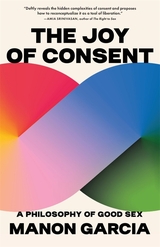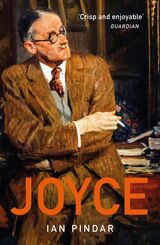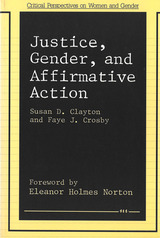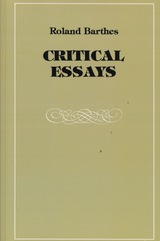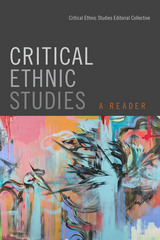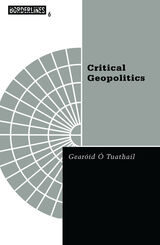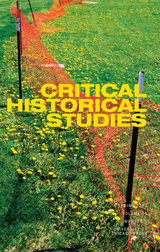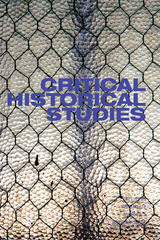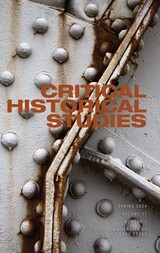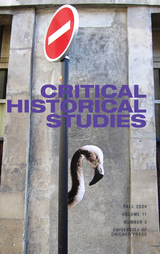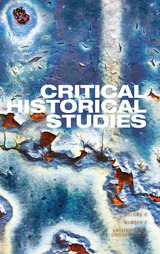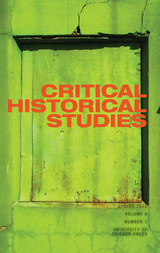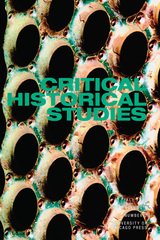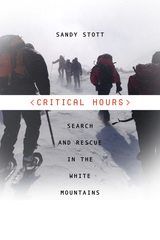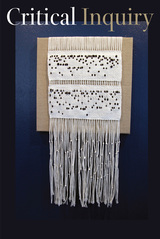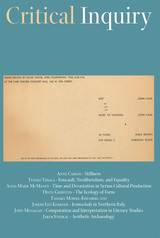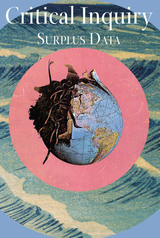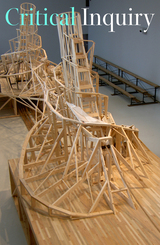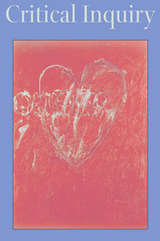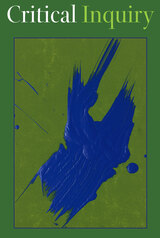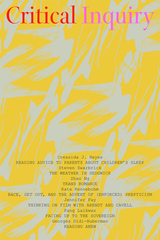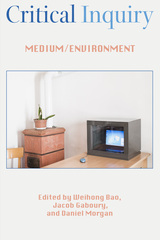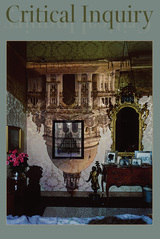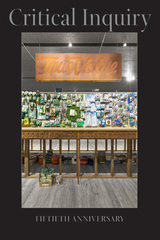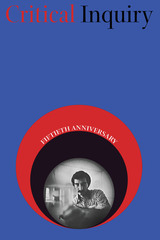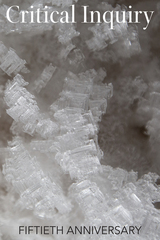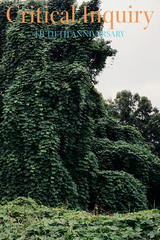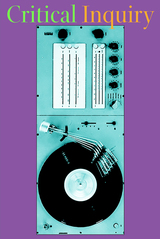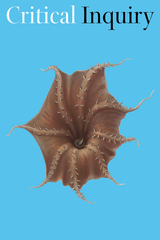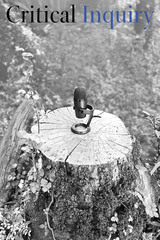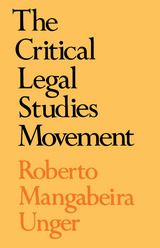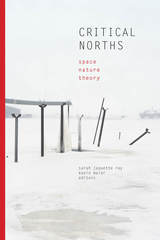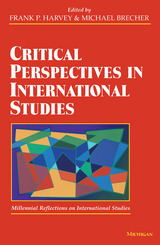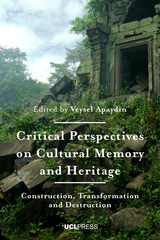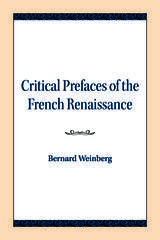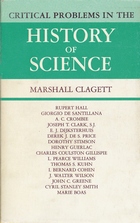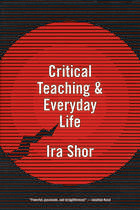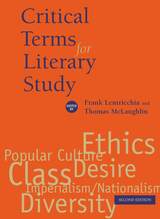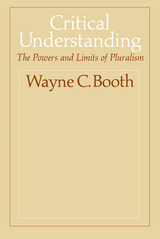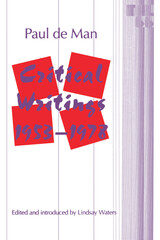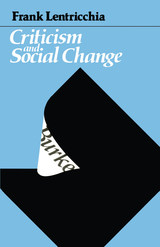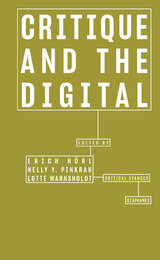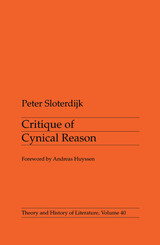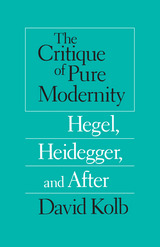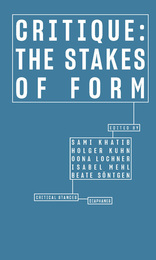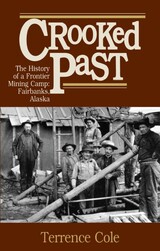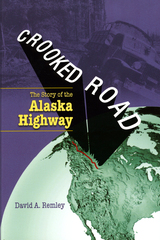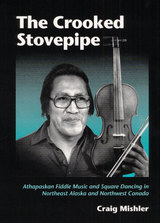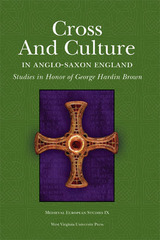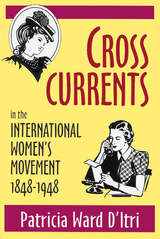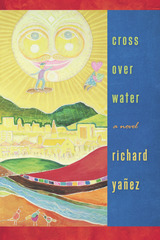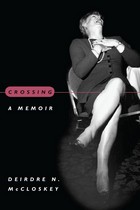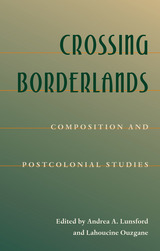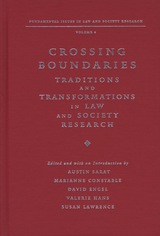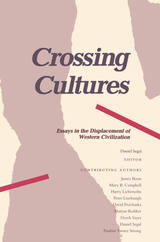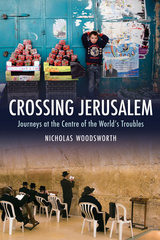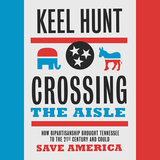 A Critical Dictionary of the French Revolution
François Furet
Harvard University Press, 1989 Two centuries later, the French Revolution—that extraordinary event that founded modern democracy—continues to give rise to a reevaluation of essential questions. The ambition of this magnificent volume is not only to present the reader with the research of a wide range of international scholars on those questions, but also to bring one into the heart of the issues still under lively debate.
Its form is as original as its goal: neither dictionary, in the traditional sense of the word, nor encyclopedia, it is deliberately limited to some ninety-nine entries organized alphabetically by key words and themes under five major headings: events, including the Estates General and the Terror; actors, such as Marie Antoinette, Marat, and Napoleon Bonaparte; institutions and creations, among them Revolutionary Calendar and Suffrage; ideas, covering, for example, Ancien Régime, the American Revolution, and Liberty; and historians and commentators, from Hegel to Tocqueville. In addition, there are synoptic indexes of names and themes that give the reader easy access to the entire volume as well as a key to its profound coherence.
What unifies all the varied topics brought together in this dictionary is their authors’ effort to be “critical.” As such, the book rejects the dogmatism of closed systems and definitive interpretations. Its aim is less to make a complete inventory of the findings of the history of the French Revolution than to take stock of what remains problematical about those findings; this work thus offers the additional special quality of incorporating the rich historiographical literature unceasingly elaborated since 1789.
With A Critical Dictionary of the French Revolution, François Furet and Mona Ozouf invite the reader to recross the first two centuries of French democracy in order to gain a better understanding of the origins of the world in which we live today.
 Critical Digital Art History: Interface and Data Politics in the Post-Digital Era
Edited by Amanda Wasielewski and Anna Näslund
Intellect Books, 2024 Approaching the use of digital technology in art history from a theoretical perspective.
Digital art history has often aligned itself with the practical concerns of digital technology and the responsibilities of art institutions and associated institutional roles such as collection managers, information specialists, curators, and conservators. This emphasis on practicalities and implementation, while undeniably important, has often left little room for critical examination of the broader implications of digital technology and computational methodologies in art history.
A long-standing concern of the field—and a major focal point of this book—is museum and collecting practices in the digital era. While there is a certain degree of continuity in the field, there are also important shifts and changes to address—namely, the widespread uptake of artificial intelligence tools and increased attention to both the broader historical and societal aspects of the use of digital repositories and tools. This anthology seeks to address the dearth of critical reflection by critically assessing specific case study examples and considering the political dimensions associated with large-scale digitization and the application of digital tools within museums and collection management.
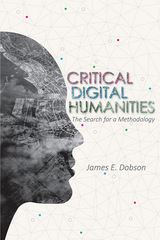 Critical Digital Humanities: The Search for a Methodology
James E. Dobson
University of Illinois Press, 2019 Can established humanities methods coexist with computational thinking? It is one of the major questions in humanities research today, as scholars increasingly adopt sophisticated data science for their work. James E. Dobson explores the opportunities and complications faced by humanists in this new era. Though the study and interpretation of texts alongside sophisticated computational tools can serve scholarship, these methods cannot replace existing frameworks. As Dobson shows, ideas of scientific validity cannot easily nor should be adapted for humanities research because digital humanities, unlike science, lack a leading-edge horizon charting the frontiers of inquiry. Instead, the methods of digital humanities require a constant rereading. At the same time, suspicious and critical readings of digital methodologies make it unwise for scholars to defer to computational methods. Humanists must examine the tools--including the assumptions that went into the codes and algorithms--and questions surrounding their own use of digital technology in research. Insightful and forward thinking, Critical Digital Humanities lays out a new path of humanistic inquiry that merges critical theory and computational science.
 A Critical Encounter: Bataille and Blanchot: Exploring the Literary Real
Zoe Angeli
University of London Press, 2022 This volume addresses recent contemporary French thought on literary realism.
Few terms have been more prone and resistant to definition than the “literary” and the “real.” Bringing them together under the contrivance of the “literary real” sheds new light on the understanding of the terms real, being, existence, the literary, literature, and writing.
A Critical Encounter addresses two questions that are constantly entwined: first, what kind of real is involved and disclosed in writing—and how does this differ from conventional definitions and representations of reality? Second, what is writing’s own mode of being, in what way is it particular, and what are the implications of this particularity? Consulting the writings of French theorists Georges Bataille and Maurice Blanchot, this volume investigates the real effect that the existence of literature has on our lives: how it challenges and reconfigures the way we perceive ourselves, our place in the world, and our relations with others.
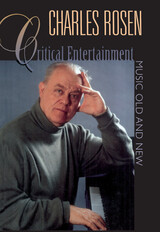 Critical Entertainments: Music Old and New
Charles Rosen
Harvard University Press, 2000 An extraordinarily gifted musician and writer, Charles Rosen is a peerless commentator on the history and performance of music. Critical Entertainments brings together many of the essays that have established him as one of the most influential and eloquent voices in the field of music in our time.
These essays cover a broad range of musical forms, historical periods, and issues—from Bach through Brahms to Carter and Schoenberg, from contrapuntal keyboard music to opera, from performance practices to music history as a discipline. They revisit Rosen’s favorite subjects and pursue some less familiar paths. They court controversy (with strong opinions about performance on historical instruments, the so-called New Musicology, and the alleged “death” of classical music) and offer enlightenment on subjects as diverse as music dictionaries and the aesthetics of stage fright. All are unified by Rosen’s abiding concerns and incomparable style. In sum, Critical Entertainments is a treasury of the vast learning, wit, and insight that we have come to expect from this remarkable writer. It will delight all music lovers.
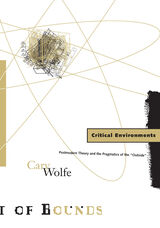 Critical Environments: Postmodern Theory and the Pragmatics of the “Outside”
Cary Wolfe
University of Minnesota Press, 1998 Argues for a pragmatist orientation for postmodern theory. Taking up the problem that has stalled contemporary theory—its treatment of the object of knowledge, the “outside,” as nothing but what a particular discourse makes of it—this book suggests a solution: a reinvigorated, posthumanist form of pragmatism. Author Cary Wolfe investigates three of the most significant strains of postmodern theory (pragmatism, systems theory, and poststructuralism) and shows how each confronts the specter of an “outside” not wholly constituted by discourses, language games, and interpretive communities. He then assesses these confrontations in light of an essentially pragmatic view of theory, one that constantly asks what practical and material difference it makes, and to whom, how these issues are negotiated. Wolfe concludes by comparing the pragmatist view of the relation of theory to politics with important work in contemporary post-Marxism. In arguing for a pragmatist orientation for postmodern theory, Wolfe deploys continental critical theory to avoid the nativism and “American exceptionalism” that has traditionally accompanied pragmatist philosophy. Unique in its collation of major theorists rarely considered together, Critical Environments incorporates detailed discussions of the work of Richard Rorty, Walter Benn Michaels, Stanley Cavell, Humberto Maturana, Francisco Varela, Niklas Luhmann, Michel Foucault, Gilles Deleuze, Fredric Jameson, and others, and ranges across fields from feminist philosophy of science to the theory of ideology. Wolfe draws on recent work in systems theory to articulate a properly postmodern pragmatism. In doing so, he offers American readers a detailed introduction to systems theory, which he situates and critiques in the broader context of philosophical pragmatism, the theory of democratic social antagonism, and materialist theories of ideology, knowledge, and power. An answer to the widespread charge of relativism leveled against postmodern theory, his work will enhance and inspire new kinds of critical thought.
Critical Essays
Roland Barthes
Northwestern University Press, 1972 The essays in this volume were written during the years that its author's first four books were published in France. They chart the course of Barthe's criticism from the vocabularies of existentialism and Marxism (reflections on the social situation of literature and writer's responsibility before History) to a psychoanalysis of substances (after Bachelard) and a psychoanalytical anthropology (which evidently brought Barthes to his present terms of understanding with Levi-Strauss and Lacan).
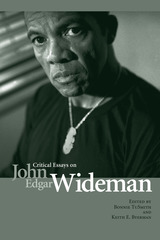 Critical Essays on John Edgar Wideman
Bonnie TuSmith
University of Tennessee Press, 2006 John Edgar Wideman is one of the most prominent African American writers today. He is the first author to have been awarded the PEN/Faulkner Award for Fiction twice-once in 1984 for Sent for You Yesterday and again in 1990 for Philadelphia Fire. His memoir, Fatheralong, was a finalist for the National Book Award. Yet, despite all of Wideman's accolades and renown, there are only three full-length studies on his work to date. TuSmith's and Byerman's Critical Essays on John Edgar Wideman takes a bold step in expanding Wideman scholarship. This volume is an indispensable study of Wideman's oeuvre, covering the full range of his career by addressing the key features of his fiction and nonfiction from 1967 to the present.The essays in this book reflect the most advanced thinking on Wideman's prolific, extraordinary art. The collection features at least one article on each major work and includes the voices of both well-established and emerging scholars. Though their critical perspectives are diverse, the contributors place Wideman squarely at the center of contemporary African American literature as an exemplar of postmodern approaches to literary art. Several position Wideman within the context of his predecessors-Wright, Baldwin, Ellison-and within a larger cultural context of music and collective history. The essays examine Wideman's complex style and his blending of African and Western cosmologies and aesthetics, the use of personal narrative, and his imaginative revisioning of forgotten historical events. These insightful analyses cover virtually every stage of Wideman's career and every genre in which he has written. A detailed bibliography of Wideman's work is also included.Informed yet accessible, this collection will be a rich source of information and intellectual stimulus for teachers, students, and scholars in American and African American literature, as well as general readers interested in Wideman's multilayered and challenging texts.
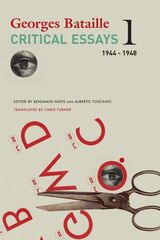 Critical Essays: Volume 1: 1944–1948
Georges Bataille
Seagull Books, 2023 This first book in a three-volume collection of Georges Bataille’s essays introduces English readers to his philosophical and critical writings.
In the aftermath of the Second World War, French thinker and writer Georges Bataille forged a singular path through the moral and political impasses of his age. In 1946, animated by “a need to live events in an increasingly conscious way,” and to reject any compartmentalization of intellectual life, Bataille founded the journal Critique. Adopting the format of the review essay, he surveyed the post-war cultural landscape while advancing his reflections on excess, non-knowledge, and the general economy. Focusing on literature as a mode of sovereign uselessness, he tackled prominent and divisive figures such as Henry Miller and Albert Camus.
In keeping with Critique’s mission to explore the totality of human knowledge, Bataille’s articles did not just focus on the literary but featured important reflections on the science of sexuality, the Chinese Revolution, and historical accounts of drunkenness, among other matters. Throughout, he was attuned to how humanity would deal with the excessive forces of production and destruction it had unleashed, his aim being a way of thinking and living that would inhabit that excess.
This is the first of three volumes collecting Bataille’s post-war essays. Beginning with an article on Nietzsche and fascism written shortly after the liberation of Paris and running to the end of 1948, these texts make available for the first time in English the systematic diversity of Bataille’s post-war thought.
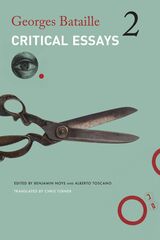 Critical Essays: Volume 2: 1949–1951
Georges Bataille
Seagull Books, 2024 An introduction for English-language readers to Georges Bataille’s postwar philosophical and critical writings.
In the aftermath of World War II, French thinker and writer Georges Bataille forged a singular path through the moral and political impasses of his age. In 1946, animated by “a need to live events in an increasingly conscious way,” and to reject any compartmentalization of intellectual life, Bataille founded the journal Critique. Continuing the publication of his postwar writings, this second book in a three-volume collection of Bataille’s work collects his essays and reviews from the years 1949 to 1951.
In this period of intellectual isolation and intense reflection, Bataille developed and refined his genealogy of morality through a sustained reflection on the fate of the sacred in the modern world. He offered a critique of the limits of existing morality, especially in its denial of excess, while sketching the lineaments of a new hyper-morality. Bataille’s wide-ranging reflections are true to the intellectual mission of Critique, which he founded as a space open to the broadest considerations of the present. As well as discussing significant figures like Samuel Beckett, André Gide, and René Char, Bataille also offers fascinating reflections on American politics, Nazism, existentialism, materialism, and play.
The connecting thread in these diverse essays remains Bataille’s concern with the extremes of human experience and the possibilities of transcending the limits of societies founded on utility and restraint. His writings remain a provocative incitement to rethink the boundaries we impose on expression and existence.
 Critical Essays, Volume I
Dionysius of Halicarnassus
Harvard University Press, 1974 A master of ancient Greek prose styles.
Dionysius of Halicarnassus had migrated to Rome by 30 BC, where he lived until his death some time after 8 BC, writing his Roman Antiquities and teaching the art of rhetoric and literary composition.
Dionysius’ purpose, both in his own work and in his teaching, was to re-establish the classical Attic standards of purity, invention, and taste in order to reassert the primacy of Greek as the literary language of the Mediterranean world. He advocated the minute study of the styles of the finest prose authors of the fifth and fourth centuries BC, especially the Attic orators. His critical essays on these and on the historian Thucydides represent an important development from the somewhat mechanical techniques of rhetorical handbooks to a more sensitive criticism of individual authors. Illustrating his analysis with well-chosen examples, Dionysius preserves a number of important fragments of Lysias and Isaeus.
The essays on those two orators and on Isocrates, Demosthenes, and Thucydides comprise Volume I of this edition. Volume II contains three letters to his students; a short essay on the orator Dinarchus; and his finest work, the essay On Literary Composition, which combines rhetoric, grammar, and criticism in a manner unique in ancient literature.
The Loeb Classical Library also publishes a seven-volume edition of Roman Antiquities, by Dionysius of Halicarnassus, a history from earliest times to 264 BC.
 Critical Essays, Volume II
Dionysius of Halicarnassus
Harvard University Press, 1974 A master of ancient Greek prose styles.
Dionysius of Halicarnassus had migrated to Rome by 30 BC, where he lived until his death some time after 8 BC, writing his Roman Antiquities and teaching the art of rhetoric and literary composition.
Dionysius’ purpose, both in his own work and in his teaching, was to re-establish the classical Attic standards of purity, invention, and taste in order to reassert the primacy of Greek as the literary language of the Mediterranean world. He advocated the minute study of the styles of the finest prose authors of the fifth and fourth centuries BC, especially the Attic orators. His critical essays on these and on the historian Thucydides represent an important development from the somewhat mechanical techniques of rhetorical handbooks to a more sensitive criticism of individual authors. Illustrating his analysis with well-chosen examples, Dionysius preserves a number of important fragments of Lysias and Isaeus.
The essays on those two orators and on Isocrates, Demosthenes, and Thucydides comprise Volume I of this edition. Volume II contains three letters to his students; a short essay on the orator Dinarchus; and his finest work, the essay On Literary Composition, which combines rhetoric, grammar, and criticism in a manner unique in ancient literature.
The Loeb Classical Library also publishes a seven-volume edition of Roman Antiquities, by Dionysius of Halicarnassus, a history from earliest times to 264 BC.
Critical Ethnic Studies: A Reader
Critical Ethnic Studies Editorial Collective
Duke University Press, 2016 Building on the intellectual and political momentum that established the Critical Ethnic Studies Association, this Reader inaugurates a radical response to the appropriations of liberal multiculturalism while building on the possibilities enlivened by the historical work of Ethnic Studies. It does not attempt to circumscribe the boundaries of Critical Ethnic Studies; rather, it offers a space to promote open dialogue, discussion, and debate regarding the field's expansive, politically complex, and intellectually rich concerns. Covering a wide range of topics, from multiculturalism, the neoliberal university, and the exploitation of bodies to empire, the militarized security state, and decolonialism, these twenty-five essays call attention to the urgency of articulating a Critical Ethnic Studies for the twenty-first century.
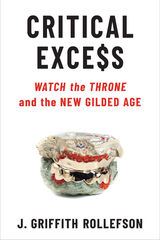 Critical Excess: Watch the Throne and the New Gilded Age
J. Griffith Rollefson
University of Michigan Press, 2021 Jay-Z and Kanye West’s 2011 Watch the Throne is a self-avowed “luxury rap” album centered on Eurocentric conceptions of nobility, artistry, and haute couture. Critical Excess performs a close reading of the sonic and social commentary on this album, examining how the album alternately imagines and critiques the mutually reinforcing ideas of Europe, nobility, old money, art, and their standard bearer, whiteness. Reading the album alongside Black critical theory and work on the prophetic nature of music, Rollefson argues that through their performance of black excellence, opulence, and decadence, Jay-Z and Kanye West poured gas on the white resentment of the Obama presidency—a resentment that would ultimately spill over into public life, make audible the dog whistling of the Far Right, and embolden white supremacists to come out from under their rocks. Ultimately, Rollefson argues, Jay-Z and Kanye West’s performance of what Rollefson calls “critical excess” on this hip hop album exceeds the limits of conspicuous consumption and heralds the final stage of late capitalism—“the New Gilded Age.”
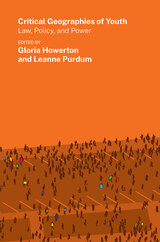 Critical Geographies of Youth: Law, Policy, and Power
Gloria Howerton
West Virginia University Press, 2023 Scholarly and activist perspectives on identities often overlooked in the study of geography: youth and age. Young people will bear the brunt of the impacts of present and emerging crises occurring at all scales, from the national to the global. This volume brings together scholars and activists from various backgrounds to analyze youth interactions with law and politics, focusing specifically on the US legal landscape. It uses the lens of youth geographies to consider how legal and political systems shape our spaces, and provides leading-edge perspectives through case studies of child labor, compulsory education, asylum claims, criminalization of youth, youth activism, and more. Of special interest in this volume is the tension between young people as both objects of law and policy and creative agents of change. Despite being directly affected by law and policy, young people are denied access to many legally sanctioned paths to shape them. Yet youth find ways to work within and mold the social, political, and legal spheres and set the stage for alternative futures.
 A Critical Guide to the Kwangtung Provincial Archives
David Pong
Harvard University Press, 1975 On January 5, 1858, when British and French forces stormed Canton, the British seized a sizable quantity of archival materials belonging to the yamen of high functionaries of Kwangtung. After the documents had served their initial purpose of helping the British in the administration of Canton and in their subsequent dealings with the Chinese, they were stashed away and became mixed up with a much larger bulk of Chinese-language manuscripts in the Chinese Secretary's Office of the British Legation at Peking. For over a century, these important documents of the Opium War period remained unrecognized and were seldom exploited by scholars.
The collection as it stands today contains two thousand items of varying length ranging from a single page to multi-ts’e works, totaling nearly 10,000 folios. Although a few of the documents date back to the last quarter of the 18th century, the majority fall within the first half of the 19th. David Pong presents an extensive and carefully researched list of these documents, as well as an index, a bibliography, a concordance, and a critical introduction. With the aid of this invaluable research guide to a very important collection of archival materials, the Public Record Office has been able to reclassify its rich Chinese-language collection, and scholars will now be able to use these materials far more effectively in the future.
 Critical Heritage Studies and the Futures of Europe
Edited by Rodney Harrison, Nélia Dias, and Kristian Kristiansen
University College London, 2023 This book applies heritage studies to the present and the future of Europe.
Cultural and natural heritage are central to ideas of what Europe and “the European project’” are. Heritage studies were prevalent in the emergence of nation-states in the eighteenth and nineteenth centuries, where they were used to justify differences over which border conflicts were fought. Later, the idea of a “common European heritage” provided a rationale for the development of the European Union. Now, the emergence of “new” populist nationalisms shows how the imagined past continues to play a role in cultural and social governance, while a series of interlinked social and ecological crises are changing the ways that heritage operates, with new discourses and ontologies emerging to reconfigure heritage for the circumstances of the present and the uncertainties of the future.
Critical Historical Studies, volume 10 number 1 (Spring 2023)
The University of Chicago Press
University of Chicago Press Journals, 2023 This is volume 10 issue 1 of Critical Historical Studies. Critical Historical Studies is an interdisciplinary journal devoted to historical reflections on politics, culture, economy, and social life. CHS features research on the implications of socio-economic transformations for cultural, political, and social change. In the broad tradition of Critical Theory, CHS will explore the complex connections between cultural form and socio-economic context and promote a reflexive awareness of the researcher’s own position in the history of global capitalist society. The journal aims to foster interdisciplinary exchange among scholars across the entire range of the social sciences and humanities, and publishes work on all historical eras and regions of the world.
Critical Historical Studies, volume 10 number 2 (Fall 2023)
The University of Chicago Press
University of Chicago Press Journals, 2023 This is volume 10 issue 2 of Critical Historical Studies. Critical Historical Studies is an interdisciplinary journal devoted to historical reflections on politics, culture, economy, and social life. CHS features research on the implications of socio-economic transformations for cultural, political, and social change. In the broad tradition of Critical Theory, CHS will explore the complex connections between cultural form and socio-economic context and promote a reflexive awareness of the researcher’s own position in the history of global capitalist society. The journal aims to foster interdisciplinary exchange among scholars across the entire range of the social sciences and humanities, and publishes work on all historical eras and regions of the world.
Critical Historical Studies, volume 11 number 1 (Spring 2024)
The University of Chicago Press
University of Chicago Press Journals, 2024 This is volume 11 issue 1 of Critical Historical Studies. Critical Historical Studies is an interdisciplinary journal devoted to historical reflections on politics, culture, economy, and social life. CHS features research on the implications of socio-economic transformations for cultural, political, and social change. In the broad tradition of Critical Theory, CHS will explore the complex connections between cultural form and socio-economic context and promote a reflexive awareness of the researcher’s own position in the history of global capitalist society. The journal aims to foster interdisciplinary exchange among scholars across the entire range of the social sciences and humanities, and publishes work on all historical eras and regions of the world.
Critical Historical Studies, volume 11 number 2 (Fall 2024)
The University of Chicago Press
University of Chicago Press Journals, 2024 This is volume 11 issue 2 of Critical Historical Studies. Critical Historical Studies is an interdisciplinary journal devoted to historical reflections on politics, culture, economy, and social life. CHS features research on the implications of socio-economic transformations for cultural, political, and social change. In the broad tradition of Critical Theory, CHS will explore the complex connections between cultural form and socio-economic context and promote a reflexive awareness of the researcher’s own position in the history of global capitalist society. The journal aims to foster interdisciplinary exchange among scholars across the entire range of the social sciences and humanities, and publishes work on all historical eras and regions of the world.
Critical Historical Studies, volume 12 number 1 (Spring 2025)
The University of Chicago Press
University of Chicago Press Journals, 2025 This is volume 12 issue 1 of Critical Historical Studies. Critical Historical Studies is an interdisciplinary journal devoted to historical reflections on politics, culture, economy, and social life. CHS features research on the implications of socio-economic transformations for cultural, political, and social change. In the broad tradition of Critical Theory, CHS will explore the complex connections between cultural form and socio-economic context and promote a reflexive awareness of the researcher’s own position in the history of global capitalist society. The journal aims to foster interdisciplinary exchange among scholars across the entire range of the social sciences and humanities, and publishes work on all historical eras and regions of the world.
Critical Historical Studies, volume 8 number 2 (Fall 2021)
The University of Chicago Press
University of Chicago Press Journals, 2021 This is volume 8 issue 2 of Critical Historical Studies. Critical Historical Studies is an interdisciplinary journal devoted to historical reflections on politics, culture, economy, and social life. CHS features research on the implications of socio-economic transformations for cultural, political, and social change. In the broad tradition of Critical Theory, CHS will explore the complex connections between cultural form and socio-economic context and promote a reflexive awareness of the researcher’s own position in the history of global capitalist society. The journal aims to foster interdisciplinary exchange among scholars across the entire range of the social sciences and humanities, and publishes work on all historical eras and regions of the world.
Critical Historical Studies, volume 9 number 1 (Spring 2022)
The University of Chicago Press
University of Chicago Press Journals, 2022 This is volume 9 issue 1 of Critical Historical Studies. Critical Historical Studies is an interdisciplinary journal devoted to historical reflections on politics, culture, economy, and social life. CHS features research on the implications of socio-economic transformations for cultural, political, and social change. In the broad tradition of Critical Theory, CHS will explore the complex connections between cultural form and socio-economic context and promote a reflexive awareness of the researcher’s own position in the history of global capitalist society. The journal aims to foster interdisciplinary exchange among scholars across the entire range of the social sciences and humanities, and publishes work on all historical eras and regions of the world.
Critical Historical Studies, volume 9 number 2 (Fall 2022)
The University of Chicago Press
University of Chicago Press Journals, 2022 This is volume 9 issue 2 of Critical Historical Studies. Critical Historical Studies is an interdisciplinary journal devoted to historical reflections on politics, culture, economy, and social life. CHS features research on the implications of socio-economic transformations for cultural, political, and social change. In the broad tradition of Critical Theory, CHS will explore the complex connections between cultural form and socio-economic context and promote a reflexive awareness of the researcher’s own position in the history of global capitalist society. The journal aims to foster interdisciplinary exchange among scholars across the entire range of the social sciences and humanities, and publishes work on all historical eras and regions of the world.
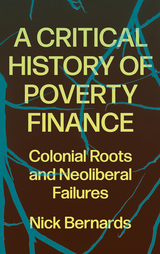 A Critical History of Poverty Finance: Colonial Roots and Neoliberal Failures
Nick
Pluto Press, 2022 A comprehensive historical tracing of how the contemporary finance-poverty-development nexus emerged.
'The definitive account of the history of poverty finance' - Susanne Soederberg
Finance, mobile, and digital technologies - or 'fintech' - are being heralded in the world of development by the likes of the IMF and World Bank as a silver bullet in the fight against poverty. But should we believe the hype?
A Critical History of Poverty Finance demonstrates how newfangled 'digital financial inclusion' efforts suffer from the same essential flaws as earlier iterations of neoliberal 'financial inclusion.' Relying on artificially created markets that simply aren't there among the world's most disadvantaged economic actors, they also reinforce existing patterns of inequality and uneven development, many of which date back to the colonial era.
Bernards offers an astute analysis of the current fintech fad, contextualized through a detailed colonial history of development finance, that ultimately reveals the neoliberal vision of poverty alleviation for the pipe dream it is.
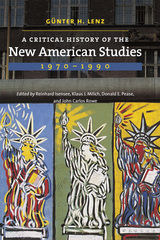 A Critical History of the New American Studies, 1970–1990
Günter H. Lenz
Dartmouth College Press, 2016 Starting in 2005, Günter H. Lenz began preparing a book-length exploration of the transformation of the field of American Studies in the crucial years between 1970 and 1990. As a commentator on, contributor to, and participant in the intellectual and institutional changes in his field, Lenz was well situated to offer a comprehensive and balanced interpretation of that seminal era. Building on essays he wrote while these changes were ongoing, he shows how the revolution in theory, the emergence of postmodern socioeconomic conditions, the increasing globalization of everyday life, and postcolonial responses to continuing and new forms of colonial domination had transformed American Studies as a discipline focused on the distinctive qualities of the United States to a field encompassing the many different “Americas” in the Western Hemisphere as well as how this complex region influenced and was interpreted by the rest of the world. In tracking the shift of American Studies from its exceptionalist bias to its unmanageable global responsibilities, Lenz shows the crucial roles played by the 1930s’ Left in the U.S., the Frankfurt School in Germany and elsewhere between 1930 and 1960, Continental post-structuralism, neo-Marxism, and post-colonialism. Lenz’s friends and colleagues, now his editors, present here his final backward glance at a critical period in American Studies and the birth of the Transnational.
Critical Hours: Search and Rescue in the White Mountains
Sandy Stott
University Press of New England, 2018 A misread map, a sudden storm, a forgotten headlamp—and suddenly a leisurely hike turns into a treacherous endeavor. In the past decade, inexpensive but sophisticated navigation devices and mobile phones have led to alarming levels of overconfidence on the trail. Adding to this worrisome trend, the increasing popularity of ventures into mountainous terrain has led hikers seeking solitude—or an adrenaline rush—into increasingly remote or risky forays. Sandy Stott, the “Accidents” editor at the journal of the Appalachian Mountain Club, delivers both a history and a celebration of the search and rescue workers who save countless lives in the White Mountains—along with a plea for us not to take their steadfastness and bravery for granted. Filled with tales of astonishing courage and sobering tragedy, Critical Hours will appeal to outdoor enthusiasts and armchair adventurers alike.
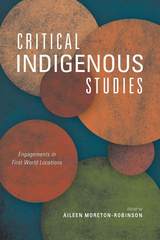 Critical Indigenous Studies: Engagements in First World Locations
Edited by Aileen Moreton-Robinson
University of Arizona Press, 2016 With increasing speed, the emerging discipline of critical Indigenous studies is expanding and demarcating its territory from Indigenous studies through the work of a new generation of Indigenous scholars. Critical Indigenous Studies makes an important contribution to this expansion, disrupting the certainty of disciplinary knowledge produced in the twentieth century, when studying Indigenous peoples was primarily the domain of non-Indigenous scholars. Aileen Moreton-Robinson’s introductory essay provides a context for the emerging discipline. The volume is organized into three sections: the first includes essays that interrogate the embedded nature of Indigenous studies within academic institutions; the second explores the epistemology of the discipline; and the third section is devoted to understanding the locales of critical inquiry and practice. Each essay places and contemplates critical Indigenous studies within the context of First World nations, which continue to occupy Indigenous lands in the twenty-first century. The contributors include Aboriginal, Metis, Maori, Kanaka Maoli, Filipino-Pohnpeian, and Native American scholars working and writing through a shared legacy born of British and later U.S. imperialism. In these countries, critical Indigenous studies is flourishing and transitioning into a discipline, a knowledge/power domain where distinct work is produced, taught, researched, and disseminated by Indigenous scholars. View the Table of Contents here. Contributors: Hokulani K. Aikau Chris Andersen Larissa Behrendt Vicente M. Diaz Noelani Goodyear Kaopua Daniel Heath Justice Brendan Hokowhitu Aileen Moreton-Robinson Jean M. O'Brien Noenoe Silva Kim Tallbear Robert Warrior
Critical Inquiry, volume 48 number 1 (Autumn 2021)
The University of Chicago Press
University of Chicago Press Journals, 2021 This is volume 48 issue 1 of Critical Inquiry. Critical Inquiry is a peer-reviewed interdisciplinary journal devoted to the best critical thought in the arts and humanities. Combining a commitment to rigorous scholarship with a vital concern for dialogue and debate, the journal presents articles by eminent and emerging scholars, critics, and artists on a wide variety of issues in contemporary criticism and culture. Associated with no single school of thought, tied to no single discipline, Critical Inquiry is dedicated to providing a forum for cutting-edge thought while reconsidering traditional concepts and practices.
Critical Inquiry, volume 48 number 2 (Winter 2022)
The University of Chicago Press
University of Chicago Press Journals, 2022 This is volume 48 issue 2 of Critical Inquiry. Critical Inquiry is a peer-reviewed interdisciplinary journal devoted to the best critical thought in the arts and humanities. Combining a commitment to rigorous scholarship with a vital concern for dialogue and debate, the journal presents articles by eminent and emerging scholars, critics, and artists on a wide variety of issues in contemporary criticism and culture. Associated with no single school of thought, tied to no single discipline, Critical Inquiry is dedicated to providing a forum for cutting-edge thought while reconsidering traditional concepts and practices.
Critical Inquiry, volume 48 number 3 (Spring 2022)
The University of Chicago Press
University of Chicago Press Journals, 2022 This is volume 48 issue 3 of Critical Inquiry. Critical Inquiry is a peer-reviewed interdisciplinary journal devoted to the best critical thought in the arts and humanities. Combining a commitment to rigorous scholarship with a vital concern for dialogue and debate, the journal presents articles by eminent and emerging scholars, critics, and artists on a wide variety of issues in contemporary criticism and culture. Associated with no single school of thought, tied to no single discipline, Critical Inquiry is dedicated to providing a forum for cutting-edge thought while reconsidering traditional concepts and practices.
Critical Inquiry, volume 48 number 4 (Summer 2022)
The University of Chicago Press
University of Chicago Press Journals, 2022 This is volume 48 issue 4 of Critical Inquiry. Critical Inquiry is a peer-reviewed interdisciplinary journal devoted to the best critical thought in the arts and humanities. Combining a commitment to rigorous scholarship with a vital concern for dialogue and debate, the journal presents articles by eminent and emerging scholars, critics, and artists on a wide variety of issues in contemporary criticism and culture. Associated with no single school of thought, tied to no single discipline, Critical Inquiry is dedicated to providing a forum for cutting-edge thought while reconsidering traditional concepts and practices.
Critical Inquiry, volume 49 number 1 (Autumn 2022)
The University of Chicago Press
University of Chicago Press Journals, 2022 This is volume 49 issue 1 of Critical Inquiry. Critical Inquiry is a peer-reviewed interdisciplinary journal devoted to the best critical thought in the arts and humanities. Combining a commitment to rigorous scholarship with a vital concern for dialogue and debate, the journal presents articles by eminent and emerging scholars, critics, and artists on a wide variety of issues in contemporary criticism and culture. Associated with no single school of thought, tied to no single discipline, Critical Inquiry is dedicated to providing a forum for cutting-edge thought while reconsidering traditional concepts and practices.
Critical Inquiry, volume 49 number 2 (Winter 2023)
The University of Chicago Press
University of Chicago Press Journals, 2023 This is volume 49 issue 2 of Critical Inquiry. Critical Inquiry is a peer-reviewed interdisciplinary journal devoted to the best critical thought in the arts and humanities. Combining a commitment to rigorous scholarship with a vital concern for dialogue and debate, the journal presents articles by eminent and emerging scholars, critics, and artists on a wide variety of issues in contemporary criticism and culture. Associated with no single school of thought, tied to no single discipline, Critical Inquiry is dedicated to providing a forum for cutting-edge thought while reconsidering traditional concepts and practices.
Critical Inquiry, volume 49 number 3 (Spring 2023)
The University of Chicago Press
University of Chicago Press Journals, 2023 This is volume 49 issue 3 of Critical Inquiry. Critical Inquiry is a peer-reviewed interdisciplinary journal devoted to the best critical thought in the arts and humanities. Combining a commitment to rigorous scholarship with a vital concern for dialogue and debate, the journal presents articles by eminent and emerging scholars, critics, and artists on a wide variety of issues in contemporary criticism and culture. Associated with no single school of thought, tied to no single discipline, Critical Inquiry is dedicated to providing a forum for cutting-edge thought while reconsidering traditional concepts and practices.
Critical Inquiry, volume 49 number 4 (Summer 2023)
The University of Chicago Press
University of Chicago Press Journals, 2023 This is volume 49 issue 4 of Critical Inquiry. Critical Inquiry is a peer-reviewed interdisciplinary journal devoted to the best critical thought in the arts and humanities. Combining a commitment to rigorous scholarship with a vital concern for dialogue and debate, the journal presents articles by eminent and emerging scholars, critics, and artists on a wide variety of issues in contemporary criticism and culture. Associated with no single school of thought, tied to no single discipline, Critical Inquiry is dedicated to providing a forum for cutting-edge thought while reconsidering traditional concepts and practices.
Critical Inquiry, volume 50 number 1 (Autumn 2023)
The University of Chicago Press
University of Chicago Press Journals, 2023 This is volume 50 issue 1 of Critical Inquiry. Critical Inquiry is a peer-reviewed interdisciplinary journal devoted to the best critical thought in the arts and humanities. Combining a commitment to rigorous scholarship with a vital concern for dialogue and debate, the journal presents articles by eminent and emerging scholars, critics, and artists on a wide variety of issues in contemporary criticism and culture. Associated with no single school of thought, tied to no single discipline, Critical Inquiry is dedicated to providing a forum for cutting-edge thought while reconsidering traditional concepts and practices.
Critical Inquiry, volume 50 number 2 (Winter 2024)
The University of Chicago Press
University of Chicago Press Journals, 2024 This is volume 50 issue 2 of Critical Inquiry. Critical Inquiry is a peer-reviewed interdisciplinary journal devoted to the best critical thought in the arts and humanities. Combining a commitment to rigorous scholarship with a vital concern for dialogue and debate, the journal presents articles by eminent and emerging scholars, critics, and artists on a wide variety of issues in contemporary criticism and culture. Associated with no single school of thought, tied to no single discipline, Critical Inquiry is dedicated to providing a forum for cutting-edge thought while reconsidering traditional concepts and practices.
Critical Inquiry, volume 50 number 3 (Spring 2024)
The University of Chicago Press
University of Chicago Press Journals, 2024 This is volume 50 issue 3 of Critical Inquiry. Critical Inquiry is a peer-reviewed interdisciplinary journal devoted to the best critical thought in the arts and humanities. Combining a commitment to rigorous scholarship with a vital concern for dialogue and debate, the journal presents articles by eminent and emerging scholars, critics, and artists on a wide variety of issues in contemporary criticism and culture. Associated with no single school of thought, tied to no single discipline, Critical Inquiry is dedicated to providing a forum for cutting-edge thought while reconsidering traditional concepts and practices.
Critical Inquiry, volume 50 number 4 (Summer 2024)
The University of Chicago Press
University of Chicago Press Journals, 2024 This is volume 50 issue 4 of Critical Inquiry. Critical Inquiry is a peer-reviewed interdisciplinary journal devoted to the best critical thought in the arts and humanities. Combining a commitment to rigorous scholarship with a vital concern for dialogue and debate, the journal presents articles by eminent and emerging scholars, critics, and artists on a wide variety of issues in contemporary criticism and culture. Associated with no single school of thought, tied to no single discipline, Critical Inquiry is dedicated to providing a forum for cutting-edge thought while reconsidering traditional concepts and practices.
Critical Inquiry, volume 51 number 1 (Autumn 2024)
The University of Chicago Press
University of Chicago Press Journals, 2024 This is volume 51 issue 1 of Critical Inquiry. Critical Inquiry is a peer-reviewed interdisciplinary journal devoted to the best critical thought in the arts and humanities. Combining a commitment to rigorous scholarship with a vital concern for dialogue and debate, the journal presents articles by eminent and emerging scholars, critics, and artists on a wide variety of issues in contemporary criticism and culture. Associated with no single school of thought, tied to no single discipline, Critical Inquiry is dedicated to providing a forum for cutting-edge thought while reconsidering traditional concepts and practices.
Critical Inquiry, volume 51 number 2 (Winter 2025)
The University of Chicago Press
University of Chicago Press Journals, 2025 This is volume 51 issue 2 of Critical Inquiry. Critical Inquiry is a peer-reviewed interdisciplinary journal devoted to the best critical thought in the arts and humanities. Combining a commitment to rigorous scholarship with a vital concern for dialogue and debate, the journal presents articles by eminent and emerging scholars, critics, and artists on a wide variety of issues in contemporary criticism and culture. Associated with no single school of thought, tied to no single discipline, Critical Inquiry is dedicated to providing a forum for cutting-edge thought while reconsidering traditional concepts and practices.
Critical Inquiry, volume 51 number 3 (Spring 2025)
The University of Chicago Press
University of Chicago Press Journals, 2025 This is volume 51 issue 3 of Critical Inquiry. Critical Inquiry is a peer-reviewed interdisciplinary journal devoted to the best critical thought in the arts and humanities. Combining a commitment to rigorous scholarship with a vital concern for dialogue and debate, the journal presents articles by eminent and emerging scholars, critics, and artists on a wide variety of issues in contemporary criticism and culture. Associated with no single school of thought, tied to no single discipline, Critical Inquiry is dedicated to providing a forum for cutting-edge thought while reconsidering traditional concepts and practices.
Critical Inquiry, volume 51 number 4 (Summer 2025)
The University of Chicago Press
University of Chicago Press Journals, 2025 This is volume 51 issue 4 of Critical Inquiry. Critical Inquiry is a peer-reviewed interdisciplinary journal devoted to the best critical thought in the arts and humanities. Combining a commitment to rigorous scholarship with a vital concern for dialogue and debate, the journal presents articles by eminent and emerging scholars, critics, and artists on a wide variety of issues in contemporary criticism and culture. Associated with no single school of thought, tied to no single discipline, Critical Inquiry is dedicated to providing a forum for cutting-edge thought while reconsidering traditional concepts and practices.
Critical Inquiry, volume 52 number 1 (Autumn 2025)
The University of Chicago Press
University of Chicago Press Journals, 2025 This is volume 52 issue 1 of Critical Inquiry. Critical Inquiry is a peer-reviewed interdisciplinary journal devoted to the best critical thought in the arts and humanities. Combining a commitment to rigorous scholarship with a vital concern for dialogue and debate, the journal presents articles by eminent and emerging scholars, critics, and artists on a wide variety of issues in contemporary criticism and culture. Associated with no single school of thought, tied to no single discipline, Critical Inquiry is dedicated to providing a forum for cutting-edge thought while reconsidering traditional concepts and practices.
 Critical Issues in Healthcare Policy and Politics in the Gulf Cooperation Council States
Ravinder Mamtani, MD and Albert B. Lowenfels, MD, Editors
Georgetown University Press This is the first book to examine challenges in the healthcare sector in the six Gulf Cooperation Council (GCC) countries (Saudi Arabia, Oman, the United Arab Emirates, Qatar, Kuwait, and Bahrain). These countries experienced remarkably swift transformations from small fishing and pearling communities at the beginning of the twentieth century to wealthy petro-states today. Their healthcare systems, however, are only now beginning to catch up. Rapid changes to the population and lifestyles of the GCC states have completely changed—and challenged—the region’s health profile and infrastructure. While major successes in combatting infectious diseases and improving standards of primary healthcare are reflected in key health indicators, new trends have developed; increasingly “lifestyle” or “wealthy country” diseases, such as diabetes, heart disease, and cancer, have replaced the old maladies. To meet these emerging healthcare needs, GCC states require highly trained and skilled healthcare workers, an environment that supports local training, state-of-the-art diagnostic laboratories and hospitals, research production and dissemination, and knowledge acquisition. They face shortages in most if not all of these areas. This book provides a comprehensive study of the rapidly changing health profile of the region, the existing conditions of healthcare systems, and the challenges posed to healthcare management across the six states of the GCC.
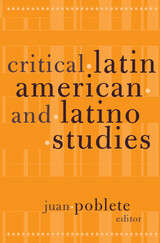 Critical Latin American And Latino Studies
Juan Poblete
University of Minnesota Press, 2003 Situates these dynamic disciplines within debates around globalization This book brings together some of the most prominent scholars working across the spectrum of Latin American and Latino studies to explore their changing intellectual undertaking in relation to global processes of change. Critical Latin American and Latino Studies identifies the challenges and possibilities of more politically engaged and theoretically critical modes of scholarly practice. One objective is to provide a brief critical history of the study of various Latin American cultures—Latino, Chicano, Puerto Rican, among others. But these essays also serve to assess the roles of ethnic and area studies in light of changing scholarly trends, from emphases on gender and sexuality to a focus on postcoloniality and globalization. The result is an important contribution to current debates on the conditions of contemporary knowledge production. Contributors: Tomás Almaguer, San Francisco State U; Frances R. Aparicio, U of Illinois, Chicago; John Beverley, U of Pittsburgh; Angie Chabram-Dernersesian, U of California, Davis; Román de la Campa, SUNY, Stony Brook; Juan Flores, Hunter College and CUNY; Walter D. Mignolo, Duke U; Giorgio Perissinotto, U of California, Santa Barbara; Kirsten Silva Gruesz, U of California, Santa Cruz; Stefano Varese, U of California, Davis; George Yúdice, NYU; Juan Zevallos Aguilar, Villanova U.
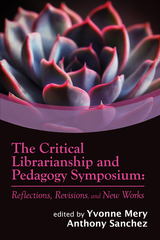 The Critical Librarianship and Pedagogy Symposium: Reflections, Revisions, and New Works
Yvonne Mery
Association of College & Research Libraries, 2023 Academic librarianship is due for a major paradigm shift in response to the existential threats facing the library profession and higher education, and library workers are leading this shift with new ideas about community, feminism, education, and social change.
The Critical Librarianship and Pedagogy Symposium: Reflections, Revisions, and New Works collects expanded and updated presentations given at the Critical Librarianship and Pedagogy Symposium (CLAPS) held biennially at the University of Arizona Libraries. This anthology provides a toolkit for critical library pedagogy that recognizes how knowledge is created within historical and deeply politicized contexts. Authors working in library or disciplinary teaching fields explore intersections between information literacy and critical pedagogy and provide current thinking, assessment, and reflection on their practices of teaching students how to recognize and critique the oppressive power structures inherent in educational systems. The work done by librarians is analyzed to reveal the socioeconomic frameworks that drive the costs of our labor.
Divided into five parts—Critical Pedagogies in the Classroom, Feminist Library Practices, The Labor of Librarianship, Practices of Care, and Community Archives—chapters include explorations of the advent of neoliberalism in higher education, social justice, white fragility, supporting neurodivergence in education, and disability-rights activism. They use lenses such as queer, intersectional, feminist, and critical race theory to examine subjects, and include practices for sustainable teaching, facilitating dialogue in the classroom, and using tools such as user experience or empathic design. The Critical Librarianship and Pedagogy Symposium offers ways to incorporate critical pedagogy theory into your own practices as educators, both within the library and in higher education in general.
 Critical Library Leadership: Managing Self and Others in Today's Academic Library
Kristin Henrich
Association of College & Research Libraries, 2024 Many of us arrive in supervisory positions with little or no formal training in academic library leadership. We attempt to teach ourselves the skills we need to be good managers and organizational leaders while juggling our own identity shifts and insecurities.
Critical Library Leadership: Managing Self and Others in Today’s Academic Library provides practical, library-specific, hands-on tools that help us shape our approach to leadership and ourselves as leaders. It gives practical strategies for dealing with stress and addressing feelings of insecurity alongside managing the organization from an equity perspective that places people at the forefront. Each section offers a mixture of theory and research, lived experience, and practice that captures many different techniques you can apply to your own journey and organizational context in both formal and informal ways.
Part I: Leader as Self
Section I: Care, Empathy, and Authenticity
Section II: Career Development
Part II: Leader as Role
Section III: Relationships with Others
Section IV: Management Practices
Critical Library Leadership offers a sense of recognition and of community, new ideas for personal and organizational practice, and a renewed appreciation for the immense amount of affective, emotional, and practical labor that is required of each of us as leaders.
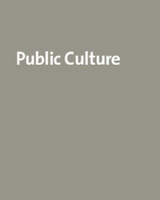 The Critical Limits of Embodiment: Reflections on Disability Criticism, Volume 13
Carol A. Breckenridge and Candace Vogler, eds.
Duke University Press Disability studies, a new field of inquiry in the human sciences, has the potential to unsettle many basic assumptions about the body, citizenship, capital, and beauty. This special issue of Public Culture explores disability criticism, an emergent subfield within disability studies. The articles in this collection build on recent work in the larger arena of disability studies and address such subjects as the hegemony of the concept of normalcy, the idea of the able body, and the constitutive place of disability in ethics, liberalism, and capitalism. The Critical Limits of Embodiment examines the commonsense foundations of disability studies, which tend to universalize Western norms and assumptions in which the normal is foregrounded and the able body forms the basis for the universal liberal subject. The broad geographic scope of these essays constitutes one of their greatest contributions to the field. In order to query the body-related universalisms of Western thought, the issue seeks to be self-conscious about cultural locations. The volume examines the figure of the disabled in the cultural imaginaries of a variety of historical, cultural, and disciplinary contexts including literature, anthropology, philosophy, and art history. Contributors. Renu Addlakha, Carol A. Breckenridge, Veena Das, Faye Ginsburg, Wu Hung, Eva Kittay, Celeste Langan, David Mitchell, Rayna Rapp, Susan Schweik, Sharon Snyder, Candace Vogler, Hank Vogler
 Critical Making in the Age of AI
Emily Johnson and Anastasia Salter
Amherst College Press, 2025 Critical Making in the Age of AI invites students, teachers, learners, and digital humanists to explore making as scholarship. Inspired by the craft traditions of textile arts, this book combines a survey of forms of alternative scholarly communication—such as comics, GIFs, maps, games, and generative AI—and a pattern book, where patterns serve as starting points that makers can reimagine and remix. Firmly grounded in the humanities and utilizing free tools and platforms (including Twine, Voyant, and Tracery) wherever possible, this engaging and accessible guide to digital methods introduces and puts into practice concepts that are essential to preparing students to navigate a changing landscape of media and information without investing in proprietary software, dedicated lab space, or expensive creative tools. The book’s eight patterns are especially appropriate for those just beginning to explore digital scholarly methods, and one goal of Critical Making in the Age of AI is to provide structure for work that is both meaningful and achievable with limited resources and time. By centering critical making through a design-justice and feminist lens, the coauthors model how inclusive and expansive approaches to making in research and teaching are vital to shaping the humanities of the future.
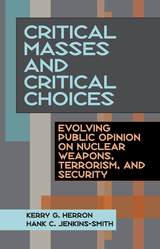 Critical Masses and Critical Choices: Evolving Public Opinion on Nuclear Weapons, Terrorism, and Security
Kerry G. Herron
University of Pittsburgh Press, 2006
Critical Masses and Critical Choices examines American attitudes on issues of national and international security. Based on over 13,000 in-depth interviews conducted over a ten-year period, Kerry Herron and Hank Jenkins-Smith have created a unique and rich set of data providing insights into public opinion on nuclear deterrence, terrorism, and other security issues from the end of the Cold War to the present day. Their goal is to shed light not only on changes in public opinion about a range of security-related policy issues, but also to gauge the depth of the public’s actual understanding of these matters. Prior to this study, the predominant view held that the American people were incapable of articulate and consistent thought on complex political subjects. This book overturns that notion and demonstrates the sometimes surprisingly cogent positions held by ordinary members of the public on intricate national issues.
The book’s solid data, based on long-term studies, combined with crisp writing and often startling conclusions, will appeal to a wide range of readers: scholars, journalists, and policy makers. Critical Masses and Critical Choices is the definitive account of the change in public perceptions on security threats and reactive strategies from the early 1990s to the post 9/11 period. This broad and highly original study will prove an indispensable tool for policy makers and scholars alike.
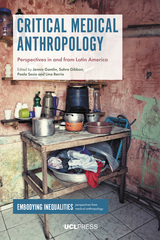 Critical Medical Anthropology: Perspectives in and from Latin America
Edited by Jennie Gamlin, Sahra Gibbon, Paola Sesia, and Lina Berrío
University College London, 2020 Critical Medical Anthropology presents inspiring new work from scholars engaged with and carrying out ethnographic research in or from Latin America, addressing themes of central importance to contemporary perspectives on Critical Medical Anthropology (CMA). This includes issues of health inequalities, embodiment of history, indigenous health, non-communicable diseases, social justice, gendered violence, migration, substance abuse, reproductive politics and the judicialisation of health. It includes work spanning four countries in Latin America (Mexico, Brazil, Guatemala and Peru) as well as the trans-migratory contexts they connect and are defined by. By drawing on diverse social practices it addresses themes of central relevance to medical anthropology and global health, including reproduction and maternal health, sex work, rare and chronic disease and the use of pharmaceuticals and incorporating questions of agency, identity, reproductive politics, indigenous health, and human rights.
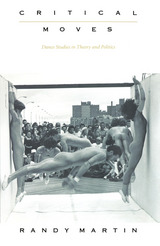 Critical Moves: Dance Studies in Theory and Politics
Randy Martin
Duke University Press, 1998 In Critical Moves Randy Martin sets in motion an inquiry into the relationship between dance, politics, and cultural theory. Drawing on his own experiences as a dancer as well as his observations as a cultural critic and social theorist, Martin illustrates how the study and practice of dance can reanimate arrested prospects for progressive politics and social change. From experimental and concert dance to more popular expressions, Martin engages a range of performances and demonstrates how a critical reflection on dance helps promote fluency in the language of mobilization that political theory alludes to yet rarely speaks. He explores how Bill T. Jones’s Last Supper at Uncle Tom’s Cabin/The Promised Land defies attempts to separate social ideas from aesthetic concerns and celebrates multiculturalism in the face of a singular national culture; he studies the choreography in rapper Ice Cube’s video “Wicked,” which confronts racialized depictions of violent crime; and he discusses how racial difference is negotiated by analyzing a hip hop aerobics class in a nonblack environment. Revealing how mastery of modern dance technique teaches an individual body to express cultural difference and display its intrinsic diversity, Critical Moves concludes with a reflection on the contribution dance studies can make to other fields within cultural studies and social sciences. As such it becomes an occasion to rethink the terms of history and agency, multiculturalism and nationalism, identity and political economy. This book will appeal not only to scholars and practitioners of dance, but also to a wide cross-section of people concerned with the study of political theory and the history of social movements.
Critical Norths: Space, Nature, Theory
Edited by Sarah J. Ray and Kevin Maier
University of Alaska Press, 2017 For millennia, “the North” has held a powerful sway in Western culture. Long seen through contradictions—empty of life yet full of promise, populated by indigenous communities yet ripe for conquest, pristine yet marked by a long human history—it has moved to the foreground of contemporary life as the most dramatic stage for the reality of climate change.
This book brings together scholars from a range of disciplines to ask key questions about the North and how we’ve conceived it—and how conceiving of it in those terms has caused us to fail the region’s human and nonhuman life. Engaging questions of space, place, indigeneity, identity, nature, the environment, justice, narrative, history, and more, it offers a crucial starting point for an essential rethinking of both the idea and the reality of the North.
 Critical Passions: Selected Essays
Jean Franco
Duke University Press, 1999 Jean Franco’s work as a pathbreaking theorist, cultural critic, and scholar has helped to define Latin American studies over the last three decades. In the process, Franco has played a crucial role in developing cultural studies in both the English- and Spanish-speaking worlds. Critical Passions is the first volume to gather a wide-ranging selection of Franco’s influential essays.
A key participant in the major debates in Latin American studies—beginning with the “boom” period of the 1960s and continuing through debates on ideology and discourse, Marxism, mass culture, and postmodernism—Franco is recognized for her feminist critique of Latin American writing. While her principal books are all readily available, Franco’s several dozen articles are dispersed in a variety of periodicals in Latin America, Europe, and the United States. Although many of these essays are considered pioneering and classic, they have never before been collected in a single work. In this volume, Mary Louise Pratt and Kathleen Newman have organized the essays into four interrelated sections: feminism and the critique of authoritarianism, mass and popular culture, Latin American literature from the “boom” onward, and the cultural history of Mexico. As a group, these writings demonstrate Franco’s ability to reflect on and judge with equal seriousness all spheres of expression, whether subway graffiti, a fashion manual, or an avant-garde haiku. A bona fide fan of popular and mass media, Franco never allows her critiques to dissolve into the puritanical or reductive; instead, she finds ways to present and debate complex theoretical questions in direct and accessible language.
This volume will draw an extensive readership in Latin American, cultural, and women’s studies.
 Critical Paths: Blake and the Argument of Method
Dan Miller, Mark Bracher and Donald Ault, eds.
Duke University Press, 1987 The great expositors of Blake and those who have followed in their footsteps have clarified the most minute particulars of Blake's vision. Now, in the place of traditional exegesis, comes a significantly new set of critical problems and interpretive methods. In this volume of essays, the major shift in Blake studies, already under way in practice, is addressed, gauged, analyzed, and debated. The contributors assembled here, leading exponents of contemporary critical methods as well as close students of Blake, argue the grounds, purposes, and validity of each approach and then apply its method in detailed readings of Blake's works. We see deconstruction, psychoanalytic interpretation, feminist critique, semiotic analysis, Marxist criticism, revisionism, and other methods brought to bear on Blake's texts and into confrontation with one another by those best able to do so. Through the essays themselves and in the reaction they will certainly provoke, Critical Paths will bring increased theoretical awareness to the study of Blake and will further the ongoing redefinition of Blake's art. At the same time, the collection investigates the general problem of methodology in literary studies by means of a casebook examination of modern critical approaches. Blake criticism and current literary theory here come together; the encounter illuminates and enriches both.
Critical Perspectives in International Studies
Frank P. Harvey and Michael Brecher, Editors
University of Michigan Press, 2002 Critical Perspectives in International Studies offers an exciting survey of recent approaches to the study of international politics, including critical theory, radical theory, constructivism, postmodernism, system change, and feminist and gender perspectives. The authors—among the founders and leaders of these innovative ways to comprehend and re-present world politics—reflect on the strengths and weaknesses of each school of thought and suggest future research agendas.
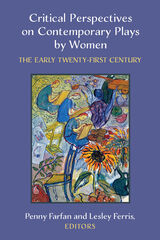 Critical Perspectives on Contemporary Plays by Women: The Early Twenty-First Century
Penny Farfan and Lesley Ferris, Editors
University of Michigan Press, 2021 This book foregrounds some of the ways in which women playwrights from across a range of contexts and working in a variety of forms and styles are illuminating the contemporary world while also contributing to its reshaping as they reflect, rethink, and reimagine it through their work for the stage. The book is framed by a substantial introduction that sets forth the critical vision and structure of the book as a whole, and an afterword that points toward emerging currents in and expansions of the contemporary field of playwriting by women on the cusp of the third decade of the twenty-first century. Within this frame, the twenty-eight chapters that form the main body of the book, each focusing on a single play of critical significance, together constitute a multi-faceted, inevitably partial, yet nonetheless integral picture of the work of women playwrights since 2000 as they engage with some of the most pressing issues of our time. Some of these issues include the continuing oppression of and violence against women, people of color, LGBTQ+ people, and ethnic minorities; the ongoing processes of decolonization; the consequences of neoliberal capitalism; the devastation and enduring trauma of war; global migration and the refugee crisis; the turn to right-wing populism; and the impact of climate change, including environmental disaster and species extinction.
The book is structured into seven sections: Replaying the Canon; Representing Histories; Staging Lives; Re-imagining Family; Navigating Communities; Articulating Intersections; and New World Order(s). These sections group clusters of plays according to the broad critical actions they perform or, in the case of the final section, the new world orders that they capture through their stagings of the seeming impasse of the politically and environmentally catastrophic global present moment. There are many other points of resonance among and across the plays, but this seven-part structure foregrounds the broader actions that drive the plays, both in the Aristotelian dramaturgical sense and in the larger sense of the critical interventions that the plays creatively enact. In this way, the seven-part structure establishes correspondences across the great diversity of dramatic material represented in the book while at the same time identifying key methods of critical approach and areas of focus that align the book’s contributors across this diversity. The structure of the book thus parallels what the playwrights themselves are doing, but also how the contributors are approaching their work. Plays featured in the book are from Canada, Australia, South Africa, the US, the UK, France, Argentina, New Zealand, Syria, Brazil, Italy, and Austria; the playwrights include Margaret Atwood, Leah Purcell, Yaël Farber, Paula Vogel, Adrienne Kennedy, Suzan-Lori Parks, debbie tucker green, Lisa Loomer, Hélène Cixous. Anna Deavere Smith, Lola Arias, Lisa Kron and Jeanine Tesori, Marie Clements, Quiara Alegría Hudes, Alia Bano, Holly Hughes, Whiti Hereaka, Julia Cho, Liwaa Yazji, Grace Passô, Dominique Morisseau, Emma Dante, Frances Ya-Chu Cowhig, Lynn Nottage, Elfriede Jelinek, Caryl Churchill, Colleen Murphy, and Lucy Kirkwood. Encompassing several generations of playwrights and scholars, ranging from the most senior to mid-career to emerging voices, the book will be essential reading for established researchers, a valuable learning resource for students at all levels, and a useful and accessible guide for theatre practitioners and interested theatre-goers.
Critical Perspectives on Cultural Memory and Heritage: Construction, Transformation and Destruction
Edited by Veysel Apaydin
University College London, 2020 Critical Perspectives on Cultural Memory and Heritage focuses on the importance of memory and heritage for individual and group identity, and for their sense of belonging. It aims to expose the motives and discourses related to the destruction of memory and heritage during times of war, terror, sectarian conflict and through capitalist policies. It is within these affected spheres of cultural heritage where groups and communities ascribe values, develop memories, and shape their collective identity. It is an essential read for researchers in Museum and Heritage Studies, Archaeology and History who seek a global, comprehensive study of cultural memory and heritage.
 Critical Perspectives on Latino Education in Massachusetts
Lorna Rivera and Melissa Colón, editors
University of Massachusetts Press, 2025 In Massachusetts, the Latino population increased by 475 percent between 1980 and 2017, marking a dramatic growth. This diverse ethnic community of Puerto Ricans, Dominicans, Salvadoreans, Colombians, Brazilians, and more also contains a wide range of cultures, immigration and migration experiences, languages, and socio-political backgrounds. However, there are numerous commonalities involving education. Recent research at the Mauricio Gastón Institute for Latino Community Development and Policy reveals that Latino students in Massachusetts are more likely to attend public schools, in communities with significant academic achievement and opportunity gaps as well as other challenges, from food scarcity to higher rates of unemployment. At the same time, the state-wide shift to standards-based education has had a disproportionately negative impact on Latino students, who already feel the effects of politically motivated anti-immigrant policies and laws that limit bilingual education.
This collection of essays, from those working inside the classroom as well as researchers taking a broader look at policy, addresses the array of issues facing Latino students in Massachusetts. These perspectives paint a complex picture of the educational experience for Latinos, and offer expert suggestions for improving classrooms, school environments, and ultimate educational outcomes for an important growing demographic in the Commonwealth.
In addition to editors Lorna Rivera and Melissa Colón, this volume’s contributors include Almudena G. Abeyta, Nasteho Ali, Cristina Araujo Brinkerhoff, Michael Berardino, Alex Briesacher, Thomas Conroy, Judenie Dabel, Liya Escalera, Luis Enrique Esquivel, Deyja Enriquez, Isahiah Erilus, Nyal Fuentes, Jazmin Rubi Flete Gomez, Manuel Frau-Ramos, Kimberly A. S. Howard, Patricia Krueger-Henney, Steven Lue, Mary Jo Marion, Timothy E. Murphy, Cecilia Nardi, Laurie Occhipinti, Alexandra Oliver-Davila, Chong Myung Park, Angelica Rodriquez, Marta T. Rosa, Diana Santiago, Melissa Sargent, Ester Shapiro, V. Scott H. Solberg, Fabián Torres-Ardila, Ashley Torres Carrasquillo, Paul Trunfio, Carmen N. Veloria, and Heilam Xie.
 Critical Practices in Post-Franco Spain
Silvia L. Lopez, Jenaro Talens, and Dario Villanueva, Editors
University of Minnesota Press, 1994
Critical Practices in Post-Franco Spain was first published in 1994. Minnesota Archive Editions uses digital technology to make long-unavailable books once again accessible, and are published unaltered from the original University of Minnesota Press editions.
This volume offers a sample of Spanish critical work in literary theory and cultural studies. Like all critical histories, Spain's is political: Philology dominated the critical scene during the Franco years, and after Franco, this hegemony has been contested by semiotics, poststructuralism, psychoanalysis, and feminisms. Without trying to represent all the theoretical projects presently underway in Spanish criticism, this book opens a window on the vast field of new critical practices in Spain and provides a general picture of influential theoretical currents.
The essays collected here range widely in topic and style, and they reflect a new generation's preoccupation with critical problems that go beyond the field of literary studies. The authors focus on new discourse in various print and electronic media, on the discursive construction of the museum space, and on literary theory as it confronts issues of translation, subjectivity, writing, and narratology.
Silvia López is assistant professor of Spanish at Carlton Collegea doctoral candidate in the departments of cultural studies and comparative literature at the University of Minnesota. Jenaro Talens is professor of Hispanic literature and comparative literature at the University of Geneva. He is the author of The Branded Eye: Buñuel's Un Chien Andalou, (Minnesota 1993). Darío Villanueva is professor of theory of literature at the University of Santiago de Compostela, Spain.
Critical Prefaces of the French Renaissance
Bernard Weinberg
Northwestern University Press, 1950 Critical Prefaces of the French Renaissance contains nearly 30 prefaces from the works of French poets and dramatists published from 1525 to 1611. Bernard Weinberg’s helpful book collects prefaces from the works of satirical poets, as well as dramatists, and provides a short introduction to each preface setting it in its literary and historical context. Lyrical and satirical poets represented vary from Marot to Du Bellay to Ronsard. Dramatists represented include Jean de la Tille and Larivey, among others. The larger introduction to the volume provides literary analysis of five longer texts by Sebillet, Du Bellay, Peletier du Mans, the obscure Pierre De-laudun, and Horace. Weinberg’s study brings attention back to these primary writings that are crucial for an understanding of the period.
Critical Problems in the History of Science: Proceedings of the Institute for the History of Science, 1957
Edited by Marshall Clagett
University of Wisconsin Press, 1969 "A permanent record of the proceedings of a particularly important Institute for the History of Science, held at the University of Wisconsin in 1957. Seventy-two distinguished historians of science took part in this stimulating and serious exchange of ideas covering many aspects of ancient, medieval, and modern scientific thought."—The New Scholasticism
"This publication indicates in a striking manner the catholicity of the history of science; professors of philosophy, the history of science, the philosophy of science, history, biology, and metallurgy readily conferred with one another."—The American Historical Review
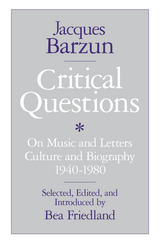 Critical Questions: On Music and Letters, Culture and Biography, 1940-1980
Jacques Barzun
University of Chicago Press, 1982 This collection of writings allows the reader a rare opportunity to see Barzun's lively, engaging, rich, and original mind at work on several strategic areas of cultural inquiry: music and the musical life, esthetics, biography, criticism, and social commentary. Barzun makes use of a variety of contexts as a forum for evidence and opinion, including essays, program notes, letters, and reviews. And he approaches a wide variety of particular and general questions. What is it like to sit in on a recording session with a great orchestra? What is the role of the piano in Western culture? What is art in relation to objective reality and to the perceiving mind? Can one translate music into words? What is cultural history?
For anyone unfamiliar with Barzun's work, Critical Questions will serve as a valuable introduction to one of the most important cultural historians of our time. Others will be glad to have these pieces—most of them no longer easily available—brought together in a single volume. Uniformly insightful, provocative, and a pleasure to read, they show the consistency of Barzun's thought even as they exhibit diversity.
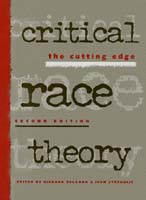 Critical Race Theory 2Nd Ed
Richard Delgado
Temple University Press, 1999 In this wide-ranging second edition, Richard Delgado and Jean Stefancic bring together the finest, most illustrative, and highly accessible articles in the fast-growing legal genre of Critical Race Theory. In challenging orthodoxy, questioning the premises of liberalism, and debating sacred wisdoms, Critical Race Theory scholars writing over the past few years have indelibly changed the way America looks at race.
This edition contains treatment of all the topics covered in the first edition, along with provocative and probing questions for discussion and detailed suggestions for additional reading, all of which set this fine volume apart from the field. In addition, this edition contains five new substantive units -- crime, critical race practice, intergroup tensions and alliances, gay/lesbian issues, and transcending the black-white binary paradigm of race. In each of these areas, groundbreaking scholarship by the movement's founding figures as well as the brightest new stars provides immediate entre to current trends and developments in critical civil rights thought.
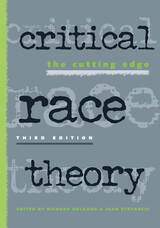 Critical Race Theory: The Cutting Edge
Richard Delgado
Temple University Press, 2013 Critical Race Theory has become a dynamic, eclectic, and growing movement in the study of law. With this third edition of Critical Race Theory, editors Richard Delgado and Jean Stefancic have created a reader for the twenty-first century-one that shakes up the legal academy, questions comfortable liberal premises, and leads the search for new ways of thinking about our nation's most intractable, and insoluble, problem-race.
The contributions, from a stellar roster of established and emerging scholars, address new topics, such as intersectionality and black men on the "down low." Essays also confront much-discussed issues of discrimination, workplace dynamics, affirmative action, and sexual politics. Also new to this volume are updated section introductions, author notes, questions for discussion, and reading lists for each unit. The volume also covers the spread of the movement to other disciplines such as education.
Offering a comprehensive and stimulating snapshot of current race jurisprudence and thought, this new edition of Critical Race Theory is essential for those interested in law, the multiculturalism movement, political science, education, and critical thought.
 A Critical Review of Research in Land Economics
Leonard A. Salter, Jr.
University of Minnesota Press, 1948
A Critical Review of Research in Land Economics was first published in 1948. Minnesota Archive Editions uses digital technology to make long-unavailable books once again accessible, and are published unaltered from the original University of Minnesota Press editions.
Research relating to the economic problems of agriculture has seen rapid and extensive development during the last three decades. Funds now becoming available through the research and marketing act, together with financial support from other sources, promise further expansion and growth in the study of the economic problems of agriculture, and consequently a keen interest in research methods and approaches.
While this book deals specifically with research progress and methods in the field of land economics, the author's findings and conclusions offer guides to research workers and students in agricultural economics and the social sciences generally. Dr. Salter has set up certain basic requirements for evaluating research reports. He makes a comprehensive analysis of the research methodology now used by social scientists and land economists, and forcefully presents the case for use of experimental method in these fields. Those charged with the responsibility for initiating, planning, and carrying out research studies in social sciences will find stimulus and guidance in this book.
 Critical Studies in Art and Design Education
Edited by Richard Hickman
Intellect Books, 2005 This book reviews past practice and theory in critical studies and discusses various trends; some papers keenly advocate a re-conceptualisation of the whole subject area, while others describe aspects of current and past practice which exemplify the "symbiotic" relationship between practical studio work and critical engagement with visual form.
Rod Taylor, who has done much to promote and develop critical studies in the UK, provides us with examples of classroom practice and gives us his more recent thoughts on fundamental issues – "universal themes" in art – and gives examples of how both primary and secondary schools might develop their teaching of art through attending to themes such as "identity," "myth," and "environments" to help "re-animate the practical curriculum."
Although some of the discussion in this book centres on or arises from the English National curriculum, the issues are more global, and relevant to anyone involved in developing or delivering art curricula in schools. An American perspective is given in papers by George Geahigan and Paul Duncum. Geahigan outlines an approach to teaching about visual form which begins with students' personal responses and is developed through structured instruction. In Duncum’s vision of ‘visual culture art education’ sites such as theme parks and shopping malls are the focus of students' critical attention in schools; Nick Stanley gives a lucid account of just such an enterprise, giving practical examples of ways to engage students with this particular form of visual pleasure.
This publication serves to highlight some of the more pressing issues of concern to art and design teachers in two aspects. Firstly it seeks to contextualise the development of critical studies, discussing its place in the general curriculum – possibly as a discrete subject – and secondly it examines different approaches to its teaching.
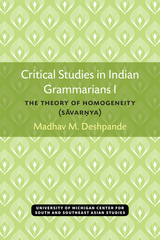 Critical Studies in Indian Grammarians I: The Theory of Homogeneity (Savar?ya)
Madhav M. Deshpande
University of Michigan Press, 1975 In the historical study of the Indian grammarian tradition, a line of demarcation can often be drawn between the conformity of a system with the well-known grammar of Pāṇini and the explanatory effectiveness of that system. One element of Pāṇini’s grammar that scholars have sometimes struggled to bring across this line of demarcation is the theory of homogeneity, or sāvarṇya, which concerns the final consonants in Pāṇini’s reference catalog, as well as phonetic similarities between sounds. While modern Sanskrit scholars understand how to interpret and apply Pāṇini’s homogeneity, they still find it necessary to unravel the history of varying interpretations of the theory in subsequent grammars. Madhav Deshpande’s The Theory of Homogeneity provides a thorough account of the historical development of the theory. Proceeding first to study this conception in the Pāṇinian tradition, Deshpande then passes on to other grammatical systems. Deshpande gives attention not only to the definitions of homogeneity in these systems but also the implementation of the theory in those respective systems. Even where definitions are identical, the concept may be applied quite differently, in which cases Deshpande examines by considering the historical relationships among the various systems.
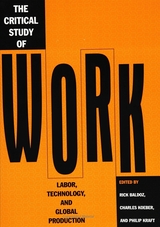 Critical Study Of Work
edited by Rick Baldoz, Charles Koeber and Philip Kraft
Temple University Press, 2001 Two broad developments reshaped work at the end of the twentieth century. The first was the implosion of the Soviet Union and the worldwide triumph of market capitalism. The second was the increasing use of computer-based production technologies and management command-and-control systems. How do we make sense of these important developments.
The editors have assembled a collection of provocative, original essays on work and workplaces throughout the world that challenge the current celebration of globalization and new technologies. Building on labor process analysis, individual case studies venture beyond factory and office to examine "virtual" workplaces, computer-era cottage work, and emotional and household labor. The settings range from Indian and Irish software factories to Brazilian supermarkets, Los Angeles sweatshops, and Taiwanese department stores.
Other essays seek to make theoretical sense of increasingly de-centered production chains, fluid work relations, and uncertain employment. Individually and collectively the authors construct a new critical study of work, highlighting the connections between geography, technology, gender, race, and class. They offer an accessible and flexible approach to the study of workplace relations and production organization -- and even the notion of work itself.
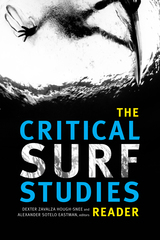 The Critical Surf Studies Reader
Dexter Zavalza Hough-Snee and Alexander Sotelo Eastman, editors
Duke University Press, 2017 The evolution of surfing—from the first forms of wave-riding in Oceania, Africa, and the Americas to the inauguration of surfing as a competitive sport at the 2020 Tokyo Olympics—traverses the age of empire, the rise of globalization, and the onset of the digital age, taking on new meanings at each juncture. As corporations have sought to promote surfing as a lifestyle and leisure enterprise, the sport has also narrated its own epic myths that place North America at the center of surf culture and relegate Hawai‘i and other indigenous surfing cultures to the margins. The Critical Surf Studies Reader brings together eighteen interdisciplinary essays that explore surfing's history and development as a practice embedded in complex and sometimes oppositional social, political, economic, and cultural relations. Refocusing the history and culture of surfing, this volume pays particular attention to reclaiming the roles that women, indigenous peoples, and people of color have played in surfing.
Contributors. Douglas Booth, Peter Brosius, Robin Canniford, Krista Comer, Kevin Dawson, Clifton Evers, Chris Gibson, Dina Gilio-Whitaker, Dexter Zavalza Hough-Snee, Scott Laderman, Kristin Lawler, lisahunter, Colleen McGloin, Patrick Moser, Tara Ruttenberg, Cori Schumacher, Alexander Sotelo Eastman, Glen Thompson, Isaiah Helekunihi Walker, Andrew Warren, Belinda Wheaton
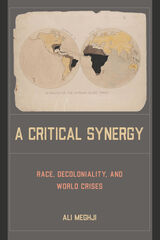 A Critical Synergy: Race, Decoloniality, and World Crises
Meghji, Ali
Temple University Press, 2023 Practitioners of decolonial theory and critical race theory (CRT) often use one or the other, but not both. In his provocative book, A Critical Synergy, Ali Meghji suggests using the two theories in tandem rather than attempting to hierarchize or synthesize them. Doing so allows for the study of social phenomena in a way that captures their global and historical roots, while acknowledging their local, national, and contemporary particularities.
The differences between decolonial thought and CRT, Meghji insists, does not necessarily imply one approach is stronger. Rather, he asserts, they often provide alternative but not incompatible viewpoints of the same social problem. Meghji presents case studies of capitalism, the COVID-19 pandemic, climate crisis, and twenty-first-century far-right populism to show that with both theories, we can understand more, as insights may be lost by using only one.
Meghji is not calling for a universal theoretical synthesis in A Critical Synergy, but rather a practice that can help open sociology and social science to the tradition of pluriversality much more broadly.
Critical Teaching and Everyday Life
Ira Shor
University of Chicago Press, 1987 In this unique book on education, Shor develops teaching theory side-by-side with a political analysis of schooling. Drawing on the work of Paulo Freire, he offers the first practical and theoretical guide to Freirean methods for American classrooms. Central to his method is a commitment to learning through dialogue and to exploring themes from everyday life. He poses alienation and mass culture as key obstacles to learning, and establishes critical literacy as a foundation for studying any subject.
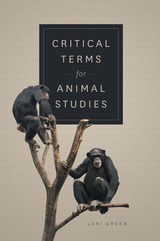 Critical Terms for Animal Studies
Edited by Lori Gruen
University of Chicago Press, 2018 An essential primer and handbook for students and scholars in Animal Studies
Animal Studies is a rapidly growing interdisciplinary field devoted to examining, understanding, and critically evaluating the complex relationships between humans and
other animals. Scholarship in Animal Studies draws on a variety of methodologies to explore these multi-faceted relationships in order to help us understand the ways in which other animals figure in our lives and we in theirs.
Bringing together the work of a group of internationally distinguished scholars, the contribution in Critical Terms for Animal Studies offers distinct voices and diverse perspectives, exploring significant concepts and asking important questions. How do we take non-human animals seriously, not simply as metaphors for human endeavors, but as subjects themselves? What do we mean by anthropocentrism, captivity, empathy, sanctuary, and vulnerability, and what work do these and other critical terms do in Animal Studies?
An indispensable reference for the field, Critical Terms for Animal Studies not only provides a framework for thinking about animals as subjects of their own experiences, but also serves as a touchstone to help us think differently about our conceptions of what it means to be human, and the impact human activities have on the more than human world.
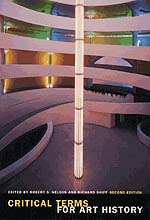 Critical Terms for Art History, Second Edition
Edited by Robert S. Nelson and Richard Shiff
University of Chicago Press, 2003 "Art" has always been contested terrain, whether the object in question is a medieval tapestry or Duchamp's Fountain. But questions about the categories of "art" and "art history" acquired increased urgency during the 1970s, when new developments in critical theory and other intellectual projects dramatically transformed the discipline. The first edition of Critical Terms for Art History both mapped and contributed to those transformations, offering a spirited reassessment of the field's methods and terminology.
Art history as a field has kept pace with debates over globalization and other social and political issues in recent years, making a second edition of this book not just timely, but crucial. Like its predecessor, this new edition consists of essays that cover a wide variety of "loaded" terms in the history of art, from sign to meaning, ritual to commodity. Each essay explains and comments on a single term, discussing the issues the term raises and putting the term into practice as an interpretive framework for a specific work of art. For example, Richard Shiff discusses "Originality" in Vija Celmins's To Fix the Image in Memory, a work made of eleven pairs of stones, each consisting of one "original" stone and one painted bronze replica.
In addition to the twenty-two original essays, this edition includes nine new ones—performance, style, memory/monument, body, beauty, ugliness, identity, visual culture/visual studies, and social history of art—as well as new introductory material. All help expand the book's scope while retaining its central goal of stimulating discussion of theoretical issues in art history and making that discussion accessible to both beginning students and senior scholars.
Contributors: Mark Antliff, Nina Athanassoglou-Kallmyer, Stephen Bann, Homi K. Bhabha, Suzanne Preston Blier, Michael Camille, David Carrier, Craig Clunas, Whitney Davis, Jas Elsner, Ivan Gaskell, Ann Gibson, Charles Harrison, James D. Herbert, Amelia Jones, Wolfgang Kemp, Joseph Leo Koerner, Patricia Leighten, Paul Mattick Jr., Richard Meyer, W. J. T. Mitchell, Robert S. Nelson, Margaret Olin, William Pietz, Alex Potts, Donald Preziosi, Lisbet Rausing, Richard Shiff, Terry Smith, Kristine Stiles, David Summers, Paul Wood, James E. Young
Critical Terms for Literary Study, Second Edition
Edited by Frank Lentricchia and Thomas McLaughlin
University of Chicago Press, 1995 An essential primer and guide to literary studies for students and scholars
Critical Terms for Literary Study is an essential handbook and introduction to the work of literary theory. Covering a broad range of key terms that include popular culture, diversity, imperialism, ethics, desire, class, gender, race, canon, representation, and much more through essays by leading scholars, it provides a concise history of each term alongside a critical exploration of the issues and questions for the field that it raises, followed by demonstrations of reading strategies driven by the term.
Exploring the concepts that shape the way we read, the essays combine to provide an extraordinary introduction to the work of literature and literary study, as the nation's most distinguished scholars put the tools of critical practice vividly to use.
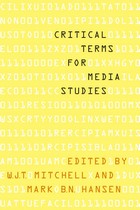 Critical Terms for Media Studies
Edited by W. J. T. Mitchell and Mark B. N. Hansen
University of Chicago Press, 2010 An essential guide to the field of media studies for any student or scholar
Communications, philosophy, film and video, digital culture: media studies straddles an astounding array of fields and disciplines and produces a vocabulary that is in equal parts rigorous and intuitive. Critical Terms for Media Studies defines, and at times, redefines, what this new and hybrid area aims to do, illuminating the key concepts behind its liveliest debates and most dynamic topics.
Part of a larger conversation that engages culture, technology, and politics, this exciting collection of essays explores our most critical language for dealing with the qualities and modes of contemporary media. Edited by two outstanding scholars in the field, W. J. T. Mitchell and Mark B. N. Hansen, the volume features works by a team of distinguished contributors. These essays, commissioned expressly for this volume, are organized into three interrelated groups: “Aesthetics” engages with terms that describe sensory experiences and judgments, “Technology” offers entry into a broad array of technological concepts, and “Society” opens up language describing the systems that allow a medium to function.
A compelling reference work for our media landscape, Critical Terms for Media Studies will engage and deepen any reader’s knowledge of one of our most important new fields.
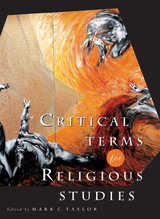 Critical Terms for Religious Studies
Edited by Mark C. Taylor
University of Chicago Press, 1998 A century that began with modernism sweeping across Europe is ending with a remarkable resurgence of religious beliefs and practices throughout the world. Wherever one looks today, from headlines about political turmoil in the Middle East to pop music and videos, one cannot escape the pivotal role of religious beliefs and practices in shaping selves, societies, and cultures.
Following in the very successful tradition of Critical Terms for Literary Studies and Critical Terms for Art History, this book attempts to provide a revitalized, self-aware vocabulary with which this bewildering religious diversity can be accurately described and responsibly discussed. Leading scholars working in a variety of traditions demonstrate through their incisive discussions that even our most basic terms for understanding religion are not neutral but carry specific historical and conceptual freight.
These essays adopt the approach that has won this book's predecessors such widespread acclaim: each provides a concise history of a critical term, explores the issues raised by the term, and puts the term to use in an analysis of a religious work, practice, or event. Moving across Judaism, Christianity, Hinduism, Buddhism, Islam, and Native American and Mayan religions, contributors explore terms ranging from experience, territory, and image, to God, sacrifice, and transgression.
The result is an essential reference that will reshape the field of religious studies and transform the way in which religion is understood by scholars from all disciplines, including anthropology, sociology, psychology, cultural studies, gender studies, and literary studies.
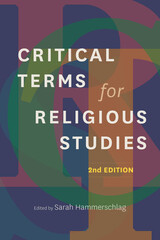 Critical Terms for Religious Studies, Second Edition
Edited by Sarah Hammerschlag
University of Chicago Press, 2025 A new edition of a classic resource—composed of twenty-three essays written specifically for this volume.
First published nearly thirty years ago, Critical Terms for Religious Studies proved a vital resource for an emerging interdisciplinary conversation. We still use much of the same language in the study of religion, but fresh concerns have both changed the meaning of terms and given rise to new terms altogether. This edition consists of twenty-three entirely new essays that offer students and scholars alike the tools to historicize and evaluate the shifting role of familiar and emerging critical terms in religious studies.
These are “critical terms” both because they are important in our cultural moment and because thinking through them reveals how religions are embedded in and shaped by material, social, economic, and political forces. A shared conviction unites contributors from a range of traditions and methodologies: a recognition that our world is saturated by the persistence of religious traditions as shape-shifting (not static or transcendent) forces of authority, as powerful today as ever before.
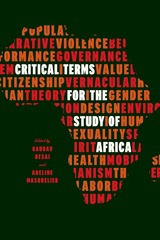 Critical Terms for the Study of Africa
Edited by Gaurav Desai and Adeline Masquelier
University of Chicago Press, 2018 For far too long, the Western world viewed Africa as unmappable terrain—a repository for outsiders’ wildest imaginings. This problematic notion has had lingering effects not only on popular impressions of the region but also on the development of the academic study of Africa. Critical Terms for the Study of Africa considers the legacies that have shaped our understanding of the continent and its place within the conceptual grammar of contemporary world affairs.
Written by a distinguished group of scholars, the essays compiled in this volume take stock of African studies today and look toward a future beyond its fraught intellectual and political past. Each essay discusses one of our most critical terms for talking about Africa, exploring the trajectory of its development while pushing its boundaries. Editors Gaurav Desai and Adeline Masquelier balance the choice of twenty-five terms between the expected and the unexpected, calling for nothing short of a new mapping of the scholarly field. The result is an essential reference that will challenge assumptions, stimulate lively debate, and make the past, present, and future of African Studies accessible to students and teachers alike.
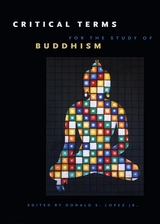 Critical Terms for the Study of Buddhism
Edited by Donald S. Lopez Jr.
University of Chicago Press, 2005 Over the past century, Buddhism has come to be seen as a world religion, exceeding Christianity in longevity and, according to many, philosophical wisdom. Buddhism has also increasingly been described as strongly ethical, devoted to nonviolence, and dedicated to bringing an end to human suffering. And because it places such a strong emphasis on rational analysis, Buddhism is considered more compatible with science than the other great religions. As such, Buddhism has been embraced in the West, both as an alternative religion and as an alternative to religion.
This volume provides a unique introduction to Buddhism by examining categories essential for a nuanced understanding of its traditions. Each of the fifteen essays here shows students how a fundamental term—from art to word—illuminates the practice of Buddhism, both in traditional Buddhist societies and in the realms of modernity. Apart from Buddha, the list of terms in this collection deliberately includes none that are intrinsic to the religion. Instead, the contributors explore terms that are important for many fields and that invite interdisciplinary reflection. Through incisive discussions of topics ranging from practice, power, and pedagogy to ritual, history, sex, and death, the authors offer new directions for the understanding of Buddhism, taking constructive and sometimes polemical positions in an effort both to demonstrate the shortcomings of assumptions about the religion and the potential power of revisionary approaches.
Following the tradition of Critical Terms for Religious Studies, this volume is not only an invaluable resource for the classroom but one that belongs on the short list of essential books for anyone seriously interested in Buddhism and Asian religions.
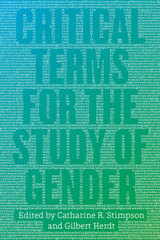 Critical Terms for the Study of Gender
Edited by Catharine R. Stimpson and Gilbert Herdt
University of Chicago Press, 2014 “Gender systems pervade and regulate human lives—in law courts and operating rooms, ballparks and poker clubs, hair-dressing salons and kitchens, classrooms and playgroups. . . . Exactly how gender works varies from culture to culture, and from historical period to historical period, but gender is very rarely not at work. Nor does gender operate in isolation. It is linked to other social structures and sources of identity.”
So write women’s studies pioneer Catharine R. Stimpson and anthropologist Gilbert Herdt in their introduction to Critical Terms for the Study of Gender, laying out the wide-ranging nature of this interdisciplinary and rapidly changing field. The sixth in the series of “Critical Terms” books, this volume provides an indispensable introduction to the study of gender through an exploration of key terms that are a part of everyday discourse in this vital subject.
Following Stimpson and Herdt’s careful account of the evolution of gender studies and its relation to women’s and sexuality studies, the twenty-one essays here cast an appropriately broad net, spanning the study of gender and sexuality across the humanities and social sciences. Written by a distinguished group of scholars, each essay presents students with a history of a given term—from bodies to utopia—and explains the conceptual baggage it carries and the kinds of critical work it can be made to do. The contributors offer incisive discussions of topics ranging from desire, identity, justice, and kinship to love, race, and religion that suggest new directions for the understanding of gender studies. The result is an essential reference addressed to students studying gender in very different disciplinary contexts.
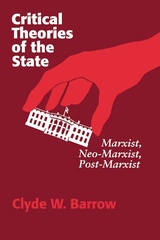 Critical Theories of the State: Marxist, Neomarxist, Postmarxist
Clyde W. Barrow
University of Wisconsin Press, 1993 Critical Theories of the State is a clear and accessible survey of radical perspectives on the modern state. By focusing on Marxist theory and its variations, particularly as applied to advanced industrial societies and contemporary welfare states, Clyde W. Barrow provides a more extensive and thorough treatment than is available in any other work.
Barrow divides the methodological assumptions and key hypotheses of Marxist, Neo-Marxist, and Post-Marxist theories into five distinct approaches: instrumentalist, structuralist, derivationist, systems-analytic, and organizational realist. He categorizes the many theorists discussed in the book, including such thinkers as Elmer Altvater, G. William Domhoff, Fred Block, Claus Offe, and Theda Skocpol according to their concepts of the state’s relationship to capital and their methodological approach to the state. Based on this survey, Barrow elaborates a compelling typology of radical state theories that identifies with remarkable clarity crucial points of overlap and divergence among the various theories.
Scholars conducting research within the rubric of state theory, political development, and policy history will find Critical Theories of the State an immensely valuable review of the literature. Moreover, Barrow’s work will make an excellent textbook for undergraduate and graduate courses in political science and sociology, and can also be used by those teaching theory courses in international relations, history, and political economy.
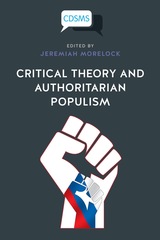 Critical Theory and Authoritarian Populism
Jeremiah Morelock
University of Westminster Press, 2018 After President Trump’s election, BREXIT and the widespread rise of far-Right political parties, much public discussion has intensely focused on populism and authoritarianism. In the middle of the twentieth century, members of the early Frankfurt School prolifically studied and theorized fascism and anti-Semitism in Germany and the United States. In this volume, leading European and American scholars apply insights from the early Frankfurt School to present-day authoritarian populism, including the Trump phenomenon and related developments across the globe. Chapters are arranged into three sections exploring different aspects of the topic: theories, historical foundations, and manifestations via social media. Contributions examine the vital political, psychological and anthropological theories of early Frankfurt School thinkers, and how their insights could be applied now amidst the insecurities and confusions of twenty-first century life. The many theorists considered include Adorno, Fromm, Löwenthal and Marcuse, alongside analysis of Austrian Facebook pages and Trump’s tweets and operatic media drama. This book is a major contribution towards deeper understanding of populism’s resurgence in the age of digital capitalism.
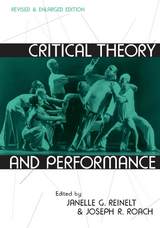 Critical Theory and Performance: Revised and Enlarged Edition
Janelle G. Reinelt and Joseph R. Roach, Editors
University of Michigan Press, 2007 Critical Theory and Performance presents a broad range of critical and theoretical methods and applies them to contemporary and historical performance genres—from stage plays, dance-dramas, performance art, cabaret, stand-up comedy, and jazz to circus, street theater, and shamanistic ritual. As the first comprehensive introduction to critical theory’s rich and diverse contributions to the study of drama, theater, and performance, the book has been highly influential for more than a decade in providing fertile ground for academic investigations in the lively field of performance studies. This updated and expanded edition presents nineteen new essays by the field’s leading scholars and practitioners as well as new critical introductions by editors Janelle G. Reinelt and Joseph R. Roach. Reflecting recent trends in performance studies, this revised edition now includes discussions of critical race theory, postcolonial studies, gender and sexualities, and mediatized cultures. The resulting volume is a unique and indispensable tool for critics, teachers, and students that paves the way for future scholarship. Janelle G. Reinelt is Professor of Theatre and Performance at the University of Warwick. Reinelt and Roach Joseph R. Roach is Charles C. and Dorathea S. Dilley Professor of Theater and English at Yale University.
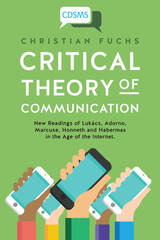 Critical Theory of Communication: New Readings of Lukács, Adorno, Marcuse, Honneth and Habermas in the Age of the Internet
Christian Fuchs
University of Westminster Press, 2016 This book contributes to the foundations of a critical theory of communication as shaped by the forces of digital capitalism. One of the world's leading theorists of digital media Professor Christian Fuchs explores how the thought of some of the Frankfurt School’s key thinkers can be deployed for critically understanding media in the age of the Internet. Five essays that form the heart of this book review aspects of the works of Georg Lukács, Theodor W. Adorno, Herbert Marcuse, Axel Honneth and Jürgen Habermas and apply them as elements of a critical theory of communication's foundations. The approach taken starts from Georg Lukács Ontology of Social Being, draws on the work of the Frankfurt School thinkers, and sets them into dialogue with the Cultural Materialism of Raymond Williams.
Critical Theory of Communication offers a vital set of new insights on how communication operates in the age of information, digital media and social media, arguing that we need to transcend the communication theory of Habermas by establishing a dialectical and cultural-materialist critical theory of communication.
It is the first title in a major new book series 'Critical Digital and Social Media Studies' published by the University of Westminster Press.
 Critical Theory to Structuralism: Philosophy, Politics, and the Human Sciences
Edited by David Ingram
University of Chicago Press, 2010 From Kant to Kierkegaard, from Hegel to Heidegger, continental philosophers have indelibly shaped the trajectory of Western thought since the eighteenth century. Although much has been written about these monumental thinkers, students and scholars lack a definitive guide to the entire scope of the continental tradition. The most comprehensive reference work to date, this eight-volume History of Continental Philosophy will both encapsulate the subject and reorient our understanding of it. Beginning with an overview of Kant’s philosophy and its initial reception, the History traces the evolution of continental philosophy through major figures as well as movements such as existentialism, phenomenology, hermeneutics, and poststructuralism. The final volume outlines the current state of the field, bringing the work of both historical and modern thinkers to bear on such contemporary topics as feminism, globalization, and the environment. Throughout, the volumes examine important philosophical figures and developments in their historical, political, and cultural contexts.
The first reference of its kind, A History of Continental Philosophy has been written and edited by internationally recognized experts with a commitment to explaining complex thinkers, texts, and movements in rigorous yet jargon-free essays suitable for both undergraduates and seasoned specialists. These volumes also elucidate ongoing debates about the nature of continental and analytic philosophy, surveying the distinctive, sometimes overlapping characteristics and approaches of each tradition. Featuring helpful overviews of major topics and plotting road maps to their underlying contexts, A History of Continental Philosophy is destined to be the resource of first and last resort for students and scholars alike.
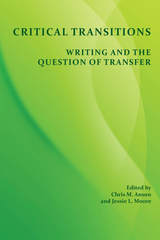 Critical Transitions: Writing and the Question of Transfer
Chris M Anson
University Press of Colorado, 2017 In Critical Transitions: Writing and the Question of Transfer, Chris Anson and Jessie Moore offer an important new collection about prior learning and transfer theories that asks what writing knowledge should transfer, how we might recognize that transfer, and what the significance is—from a global perspective—of understanding knowledge transformation related to writing. The contributors examine strategies for supporting writers' transfer at key critical transitions, including transitions from high-school to college, from first-year writing to writing in the major and in the disciplines, between self-sponsored and academic writing, and between languages. The collection concludes with an epilogue offering next steps in studying and designing for writing transfer.
Contributors: Linda Adler-Kassner, Chris M. Anson, Stuart Blythe, Scott Chien-Hsiung Chiu, Irene Clark, Nicolette Mercer Clement, Stacey M. Cozart, Gita DasBender, Christiane Donahue, Dana Lynn Driscoll, Dana R. Ferris, Gwen Gorzelsky, Regina A. McManigell Grijalva, Carol Hayes, Hogan Hayes, Tine Wirenfeldt Jensen, Ed Jones, Ketevan Kupatadze, Jessie L. Moore, Joe Paszek, Donna Qualley, Liane Robertson, Paula Rosinski, Kara Taczak, Elizabeth Wardle, Carl Whithaus, Gitte Wichmann-Hansen, Kathleen Blake Yancey
 The Critical Turn: Rhetoric and Philosophy in Postmodern Discourse
Edited by Ian Angus and Lenore Langsdorf
Southern Illinois University Press, 1992
Concerned with criticizing representational theories of knowledge by developing alternative concepts of knowing and communicating, Ian Angus and Lenore Langsdorf bring together eight essays that are united by a common theme: the convergence of philosophy and rhetoric.
In the first chapter, Angus and Langsdorf illustrate the centrality of critical reasoning to the nature of questioning itself, arguing that human inquiry has entered a "new situation" where "the convictions and orientations that have traditionally marked the separation of rhetoric and philosophy—the concern for truth and the focus on persuasion—have begun to converge on a new space that can be defined through the central term discourse."In these essays, this convergence of rhetoric and philosophy is addressed as it presents itself to a variety of interests that transcend the traditional boundaries of these fields.
The two editors, Raymie E. McKerrow, Michael J. Hyde and Craig R. Smith, James W. Hikins and Kenneth S. Zagacki, Calvin O. Schrag and David James Miller, and Richard L. Lanigan map this new space, recognizing that such mapping "simultaneously constitutes the territory mapped."
Critical Understanding: The Powers and Limits of Pluralism
Wayne C. Booth
University of Chicago Press, 1979 Critics will always disagree, but, maintains Wayne Booth, their disagreement need not result in critical chaos. In Critical Understanding, Booth argues for a reasoned pluralism—a criticism more various and resourceful than can be caught in any one critic's net. He relates three noted pluralists—Ronald Crane, Kenneth Burke, and M. H. Abrams—to various currently popular critical approaches. Throughout, Booth tests the abstractions of metacriticism against particular literary works, devoting a substantial portion of his discussion to works by W. H. Auden, Henry James, Oliver Goldsmith, and Anatole France.
 Critical University Studies and Performance
Edited by Noe Montez and Ariel Nereson
Vanderbilt University Press, 2026 Critical University Studies and Performance explores how we contend with issues of power, race, class, and gender in higher education, specifically as they relate to the complexities of theater and performance studies programs. In what ways might the fields of theater, performance, and dance studies, as they operate in institutions of higher education, support hegemonic logics as well as model reparative practices, given their perhaps unique disciplinary relationships to staging representation and their shared emphasis on embodiment as a practical and theoretical area of engagement? Montez and Nereson bring together scholars with a diverse range of career experiences and embodied positions inside of higher learning in order to deepen the field’s theoretical inquiry using an ethnic studies framework. By participating in the interdisciplinary discourse of critical university studies, the volume aims to explore how to conduct ethical research that critiques the university while remaining mindful of our always contingent place within it. The contributors examine the ways that the university commodifies minoritarian knowledge, tokenizes the arts, and reproduces inequality. The volume offers strategic ways to build liberatory communities and revolutionary networks among students and faculty alike in order to envision futures within and beyond the academy.
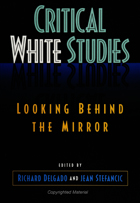 Critical White Studies
Richard Delgado
Temple University Press, 1997 No longer content with accepting whiteness as the norm, critical scholars have turned their attention to whiteness itself. In Critical White Studies: Looking Behind the Mirror, numerous thinkers, including Toni Morrison, Eric Foner, Peggy McIntosh, Andrew Hacker, Ruth Frankenberg, John Howard Griffin, David Roediger, Kathleen Heal Cleaver, Noel Ignatiev, Cherrie Moraga, and Reginald Horsman, attack such questions as:
*How was whiteness invented, and why?
*How has the category whiteness changed over time?
*Why did some immigrant groups, such as the Irish and Jews, start out as nonwhite and later became white?
*Can some individual people be both white and nonwhite at different times, and what does it mean to "pass for white"?
*At what point does pride in being white cross the line into white power or white supremacy?
*What can whites concerned over racial inequity or white privilege do about it?
Science and pseudoscience are presented side by side to demonstrate how our views on whiteness often reflect preconception, not fact. For example, most scientists hold that race is not a valid scientific category -- genetic differences between races are insignificant compared to those within them. Yet, the "one drop" rule, whereby those with any nonwhite heritage are classified as nonwhite, persists even today. As the bell curve controversy shows, race concepts die hard, especially when power and prestige lie behind them.
A sweeping portrait of the emerging field of whiteness studies, Critical White Studies presents, for the first time, the best work from sociology, law, history, cultural studies, and literature. Delgado and Stefancic expressly offer critical white studies as the next step in critical race theory. In focusing on whiteness, not only do they ask nonwhites to investigate more closely for what it means for others to be white, but also they invite whites to examine themselves more searchingly and to "look behind the mirror."
Critical Writings, 1953-1978
Paul De Man
University of Minnesota Press, 1989 Twenty-five essays and reviews not previously collected, most of which were written before 1970, and eight of which are appearing in English for the first time. Valuable for the insights they afford into his development as a critic the essays are also significant in addressing de Man’s consistent views of romanticism, modernism and the dilemmas central to literature in recent centuries.
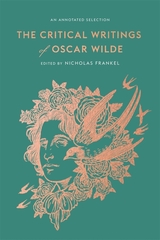 The Critical Writings of Oscar Wilde: An Annotated Selection
Oscar Wilde
Harvard University Press, 2022 An authoritative edition of Oscar Wilde’s critical writings shows how the renowned dramatist and novelist also transformed the art of commentary.
Though he is primarily acclaimed today for his drama and fiction, Oscar Wilde was also one of the greatest critics of his generation. Annotated and introduced by Wilde scholar Nicholas Frankel, this unique collection reveals Wilde as a writer who transformed criticism, giving the genre new purpose, injecting it with style and wit, and reorienting it toward the kinds of social concerns that still occupy our most engaging cultural commentators.
“Criticism is itself an art,” Wilde wrote, and The Critical Writings of Oscar Wilde demonstrates this philosophy in action. Readers will encounter some of Wilde’s most quotable writings, such as “The Decay of Lying,” which famously avers that “Life imitates Art far more than Art imitates life.” But Frankel also includes lesser-known works like “The American Invasion,” a witty celebration of modern femininity, and “Aristotle at Afternoon Tea,” in which Wilde deftly (and anonymously) carves up his former tutor’s own criticism. The essays, reviews, dialogues, and epigrams collected here cover an astonishing range of themes: literature, of course, but also fashion, politics, masculinity, cuisine, courtship, marriage—the breadth of Victorian England. If today’s critics address such topics as a matter of course, it is because Wilde showed that they could. It is hard to imagine a twenty-first-century criticism without him.
 Critically Capitalist: The Spirit of Asset Capitalism in South Korea
Bohyeong Kim
University of Michigan Press, 2025 Critically Capitalist presents an ethnography of South Korea’s asset seekers, including amateur stock investors, real estate enthusiasts, and money coaches, to demonstrate how financialized asset capitalism is sustained. As they hunt for profit margins, rent, and dividends, they simultaneously critique capitalism and posit their pursuit of assets as a form of resistance. Bohyeong Kim theorizes this new spirit of capitalism in South Korea as “critical capitalism,” arguing that it reflects the popular discontent with both national development and financial neoliberalism. As a paradoxical critique and legitimation, Bohyeong Kim argues that critical capitalism valorizes the capitalist economy not through a triumphant narrative, but by highlighting the emotional wounds, destroyed communities, and oppressive tactics of modern capitalism.
Drawing on multi-sited ethnography and in-depth interviews with a broad community of aspiring millionaires, Critically Capitalist illuminates how contemporary capitalism thrives by channeling discontent into financial and real estate markets, which in turn has cemented critical capitalism as the cultural and affective backbone of South Korea’s economy.
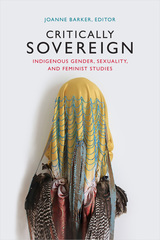 Critically Sovereign: Indigenous Gender, Sexuality, and Feminist Studies
Joanne Barker, editor
Duke University Press, 2017 Critically Sovereign traces the ways in which gender is inextricably a part of Indigenous politics and U.S. and Canadian imperialism and colonialism. The contributors show how gender, sexuality, and feminism work as co-productive forces of Native American and Indigenous sovereignty, self-determination, and epistemology. Several essays use a range of literary and legal texts to analyze the production of colonial space, the biopolitics of “Indianness,” and the collisions and collusions between queer theory and colonialism within Indigenous studies. Others address the U.S. government’s criminalization of traditional forms of Diné marriage and sexuality, the Iñupiat people's changing conceptions of masculinity as they embrace the processes of globalization, Hawai‘i’s same-sex marriage bill, and stories of Indigenous women falling in love with non-human beings such as animals, plants, and stars. Following the politics of gender, sexuality, and feminism across these diverse historical and cultural contexts, the contributors question and reframe the thinking about Indigenous knowledge, nationhood, citizenship, history, identity, belonging, and the possibilities for a decolonial future.
Contributors. Jodi A. Byrd, Joanne Barker, Jennifer Nez Denetdale, Mishuana Goeman, J. Kēhaulani Kauanui, Melissa K. Nelson, Jessica Bissett Perea, Mark Rifkin
Criticism and Social Change
Frank Lentricchia
University of Chicago Press, 1984 "Criticism and Social Change speaks with special timeliness to the role of the political intellectual (here embodied in Kenneth Burke). Lentricchia's provocative analysis demands serious reflection by American radicals."—Frederic Jameson
"A profound meditation on relations obtaining among writing, political consciousness, and criticism—this last taken in its most general sense. It is written with passion and grace; it is shot through with learning, intimate knowledge of the critical tradition, and a deep (though by no means uncritical) understanding of the work (as well as social significance) of Kenneth Burke."—Hayden White
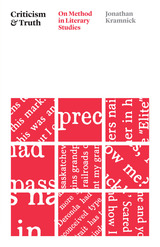 Criticism and Truth: On Method in Literary Studies
Jonathan Kramnick
University of Chicago Press, 2023 A defense and celebration of the discipline of literary studies and its most distinctive practice—close reading.
Does literary criticism offer truths about the world? In Criticism and Truth, Jonathan Kramnick offers a new and surprising account of criticism’s power by zeroing in on its singular method: close reading. Long recognized as the distinctive technique of literary studies, close reading is the critic’s way of pursuing arguments and advancing knowledge, as well as the primary skill taught in the English major. But it is also more than that—a creative, immersive, and transformative writing practice that fosters a unique kind of engagement with the world. Drawing on the rich and varied landscape of contemporary criticism, Kramnick changes how we think about the basic tools of literary analysis, including the art of in-text quotation, summary, and other reading methods, helping us to see them as an invaluable form of humanistic expertise. Criticism and Truth is a call to arms, making a powerful case for the necessity of both literature and criticism within a multidisciplinary university.
As the humanities fight for survival in contemporary higher education, the study of literature doesn’t need more plans for reform. Rather, it needs a defense of the work already being done and an account of why it should flourish. This is what Criticism and Truth offers, in vivid and portable form.
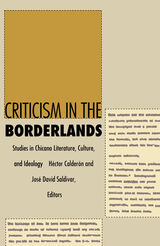 Criticism in the Borderlands: Studies in Chicano Literature, Culture, and Ideology
Héctor Calderón and José David Saldívar, eds.
Duke University Press, 1991 This pathbreaking anthology of Chicano literary criticism, with essays on a remarkable range of texts—both old and new—draws on diverse perspectives in contemporary literary and cultural studies: from ethnographic to postmodernist, from Marxist to feminist, from cultural materialist to new historicist. The editors have organized essays around four board themes: the situation of Chicano literary studies within American literary history and debates about the “canon”; representations of the Chicana/o subject; genre, ideology, and history; and the aesthetics of Chicano literature. The volume as a whole aims at generating new ways of understanding what counts as culture and “theory” and who counts as a theorist. A selected and annotated bibliography of contemporary Chicano literary criticism is also included. By recovering neglected authors and texts and introducing readers to an emergent Chicano canon, by introducing new perspectives on American literary history, ethnicity, gender, culture, and the literary process itself, Criticism in the Borderlands is an agenda-setting collection that moves beyond previous scholarship to open up the field of Chicano literary studies and to define anew what is American literature. Contributors. Norma Alarcón, Héctor Calderón, Angie Chabram, Barbara Harlow, Rolando Hinojosa, Luis Leal, José E. Limón, Terese McKenna, Elizabeth J. Ordóñez, Genero Padilla, Alvina E. Quintana, Renato Rosaldo, José David Saldívar, Sonia Saldívar-Hull, Rosaura Sánchez, Roberto Trujillo
 Criticism Without Authority: Gene Swenson's and Jill Johnston’s Queer Practices
Jennifer Sichel
University of Chicago Press, 2025 A reframing of the history of 1960s New York avant-garde art centered on the queer, genre-bending criticism of Gene Swenson and Jill Johnston.
In the early 1960s, Gene Swenson and Jill Johnston began to imagine art criticism as something unruly and expansive, rejecting modernist appeals to purity and coherence that had overtaken the field. These critics were deeply enmeshed in New York’s avant-garde art scene, and both were explicitly and unapologetically queer. First working independently of one another, then later in dialogue, Swenson and Johnston demanded criticism become life-sustaining, subverting protocols and distorting its form beyond recognition. They utilized criticism as a means of navigating queer existence and reclaimed terms like lesbian, homosexual, mad, and psychotic as their own.
Jennifer Sichel follows the intertwined paths of Swenson and Johnston, providing a history of queer practices that were central to the development of avant-garde art but have been largely overlooked. Criticism Without Authority makes their work visible not just as criticism, but as its own form of art. As Sichel shows, Swenson's and Johnston’s practices, bucking categories and disciplinary formations, resist historical streamlining and stand as a key for unlocking the queerness of postwar art history.
 Critics and Commentators: The Book of Poems as Classic and Literature
Bruce Rusk
Harvard University Press, 2012 At once a revered canon associated with Confucius and the earliest anthology of poetry, the Book of Poems holds a unique place in Chinese literary history. Since early imperial times it served as an ideal of literary perfection, as it provided a basis for defining shi poetry, the most esteemed genre of elite composition. In imperial China, however, literary criticism and classical learning represented distinct fields of inquiry that differed in status, with classical learning considered more serious and prestigious. Literary critics thus highlighted connections between the Book of Poems and later verse, while classical scholars obscured the origins of their ideas in literary theory.
This book explores the mutual influence of literary and classicizing approaches, which frequently and fruitfully borrowed from one another. Drawing on a wide range of sources including commentaries, anthologies, colophons, and inscriptions, Bruce Rusk chronicles how scholars borrowed from critics without attribution and even resorted to forgery to make appealing new ideas look old. By unraveling the relationships through which classical and literary scholarship on the Book of Poems co-evolved from the Han dynasty through the Qing, this study shows that the ancient classic was the catalyst for intellectual innovation and literary invention.
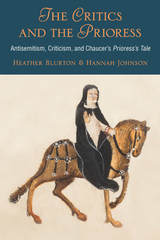 The Critics and the Prioress: Antisemitism, Criticism, and Chaucer's Prioress's Tale
Heather Blurton and Hannah Johnson
University of Michigan Press, 2017 Of all the Canterbury Tales, Geoffrey Chaucer’s Prioress’s Tale, in which a young schoolboy is murdered by Jews for singing a song in praise of the Virgin Mary, poses a problem to contemporary readers because of the antisemitism of the story it tells. Both the Tale’s antisemitism and its “Chaucerianism”—its fitness or aptness as part of the Chaucerian canon—are significant topics of reflection for modern readers, who worry about the Tale’s ethical implications as well as Chaucer’s own implications. Over the past fifty years, scholars have asked: Is the antisemitism in the tale that of the Prioress? Or of Chaucer the pilgrim? Or of Chaucer the author? Or, indeed, whether one ought to discuss antisemitism in the Prioress’s Tale at all, considering the potential anachronism of expecting medieval texts to conform to contemporary ideologies.
The Critics and the Prioress responds to a critical stalemate between the demands of ethics and the entailments of methodology. The book addresses key moments in criticism of the Prioress’s Tale—particularly those that stage an encounter between historicism and ethics—in order to interrogate these critical impasses while suggesting new modes for future encounters. It is an effort to identify, engage, and reframe some significant—and perennially repeated—arguments staked out in this criticism, such as the roles of gender, aesthetics, source studies, and the appropriate relationship between ethics and historicism.
The Critics and the Prioress will be an essential resource for Chaucer scholars researching as well as teaching the Prioress’s Tale. Scholars and students of Middle English literature and medieval culture more generally will also be interested in this book’s rigorous analysis of contemporary scholarly approaches to expressions of antisemitism in Chaucer’s England.
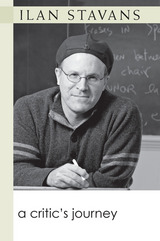 A Critic's Journey
Ilan Stavans
University of Michigan Press, 2009 Ilan Stavans has been a lightning rod for cultural discussion and criticism his entire career. In A Critic's Journey, he takes on his own Jewish and Hispanic upbringing with an autobiographical focus and his typical flair with words, exploring the relationship between the two cultures from his own and also from others' experiences. Stavans has been hailed as a voice for Latino culture thanks to his Hispanic upbringing, but as a Jew and a Caucasian, he's also an outsider to that culture---something that's sharpened his perspective (and some of his critics' swords). In this book of essays, he looks at the creative process from that point of view, exploring everything from the translation of Don Quixote to the Hispanic anti-Semitism and the Holocaust in Latin America. Ilan Stavans is Lewis-Sebring Professor in Latin American and Latino Culture and Five College Fortieth Anniversary Professor at Amherst College. A native of Mexico, he received his doctorate in Latin American Literature from Columbia University. Stavans's books include The Hispanic Condition, On Borrowed Words, Spanglish, Dictionary Days, The Disappearance, Love & Language (with Verónica Albin), Resurrecting Hebrew, and Mr. Spic Goes to Washington, and he has edited books including The Oxford Book of Jewish Stories and the upcoming Norton Anthology of Latino Literature. His story "Morirse está en Hebreo" was made into the award-winning movie My Mexican Shivah. Stavans has received numerous awards, among them a Guggenheim Fellowship, the National Jewish Book Award, an Emmy nomination, the Latino Book Award, Chile's Presidential Medal, the Rubén Darío Distinction, and the Cátedra Roberto Bolaño. His work has been translated into a dozen languages.
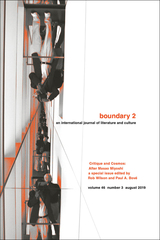 Critique and Cosmos: After Misao Miyoshi
Rob Wilson and Paul A. Bové, special issue editors
Duke University Press This special issue aims to channel the energies, tactics, critical forces, and comparative poetics Masao Miyoshi (1928–2009) carried out in his work from the 1970s on: coming to terms with his concept of aftering (the act of prolonging and transforming impacts across cultural, political, and disciplinary borders) and its temporal, border-crossing, translational, field-reframing, and revisionary effects. Contributors do not assess his scholarship and photography in any memorial, critical, or honorific sense. Instead, they seek to renew the critical visions that he distributed across various fields, from Asian to Asian American studies and beyond. Each takes seriously the mandate inside Miyoshi's work that cultural criticism envision its work broadly and courageously. Essays address the state of Japan studies; China's role in twentieth-century geopolitics, particularly involving Tibet; the critical ethos of "the planetary" in the Anthropocene; and the Korean film Snowpiercer, whose plot represents an embodiment of killer capitalism.
Contributors. Tsering Wangmo Dhompa, Arif Dirlik, Harry Harootunian, Reginald Jackson, Mary Layoun, Christine L. Marran, George Solt, Keijiro Suga, Stefan Tanaka, Chih-ming Wang, Rob Wilson
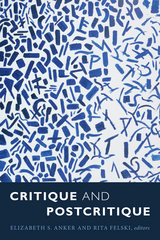 Critique and Postcritique
Elizabeth S. Anker and Rita Felski, editors
Duke University Press, 2017 Now that literary critique's intellectual and political pay-off is no longer quite so self-evident, critics are vigorously debating the functions and futures of critique. The contributors to Critique and Postcritique join this conversation, evaluating critique's structural, methodological, and political potentials and limitations. Following the interventions made by Bruno Latour, Eve Kosofsky Sedgwick, Sharon Marcus and Stephen Best, and others, the contributors assess the merits of the postcritical turn while exploring a range of alternate methods and critical orientations. Among other topics, the contributors challenge the distinction between surface and deep reading; outline how critique-based theory has shaped the development of the novel; examine Donna Haraway's feminist epistemology and objectivity; advocate for a "hopeful" critical disposition; highlight the difference between reading as method and critique as genre; and question critique's efficacy at attending to the affective dimensions of experience. In these and other essays this volume outlines the state of contemporary literary criticism while pointing to new ways of conducting scholarship that are better suited to the intellectual and political challenges of the present.
Contributors: Elizabeth S. Anker, Christopher Castiglia, Russ Castronovo, Simon During, Rita Felski, Jennifer L. Fleissner, Eric Hayot, Heather Love, John Michael, Toril Moi, Ellen Rooney, C. Namwali Serpell
Critique and the Digital
Edited by Erich Hörl, Nelly Y. Pinkrah, and Lotte Warnsholdt
Diaphanes, 2020 Erich Hörl, Nelly Y. Pinkrah, and Lotte Warnsholdt gather diverse perspectives on one agreed-upon condition: that the computational power of today’s world has fundamentally transformed all aspects of it. The contributors investigate and question not only the possible sites of critique but also of the concept of critique. If there used to be a critical subject constituted in the cultural techniques of modernity, and if digitality indicates itself as a product of modernity while at the same time somehow being its very ending, what are the ramifications? Digitality severely alters the critical subject and its spatio-temporal relations, and it therefore interferes with its potential to be a critical subject. The contributors of this volume ask what critique in the digital age might look like and offer specific examples of critique and critical practices.
 A Critique of Adjudication: fin de siècle
Duncan Kennedy
Harvard University Press, 1997 A major statement from one of the foremost legal theorists of our day, this book offers a penetrating look into the political nature of legal, and especially judicial, decision making. It is also the first sustained attempt to integrate the American approach to law, an uneasy balance of deep commitment and intense skepticism, with the Continental tradition in social theory, philosophy, and psychology.
At the center of this work is the question of how politics affects judicial activity-and how, in turn, lawmaking by judges affects American politics. Duncan Kennedy considers opposing views about whether law is political in character and, if so, how. He puts forward an original, distinctive, and remarkably lucid theory of adjudication that includes accounts of both judicial rhetoric and the experience of judging. With an eye to the current state of theory, legal or otherwise, he also includes a provocative discussion of postmodernism.
Ultimately concerned with the practical consequences of ideas about the law, A Critique of Adjudication explores the aspects and implications of adjudication as few books have in this century. As a comprehensive and powerfully argued statement of a critical position in modern American legal thought, it will be essential to any balanced picture of the legal, political, and cultural life of our nation.
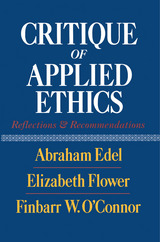 Critique Of Applied Ethics: Reflections and Recommendations
Abraham Edel
Temple University Press, 1994 "Part One is historically rich and analytically sophisticated. It is unquestionably the best treatment of the applied ethics landscape. In Part Two, the authors have an uncanny sense of the issues and a remarkable ability to demythologize the jargon temple of doom, such that controversial philosophical positions are rendered clear.... I look forward to teaching from this book."
--John J. McDermott, Distinguished Professor of Philosophy and Humanities, Professor and Head of Humanities in Medicine, Texas A&M University
Over the past two decades, applied ethics has turned increasingly toward theories that explore ethical questions faced by a variety of professions and away from classic moral concerns. Abraham Edel, Elizabeth Flower, and Finbarr O'Connor utilize examples of professional, public policy, and personal decision making to illustrate the strengths and limitations of the application of ethics in a rapidly changing world.
They first discuss the emergence of applied ethics and how it functions within a philosophical tradition. They are not concerned, however, with solving the problems they expose, but with employing them as a means to critique applied ethics. Using human rights and health and welfare issues, the authors examine the subsequent ethical stumbling blocks that surround the "moral order" of these social concerns. Through a historical discussion of the abundant ethical theories posited since the Enlightenment, they suggest ways to decide which can serve as intellectual tools for applied ethics and consider how knowledge and experience enter into any moral decision.
Turning to the factors pertinent in the analysis and solution of moral problems, they dissect the underlying influences on the practice of ethics, the way in which a moral problem is diagnosed and its relevant contexts established, the ensuing conflicts between the concerns of the individual and of society, and the degree of inventiveness in issues of morality. The authors suggest that, instead of viewing theory as a set consequence derived from prior applications, relating theory to practice will engage a process of mutual aid, from which each element will learn, refining and improving the other.
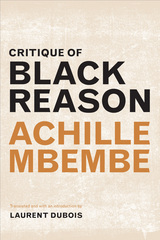 Critique of Black Reason
Achille Mbembe
Duke University Press, 2017 In Critique of Black Reason eminent critic Achille Mbembe offers a capacious genealogy of the category of Blackness—from the Atlantic slave trade to the present—to critically reevaluate history, racism, and the future of humanity. Mbembe teases out the intellectual consequences of the reality that Europe is no longer the world's center of gravity while mapping the relations among colonialism, slavery, and contemporary financial and extractive capital. Tracing the conjunction of Blackness with the biological fiction of race, he theorizes Black reason as the collection of discourses and practices that equated Blackness with the nonhuman in order to uphold forms of oppression. Mbembe powerfully argues that this equation of Blackness with the nonhuman will serve as the template for all new forms of exclusion. With Critique of Black Reason, Mbembe offers nothing less than a map of the world as it has been constituted through colonialism and racial thinking while providing the first glimpses of a more just future.
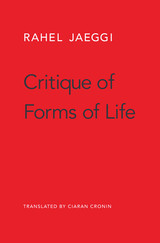 Critique of Forms of Life
Rahel Jaeggi
Harvard University Press, 2018 For many liberals, the question “Do others live rightly?” feels inappropriate. Liberalism seems to demand a follow-up question: “Who am I to judge?” Peaceful coexistence, in this view, is predicated on restraint from morally evaluating our peers. But Rahel Jaeggi sees the situation differently. Criticizing is not only valid but also useful, she argues. Moral judgment is no error; the error lies in how we go about judging.
One way to judge is external, based on universal standards derived from ideas about God or human nature. The other is internal, relying on standards peculiar to a given society. Both approaches have serious flaws and detractors. In Critique of Forms of Life, Jaeggi offers a third way, which she calls “immanent” critique. Inspired by Hegelian social philosophy and engaged with Anglo-American theorists such as John Dewey, Michael Walzer, and Alasdair MacIntyre, immanent critique begins with the recognition that ways of life are inherently normative because they assert their own goodness and rightness. They also have a consistent purpose: to solve basic social problems and advance social goods, most of which are common across cultures. Jaeggi argues that we can judge the validity of a society’s moral claims by evaluating how well the society adapts to crisis—whether it is able to overcome contradictions that arise from within and continue to fulfill its purpose.
Jaeggi enlivens her ideas through concrete, contemporary examples. Against both relativistic and absolutist accounts, she shows that rational social critique is possible.
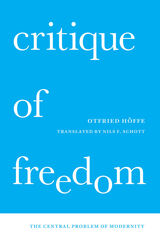 Critique of Freedom: The Central Problem of Modernity
Otfried Höffe
University of Chicago Press, 2020 In this ambitious book, philosopher Otfried Höffe provides a sophisticated account of the principle of freedom and its role in the project of modernity. Höffe addresses a set of complex questions concerning the possibility of political justice and equity in the modern world, the destruction of nature, the dissolving of social cohesion, and the deregulation of uncontrollable markets. Through these considerations, he shows how the idea of freedom is central to modernity, and he assesses freedom’s influence in a number of cultural dimensions, including the natural, economic and social, artistic and scientific, political, ethical, and personal-metaphysical.
Neither rejecting nor defending freedom and modernity, he instead explores both from a Kantian point of view, looking closely at the facets of freedom’s role and the fundamental position it has taken at the heart of modern life. Expanding beyond traditional philosophy, Critique of Freedom develops the building blocks of a critical theory of technology, environmental protection, economics, politics, medicine, and education. With a sophisticated yet straightforward style, Höffe draws on a range of disciplines in order to clearly distinguish and appreciate the many meanings of freedom and the indispensable role they play in liberal society.
 A Critique of Political Science: A History of the Caucus for a New Political Science
Clyde W. Barrow
University of Michigan Press, 2026 The Caucus for a New Political Science (CNPS) was created in 1967, when several hundred dissident political scientists walked out of the annual meeting of the American Political Science Association (APSA) to protest the Association’s refusal to take an official position against the Vietnam War. The CNPS soon expanded its mission to challenge the APSA’s behavioral and pluralist orthodoxy, protest a lack of democratic procedure and transparency in the organization, and oppose ties between the leadership and government agencies involved in covert activities. It remains unique among the more than 50 Organized Sections of APSA as the only section that defines itself ideologically and politically, rather than by research topic, methodology, subfield, or identity status.
A Critique of Political Science distinguishes between the discipline of political science (methods and concepts) and the profession of political science (persons and institutions) to move disciplinary history beyond its current form as intellectual history toward a politics of political science. The book argues that understanding the development of a discipline requires the same type of theoretical analysis that political scientists apply to other political institutions. By examining universities and professional associations as political institutions, this approach puts political struggles and ideological conflict at the very core of disciplinary history. In reviewing 50 years of debate, controversy, and in-fighting in the political science profession, the book serves as a critique of the profession and the discipline of political science, which remains woefully disengaged from the concerns of ordinary citizens, particularly the working class and the poor throughout the world.
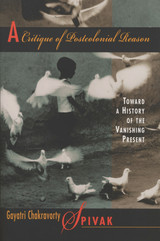 A Critique of Postcolonial Reason: Toward a History of the Vanishing Present
Gayatri Chakravorty Spivak
Harvard University Press, 1999 Are the “culture wars” over? When did they begin? What is their relationship to gender struggle and the dynamics of class? In her first full treatment of postcolonial studies, a field that she helped define, Gayatri Chakravorty Spivak, one of the world’s foremost literary theorists, poses these questions from within the postcolonial enclave.
“We cannot merely continue to act out the part of Caliban,” Spivak writes; and her book is an attempt to understand and describe a more responsible role for the postcolonial critic. A Critique of Postcolonial Reason tracks the figure of the “native informant” through various cultural practices—philosophy, history, literature—to suggest that it emerges as the metropolitan hybrid. The book addresses feminists, philosophers, critics, and interventionist intellectuals, as they unite and divide. It ranges from Kant’s analytic of the sublime to child labor in Bangladesh. Throughout, the notion of a Third World interloper as the pure victim of a colonialist oppressor emerges as sharply suspect: the mud we sling at certain seemingly overbearing ancestors such as Marx and Kant may be the very ground we stand on.
A major critical work, Spivak’s book redefines and repositions the postcolonial critic, leading her through transnational cultural studies into considerations of globality.
The Critique of Pure Modernity: Hegel, Heidegger, and After
David Kolb
University of Chicago Press, 1986 "Modernity" is a troubling concept, not only for scholars but for the general public, for it seems to represent a choice between oppressive traditions and empty, rootless freedom. Seeking a broader understanding of modernity, Kolb first considers the views of Weber and then discusses in detail the pivotal writings of Hegel and Heidegger. He uses the novel strategy of presenting Heidegger's critique of Hegel and then suggesting the critique of Heidegger that Hegel might have made.
Kolb offers his own views, proposing the possibility of a meaningful life that is free but still rooted in shared contexts. He concludes with comments on "postmodernity" as discussed by Lyotard and others, arguing persuasively against the presupposition of a unified Modern or Postmodern Age.
The Critique of Scientific Reason
Kurt Hübner
University of Chicago Press, 1983 A systematic critique of the notion that natural science is the sovereign domain of truth, Critique of Scientific Reason uses an extensive and detailed investigation of physics—and in particular of Einstein's theory of relativity—to argue that the positivistic notion of rationality is not only wrongheaded but false. Kurt Hübner contends that positivism ignores both the historical dimension of science and the basic structures common to scientific theory, myth, and so-called subjective symbolic systems. Moreover, Hübner argues, positivism has led in our time to a widespread disillusionment with science and technology.
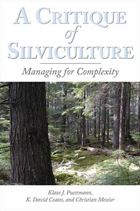 A Critique of Silviculture: Managing for Complexity
Klaus J. Puettmann, K. David Coates, and Christian Messier
Island Press, 2008 A Critique of Silviculture invites forestry professionals, ecologists, and land managers to reexamine the foundational principles of forest management in light of emerging science and shifting societal demands. As forests are increasingly expected to deliver not only timber but also biodiversity, resilience, and climate regulation, this book offers a timely reassessment of silviculture’s role in meeting those complex goals.
The authors trace the historical roots of silvicultural practice, then explore how its traditional emphasis on uniformity and productivity is now being challenged by deeper insights from ecology and complexity science. Rather than managing forests as simplified systems, the book advocates for treating them as dynamic, adaptive networks—rich in variability, interdependence, and change.
Drawing on new research and real-world examples, A Critique of Silviculture outlines a path toward more holistic and adaptive forest stewardship. Readers will gain a deeper understanding of how forest diversity supports ecological function, how resilience can be cultivated through management practices, and why bridging the gap between silviculture and ecological thinking is critical for sustainable outcomes.
This book equips practitioners with a thoughtful framework for managing forests in a way that embraces complexity, honors ecological integrity, and responds to the evolving expectations placed on forested landscapes. It is essential reading for those committed to guiding the future of forestry with insight, flexibility, and purpose.
Critique of the Political Economy of the Media: Foundations and Applications
Manfred Knoche
University of Westminster Press, 2025 Critique of the Political Economy of the Media is an approach to the critical analysis of the media’s role in contemporary society. It is based on Karl Marx’s theory of capitalism, using a combination of critical social theory and empirical social research for studying what role the media has in capitalism. It introduces a theoretical framework that engages with important themes including the crisis-ridden structural transformation of the media industry, media economics in the age of digital communications, media concentration, science communication and open access publishing, media technologies, the role of advertising in capitalism, and the contradictions of alternative media in capitalism.
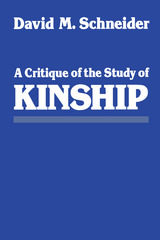 A Critique of the Study of Kinship
David M. Schneider
University of Michigan Press, 1984 Schneider challenges the assumptions on which anthropology has depended for the last century by showing that one of the major categories in terms of which social life has been understood is largely untenable. The idea of kinship is subject to penetrating scrutiny. Unlike the proverbial Emperor, it is not that kinship has no clothes. The question is whether there is anything at all underneath those clothes. And even when the clothes appear to be shreds and patches held together by a web of illusions.
The critique uses a novel device in that the same set of ethnographic “facts” are looked at through different theories. This reveals a good deal about the different theories. By the same token, of course, this critique goes into the question of what a “fact” of “kinship” might be and how to recognize one either at home or in the field.
Schneider’s critique also uses history to raise cogent questions about how kinship has been studied. But it is not as 20/20 hindsight that history is used. Due respect is paid to the climate of the time, as well as the climatic changes and the ways in which these helped to create the emperor’s clothes. Right, wrong, or indifferent, Schneider’s study of how the emperor “kinship” was dressed and then redressed as the winds of change threatened disarray, proves challenging to the theories by which anthropology lives, as well as to the specifically privileged domain of “kinship.” The implications of this study for a wide range of problems within theoretical anthropology are striking.
Critique: The Stakes of Form
Edited by Sami Khatib, Holger Kuhn, Oona Lochner, Isabel Mehl, and Beate Söntgen
Diaphanes, 2020 Critique is a form of thinking and acting. Since the end of the 18th century, there has been a dynamization and fluidization of the understanding of form, as concepts such as the break, marginalization, tearing, and opening indicate. As a philosophical problem, the question of form arises in critical theory from Marx to Adorno. Since the 1960s, literary practices have proliferated that generate critical statements less through traditional argument and more through the programmatic use of formal means. At the same time, the writing self, along with its attitudes, reflections, affects, and instruments, visibly enters the critical scene. This volume examines how the interdependence of critique, object, and form translates into critical stances, understood as learnable, reproducible gestures, which bear witness to changing conditions and media of critical practice.
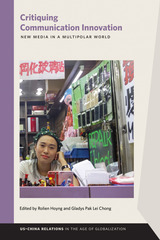 Critiquing Communication Innovation: New Media in a Multipolar World
Rolien Hoyng
Michigan State University Press, 2022 Challenges to Silicon Valley’s dominant role in conjuring and patenting the world’s technological futures are arising around the world. As digital media technologies emerge from new, globally dispersed locations, a multipolar order of communication innovation seems to be in the making. Yet recovering our ability to imagine futures otherwise requires negotiating conditions—economic, geopolitical, sociocultural, and ecological—rather than reproducing them under the pretext of breaking with the present. The essays in this volume examine research on such conditions critically and comparatively in a variety of geographies. Paying due attention to China’s rise as an innovative platform society and AI powerhouse, this book addresses the broader question of a shifting world order and trends that are shaped by China’s influence but that extend beyond its borders. Looking at multipolar communication innovation through various critical lenses, our technological futures simultaneously appear to be old, new, and uncertain, while the infrastructures and platforms underpinning communication innovation both affiliate communities and set them apart.
Cronica de Dom Joao de Castro
Leonardo Nunes
Harvard University Press For nearly four centuries this Chronicle has lain in manuscript; it recently came into the possession of Harvard University as part of the Palha collection. It gives a daily record of the facts of the most important event, the second siege of Diu, in the administration of Joao de Castro, Governor and ultimately Viceroy in the Portuguese dominions in India toward the middle of the sixteenth century. The text is entirely in Portuguese.
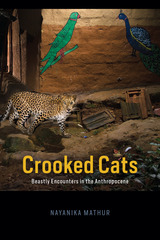 Crooked Cats: Beastly Encounters in the Anthropocene
Nayanika Mathur
University of Chicago Press, 2021 Big cats—tigers, leopards, and lions—that make prey of humans are commonly known as “man-eaters.” Anthropologist Nayanika Mathur reconceptualizes them as cats that have gone off the straight path to become “crooked.” Building upon fifteen years of research in India, this groundbreaking work moves beyond both colonial and conservationist accounts to place crooked cats at the center of the question of how we are to comprehend a planet in crisis.
There are many theories on why and how a big cat comes to prey on humans, with the ecological collapse emerging as a central explanatory factor. Yet, uncertainty over the precise cause of crookedness persists. Crooked Cats explores in vivid detail the many lived complexities that arise from this absence of certain knowledge to offer startling new insights into both the governance of nonhuman animals and their intimate entanglements with humans. Through creative ethnographic storytelling, Crooked Cats illuminates the Anthropocene in three critical ways: as method, as a way of reframing human-nonhuman relations on the planet, and as a political tool indicating the urgency of academic engagement. Weaving together “beastly tales” spun from encounters with big cats, Mathur deepens our understanding of the causes, consequences, and conceptualization of the climate crisis.
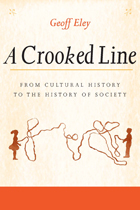 A Crooked Line: From Cultural History to the History of Society
Geoff Eley
University of Michigan Press, 2005 "Eley brilliantly probes transformations in the historians' craft over the past four decades. I found A Crooked Line engrossing, insightful, and inspiring."
--Lizabeth Cohen, author of A Consumers' Republic
"A Crooked Line brilliantly captures the most significant shifts in the landscape of historical scholarship that have occurred in the last four decades. Part personal history, part insightful analysis of key methodological and theoretical historiographical tendencies since the late 1960s, always thoughtful and provocative, Eley's book shows us why history matters to him and why it should also matter to us."
--Robert Moeller, University of California, Irvine
"Part genealogy, part diagnosis, part memoir, Eley's account of the histories of social and cultural history is a tour de force."
--Antoinette Burton, Professor of History and Catherine C. and Bruce A. Bastian Professor of Global and Transnational Studies, University of Illinois
"Eley's reflections on the changing landscape of academic history in the last forty years will interest and benefit all students of the discipline. Both a native informant and an analyst in this account, Eley combines the two roles superbly to produce one of most engaging and compelling narratives of the recent history of History."
--Dipesh Chakrabarty, author of Provincializing Europe
Using his own intellectual biography as a narrative device, Geoff Eley tracks the evolution of historical understanding in our time from social history through the so-called "cultural turn," and back again to a broad history of society.
A gifted writer, Eley carefully winnows unique experiences from the universal, and uses the interplay of the two to draw the reader toward an organic understanding of how historical thinking (particularly the work of European historians) has evolved under the influence of new ideas. His work situates history within History, and offers students, scholars, and general readers alike a richly detailed, readable guide to the enduring value of historical ideas.
Geoff Eley is Professor of History at the University of Michigan.
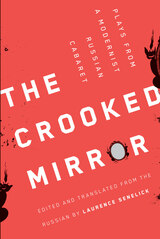 The Crooked Mirror: Plays from a Modernist Russian Cabaret
Edited and translated from the Russian by Laurence Senelick
Northwestern University Press, 2023 An anthology of plays from the Crooked Mirror, the leading Russian cabaret of the Silver Age
“Don’t blame the mirror if your mug is crooked!”
Parody dominated early twentieth-century Russian cabaret, but the Crooked Mirror extended its lampooning to theatrical practice itself. Eclectic in its targets, the Saint Petersburg theater mocked not only naturalism but also symbolism, futurism, and “Meyerholditis.” Its shows parodied both the stale conventions of melodrama and opera and the stylized trends in staging, wielding satire to provoke artistic and social reform. Though the theater was liquidated in 1931, many of its innovations would become standard techniques in cabaret repertoires and improv revues.
As a cultural phenomenon of the Silver Age, the Crooked Mirror deserves critical attention, yet it has received only fleeting mention in histories of Russian theater and biographies of its major figures. This anthology fills a critical gap in our understanding of that heady era by bringing together key plays—most appearing in English here for the first time—together with short biographies of their authors and robust commentary and annotations. Laurence Senelick guides readers through the artistic and ideological evolution of the Crooked Mirror and provides performers with the material to bring its innovations back to the stage.
Crooked Past: The History of a Frontier Mining Camp
Terrence Cole
University of Alaska Press, 1991 The crookedest street in Fairbanks, an Alaskan sourdough once said, is rightly named for town founder E. T. Barnette. Crooked Past, Terrence Cole's lively history of Fairbanks examines one of Alaska's most notorious con men. Barnette, a footloose fortune hunter who had served time in an Oregon penitentiary, came north during the Klondike gold rush of 1897-1898. He struck it rich after founding the city of Fairbanks in the early 1900s. Yet less than ten years later he was run out of the territory and allegedly disappeared in Mexico, becoming the most hated man in the town he founded and fled.
Crooked Road: The Story of the Alaska Highway
David A. Remley
University of Alaska Press, 2008 Crooked Road tells the tale of how the Alaska Highway was built during World War II. David Remley chronicles how Americans and Canadians mapped and built the highway under the 1942 authorization of President Franklin D. Roosevelt, who ordered its construction for the joint defense of the United States and Canada. Crooked Road draws upon archival images and oral histories from those who lived in the prior unpaved wilderness and those who regularly drive on the highway today, and ultimately offers a fascinating historical account of the expansion of the American landscape.
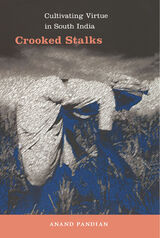 Crooked Stalks: Cultivating Virtue in South India
Anand Pandian
Duke University Press, 2009 How do people come to live as they ought to live? Crooked Stalks seeks an answer to this enduring question in diverse practices of cultivation: in the moral horizons of development intervention, in the forms of virtue through which people may work upon their own desires, deeds, and habits, and in the material labors that turn inhabited worlds into environments for both moral and natural growth. Focusing on the colonial subjection and contemporary condition of the Piramalai Kallar caste—classified, condemned, and policed for decades as a “criminal tribe”—Anand Pandian argues that the work of cultivation in all of these senses has been essential to the pursuit of modernity in south India. Colonial engagements with the Kallars in the early twentieth century relied heavily upon agrarian strategies of moral reform, an approach that echoed longstanding imaginations of the rural cultivator as a morally cultivated being in Tamil literary, moral, and religious tradition. These intertwined histories profoundly shape how people of the community struggle with themselves as ethical subjects today. In vivid, inventive, and engaging prose, Pandian weaves together ethnographic encounters, archival investigations, and elements drawn from Tamil poetry, prose, and popular cinema. Tacking deftly between ploughed soils and plundered orchards, schoolroom lessons and stationhouse registers, household hearths and riverine dams, he reveals moral life in the postcolonial present as a palimpsest of traces inherited from multiple pasts. Pursuing these legacies through the fragmentary play of desire, dream, slander, and counsel, Pandian calls attention not only to the moral potential of ordinary existence, but also to the inescapable force of accident, chance, and failure in the making of ethical lives. Rarely are the moral coordinates of modern power sketched with such intimacy and delicacy.
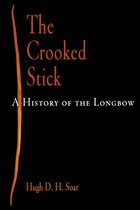 The Crooked Stick: A History of the Longbow
Hugh D. H. Soar
Westholme Publishing, 2004 The Complete Story of a Legendary Weapon
"Spendidly enthusiastic. . . . Soar's book is indispensable."—Bernard Cornwell "A fascinating study of a forgotten weapon. . . . For centuries the longbow dominated battle, affecting the fates of nations" —Wall Street Journal "Bowyers, bowhunters, target archers and students of archery history should all find cause for celebration with Hugh Soar's concise but authoritative text." — Traditional Bowhunter On a clear July morning in 1346, a small force approached the walls of Caen for battle. The attackers rode to the field on horseback, banners and pennants fluttering in the light breeze. Behind them marched bowmen in tightly ranked units. At the sound of a crisp battle horn, they halted. A twinge of apprehension rippled through the thousands of Norman defenders as they looked down at the opposing army, for precision archery formation had long since disappeared as a military concept in medieval France. Here was not the expected rabble of unrated bucolics cowed by the might of France; confronting them was a quietly determined group of trained soldiers armed not with the familiar arbalest but with a new and strange weapon of great length. The defenders of Caen were about to meet the English war bow and its deadly battle shaft. For the next 100 years, this weapon, the "crooked stick," would command continental battlefields, etching its fearsome reputation at Crécy, Poitiers, Agincourt, and Verneuil, while establishing England as an international power for the first time. Although the longbow is best known for its deployment during the Hundred Years' War, its origins lie with ancient Saxon seafighters and Welsh craftsmen, while today the bow is a vibrant part of the traditional archery scene. In The Crooked Stick: A History of the Longbow, historian Hugh D. H. Soar pulls together all of these strings, presenting the engaging story of this most charismatic standoff weapon. After a careful consideration of Neolithic bows and arrows, the author describes the bow's use in the medieval hunt and its associated customs. The longbow made its deepest mark in warfare, however, and the author follows the weapon's development and tactical deployment from the hand-bow of William the Conqueror's campaigns to the continental set-piece battles between England and France. Although soldiers reluctantly gave up the longbow for firearms, its recreational use became immensely popular, particularly during the Regency and Victorian periods. In the twentieth century it appeared as if the longbow would disappear into the fog of legend, but a new interest in traditional craft and expertise gained hold, and the pleasure of using this ancient instrument is now firmly part of archery around the world. Through a remarkable command of manuscript and printed sources and a judicious use of material evidence, including his own important collection of rare longbows, Hugh Soar establishes the deep connections of this bow to England, Scotland, and Wales. Figures in the past like William Wallace, Edward III, and Henry V appear alongside detailed descriptions of bows, strings, arrows, and arrowheads, while the rise of institutions and craftsmen devoted to the longbow are presented to show how knowledge of this weapon was carried forward across the centuries. Today, those in the sport of archery and military historians will find that The Crooked Stick will enhance their own interests in a weapon of legendary status. In addition to the illustrated text, the book contains appendices detailing the history and design of bracers, tabs and tips, quivers, and arrowheads associated with the longbow.
The Crooked Stovepipe: Athapaskan Fiddle Music and Square Dancing in Northeast Alaska and Northwest Canada
Craig Mishler
University of Illinois Press, 1993 Named for a popular local fiddle tune, The Crooked Stovepipe is a rollicking, detailed, first-ever study of the indigenous fiddle music and social dancing enjoyed by the Gwich'in Athapskan Indians and other tribal groups in northeast Alaska, the Yukon, and the Northwest Territories. Though the music has obvious roots in the British Isles, French Canada, and the American South, the Gwich'in have used it in shaping their own aesthetic, which is apparent in their choice of fiddle tunings, bowing techniques, foot clogging, dances, and a distinctively stratified tune repertoire.
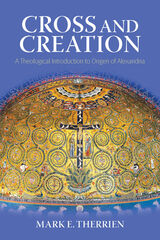 Cross and Creation: A Theological Introduction to Origen of Alexandria
Mark E. Therrien
Catholic University of America Press, 2022 Even though the theology of Origen of Alexandria has shaped the Christian Tradition in almost every way, the controversies over his legacy have been seemingly endless. One major interpretative trend, for example, has suggested Origen’s theology is really akin to the heterodox Gnostics against whom he wrote than the actual teaching of the Gospel, since he (supposedly) had a disdainful attitude towards Creation and ultimately saw little redemptive meaning in the Passion.
In Cross and Creation: A Theological Introduction to Origen of Alexandria, Mark Therrien offers an original interpretation of Origen’s theology. Focusing on some of Origen’s most important works (especially On First Principles and the Commentary on John, but ultimately making reference to his writings more broadly), this book retrieves and examines some of the foundational pillars of Origen’s theology through close readings and re-examinations of those texts. It examines eight of these theological foundations: God, Christ, the Holy Spirit, the end, the soul, the world, the cross, and deification. Moreover, by showing the connections between Origen’s understanding of these foundational pillars, it also shows the coherence of his theology as a whole. Taken collectively, what emerges from these eight chapters is that two doctrines specially shape Origen’s theology: Cross and Creation. As Therrien shows, Origen did not hold contempt for Creation. Rather, Origen thinks that Creation emerges from the very life of God as eternally foreknown and provided for in the person of Christ, the Wisdom of God the Father. Moreover, he also holds that, though fallen, Creation will be restored according to its original, eternal intention in God precisely through the Passion of Jesus Christ on the Cross. The Cross is thus not minimalized in Origen’s theology; it is rather its very center.
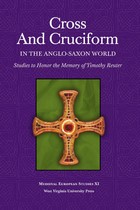 Cross and Cruciform in the Anglo-Saxon World: Studies to Honor the Memory of Timothy Reuter
SARAH LARRATT KEEFER
West Virginia University Press, 2010 Cross and Cruciform in the Anglo-Saxon World: Studies to Honor the Memory of Timothy Reuter is edited by Sarah Larratt Keefer, Karen Louise Jolly, and Catherine E. Karkov and is the third and final volume of an ambitious research initiative begun in 1999 concerned with the image of the cross, showing how its very material form cuts across both the culture of a society and the boundaries of academic disciplines—history, archaeology, art history, literature, philosophy, and religion—providing vital insights into how symbols function within society. The flexibility, portability, and adaptability of the Anglo-Saxon understanding of the cross suggest that, in pre-Conquest England, at least, the linking of word, image, and performance joined the physical and spiritual, the temporal and eternal, and the earthly and heavenly in the Anglo-Saxon imaginative landscape. This volume is divided into three sections. The first section of the collection focuses on representations of “The Cross: Image and Emblem,” with contributions by Michelle P. Brown, David A. E. Pelteret, and Catherine E. Karkov. The second section, “The Cross: Meaning and Word,” deals in semantics and semeology with essays by Éamonn Ó Carragáin, Helen Damico, Rolf Bremmer, and Ursula Lenker. The third section of the book, “The Cross: Gesture and Structure,” employs methodologies drawn from archaeology, new media, and theories of rulership to develop new insights into subjects as varied as cereal production, the little-known Nunburnholme Cross, and early medieval concepts of political power. Cross and Cruciform in the Anglo-Saxon World: Studies to Honor the Memory of Timothy Reuter is a major collection of new research, completing the publication series of the Sancta Crux/Halig Rod project. Cross and Culture in Anglo-Saxon England: Studies in Honor of George Hardin Brown, Volume 2 in this series, remains available from West Virginia University Press.
Cross and Culture in Anglo-Saxon England: Studies in Honor of George Hardin Brown
KAREN L. JOLLY
West Virginia University Press, 2008 As Volume One in the Sancta Crux/Halig Rod series, this collection of new research offers fascinating glimpses into how the way the cross, the central image of Christianity in the Anglo-Saxon period, was textualized, reified, visualized, and performed. The cross in early medieval England was so ubiquitous it became invisible to the modern eye, and yet it played an innovative role in Anglo-Saxon culture, medicine, and popular practice. It represented one of the most powerful relics, emblems, and images in medieval culture because it could be duplicated in many forms and was accessible to every layer of society. The volume speaks to critical issues of cultural interpretation for Anglo-Saxonists, medievalists of all disciplines, and those interested in cultural studies in general.
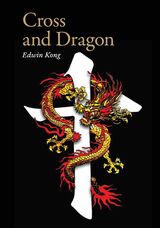 Cross and Dragon – Matteo Ricci and China: A Screenplay by Edwin Kong
Edwin Kong
Hong Kong University Press, 2025 In Ming China, foreigners were barred from entry—until Matteo Ricci found another way in.
Edwin Kong brings to life the extraordinary journey of Matteo Ricci, the Italian Jesuit whose daring mission to China reshaped the course of East-West relations. Sent by the Pope in the late sixteenth century to convert the Chinese Emperor, Ricci faced an impenetrable barrier—Ming Dynasty China was closed to foreigners. But armed with knowledge and an unmatched mastery of memory techniques, he found another way in.
Disguised as a Buddhist monk, Ricci captivated scholars, officials, and eventually the imperial court, introducing Western science while immersing himself in Chinese culture. His thirty-year odyssey from rural villages to the heart of the Forbidden City proved that engagement, rather than conquest, could bridge civilizations.
Told in the form of a screenplay, Cross and Dragon is a gripping historical drama with urgent contemporary resonance, exploring the power of faith and cultural exchange in the face of division.
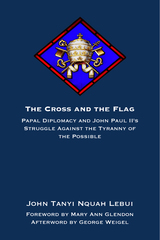 The Cross and the Flag: Papal Diplomacy and John Paul II's Struggle Against the Tyranny of the Possible
John Tanyi Nquah Lebui
St. Augustine's Press, 2024 What is papal diplomacy and what role does it play on the larger geopolitical stage? Why does it matter what popes say to a global audience? "As John Tanyi points out, papal diplomacy has followed a trajectory all its own over the years. In today’s globalized world, the Holy See stands out as an important communicator with a widely respected moral voice. It is often said that 'When the Pope speaks, the world listens.' What sets the diplomatic voices of the Holy Father and his envoys apart from all others is that they speak and act for the good of humanity––not just for the sovereign entity they represent, and not just for Catholics. As a former foreign minister of the Holy See, Cardinal Jean Louis Tauran, once described the mission of papal diplomats: 'Our duty is to promote and defend not only the freedom and rights of Catholic communities around the world, but also to promote certain principles without which there is no civilization.'"
The particular example of Pope John Paul II is a groundbreaking example of the critical nature of ecclesiastical diplomacy and why popes as diplomats are playing at a greater level than other statesmen. As George Weigel notes, popes must combat all the problems of the world, but also importantly what he calls the 'tyranny of the possible'––that is, in all things compromise and complacency will play a part. It is the position occupied by one man, the heir of St. Peter, to know when to defy the entirety of global politics (and sometimes what seems like common sense) to say 'yes' and 'no' definitively in light of unchanging truths.
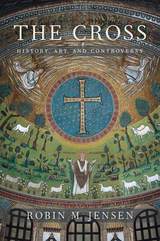 The Cross: History, Art, and Controversy
Robin M. Jensen
Harvard University Press, 2017 The cross stirs intense feelings among Christians as well as non-Christians. Robin Jensen takes readers on an intellectual and spiritual journey through the two-thousand-year evolution of the cross as an idea and an artifact, illuminating the controversies—along with the forms of devotion—this central symbol of Christianity inspires.
Jesus’s death on the cross posed a dilemma for Saint Paul and the early Church fathers. Crucifixion was a humiliating form of execution reserved for slaves and criminals. How could their messiah and savior have been subjected to such an ignominious death? Wrestling with this paradox, they reimagined the cross as a triumphant expression of Christ’s sacrificial love and miraculous resurrection. Over time, the symbol’s transformation raised myriad doctrinal questions, particularly about the crucifix—the cross with the figure of Christ—and whether it should emphasize Jesus’s suffering or his glorification. How should Jesus’s body be depicted: alive or dead, naked or dressed? Should it be shown at all?
Jensen’s wide-ranging study focuses on the cross in painting and literature, the quest for the “true cross” in Jerusalem, and the symbol’s role in conflicts from the Crusades to wars of colonial conquest. The Cross also reveals how Jews and Muslims viewed the most sacred of all Christian emblems and explains its role in public life in the West today.
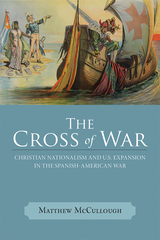 The Cross of War: Christian Nationalism and U.S. Expansion in the Spanish-American War
Matthew McCullough
University of Wisconsin Press, 2014 The Cross of War documents the rise of “messianic interventionism”—the belief that America can and should intervene altruistically on behalf of other nations. This stance was first embraced in the Spanish-American War of 1898, a war that marked the dramatic emergence of the United States as an active world power and set the stage for the foreign policy of the next one hundred years. Responding to the circumstances of this war, an array of Christian leaders carefully articulated and defended the notion that America was responsible under God to extend freedom around the world—by force, if necessary. Drawing from a wide range of sermons and religious periodicals across regional and denominational lines, Matthew McCullough describes the ways that many American Christians came to celebrate military intervention as a messianic sacrifice, to trace the hand of God in a victory more painless and complete than anyone had imagined, and to justify the shift in American foreign policy as a divine calling.
Cross Over Water
Richard Yañez
University of Nevada Press, 2011 Raul Luis “Ruly” Cruz is a young Mexican American who lives in El Paso, just across the Rio Grande from Mexico, home of his an-cestors and some of his current relatives. As he grows from awkward adolescent to manhood, he negotiates the precarious borders of family, tradition, and identity trying to find his own place in the Chicano community and in the larger world. This is an engaging and moving story of growing up in a borderland that is not only geographical but cultural as well.
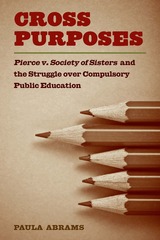 Cross Purposes: Pierce v. Society of Sisters and the Struggle over Compulsory Public Education
Paula Abrams
University of Michigan Press, 2009 "A definitive study of an extremely important, though curiously neglected, Supreme Court decision, Pierce v. Society of Sisters."
---Robert O'Neil, Professor of Law Emeritus, University of Virginia School of Law "A careful and captivating examination of a dramatic and instructive clash between nationalism and religious pluralism, and of the ancient but ongoing struggle for control over the education of children and the formation of citizens."
---Richard W. Garnett, Professor of Law and Associate Dean, Notre Dame Law School
"A well-written, well-researched blend of law, politics, and history."
---Joan DelFattore, Professor of English and Legal Studies, University of Delaware In 1922, the people of Oregon passed legislation requiring all children to attend public schools. For the nativists and progressives who had campaigned for the Oregon School Bill, it marked the first victory in a national campaign to homogenize education---and ultimately the populace. Private schools, both secular and religious, vowed to challenge the law. The Catholic Church, the largest provider of private education in the country and the primary target of the Ku Klux Klan campaign, stepped forward to lead the fight all the way to the U.S. Supreme Court. In Pierce v. Society of Sisters (1925), the court declared the Oregon School Bill unconstitutional and ruled that parents have the right to determine how their children should be educated. Since then, Pierce has provided a precedent in many cases pitting parents against the state. Paula Abrams is Professor of Constitutional Law at Lewis & Clark Law School.
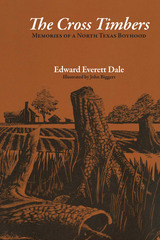 The Cross Timbers: Memories of a North Texas Boyhood
By Edward Everett Dale
University of Texas Press, 1966 The activities of a young boy on a small farm in the Texas Cross Timbers during the 1880s seem especially distant today. No one can remember the adventure of a sixteen-and-a-half-mile journey, which consumed the greater part of a day; or hurried predawn dressing in a frosty cold loft while the fragrance of a hearty breakfast wafted upward through the floor cracks; or a two-room schoolhouse, where the last half of Friday afternoon was given over to “speaking pieces” or to spelling and ciphering matches. Through the recollections of Edward Everett Dale we are able to view a pattern of life in rural America now gone forever. For The Cross Timbers is a story which, with but a few minor variations, could have been told about a vast number of small boys on farms cleared from the virgin forests in the timbered regions of many states. After presenting a brief introduction to the members of the Dale family and the plant, animal, and bird life of the Lower Cross Timbers countryside, the author describes his boyhood of a past century. He tells of his home, its furnishings, and the food served there, as well as the neighbors and relatives who come to visit. We learn of the superstitions, the humorous homespun expressions, the mores of early rural Texans. We hunt and fish with young Master Dale in the thick woods and along the clear creeks. Pioneer life demanded much hard work, but not to the exclusion of a diverting social life—both of which included the youngsters, as the author so graphically relates. Dale tells us also of the religious and secular education of the era, showing the significance of the home in supplementing these two influences. Anyone reading this volume must be impressed by the great differences in the lifeways of rural children today and of those of the end of the nineteenth century.
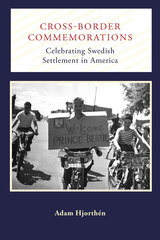 Cross-Border Commemorations: Celebrating Swedish Settlement in America
Adam Hjorthén
University of Massachusetts Press, 2018 The histories of colonial settlement in America are generally presented as uniquely national stories. Yet because these histories involved settlers who crossed oceans, they are inherently transnational and have been important for different groups throughout the world. To understand how settlement histories are used to promote social, political, and commercial relations across national borders, Adam Hjorthén explores the little-known phenomenon of cross-border commemorations.
Focusing on two celebrations of Swedish settlement in America—the 1938 New Sweden Tercentenary and the 1948 Swedish Pioneer Centennial—Hjorthén examines a wide variety of sources to demonstrate how cultural leaders, politicians, and businessmen used these events to promote international relations between the United States and Sweden during times of great geopolitical transformation. Cross-Border Commemorations argues that scholarship on public commemoration should expand beyond national borders and engage the shared and contested meanings of history across local, national, and transnational contexts.
 The Cross-Border Connection: Immigrants, Emigrants, and Their Homelands
Roger Waldinger
Harvard University Press, 2015 International migration presents the human face of globalization, with consequences that make headlines throughout the world. The Cross-Border Connection addresses a paradox at the core of this phenomenon: emigrants departing one society become immigrants in another, tying those two societies together in a variety of ways. In nontechnical language, Roger Waldinger explains how interconnections between place of origin and destination are built and maintained and why they eventually fall apart.
“When are immigrants ‘us’? When are they ‘them’? Waldinger implores readers to reframe the debate from a before-after dichotomy to a new transnational approach, revealing migrants to be here, there, and in-between at all stages of their migration tenure…The book’s real strength is in the elegance of the author’s argument, supported by evidence that transnationalism itself is not static but an ongoing dialectic.”
—R. A. Harper, Choice
“The Cross-Border Connection is to be commended for putting substance into the black box of transnationalism, offering scholars a dynamic model to account for the ebb and flow of transnationalism in the real world and yielding testable propositions about the circumstances under which cross-border connections can be expected to expand or contract.”
—Douglas S. Massey, American Journal of Sociology
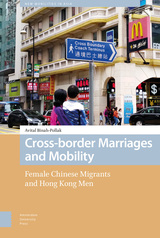 Cross-border Marriages and Mobility: Female Chinese Migrants and Hong Kong Men
Avital Binah-Pollak
Amsterdam University Press, 2019 Cross-border Marriages and Mobility: Female Chinese Migrants and Hong Kong Men focuses on cross-border marriages between mainland Chinese women and Hong Kong men, a phenomenon which is of critical importance to the transformation of Hong Kong. By examining the women’s motivations for migration and lived experiences in relation to the discursive, political, economic, and social circumstances of mainland China and Hong Kong, Avital Binah-Pollak demonstrates how these marital practices are causing the expanding and blurring of borders, so that there is a much wider strip of border in which the dichotomies of the rural/urban, periphery/center, and hybrid/national identities become more complex and negotiable. While this is particularly interesting and valid in the case of the border between mainland China and Hong Kong because of the particular nature of the relationship between these two societies, it may also apply to borders between many other societies worldwide.
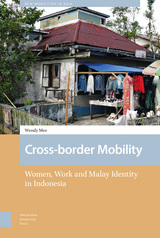 Cross-border Mobility: Women, Work and Malay Identity in Indonesia
Wendy Mee
Amsterdam University Press, 2020 Cross-border Mobility: Women, Work and Malay Identity in Indonesia offers a fresh perspective on the association between mobility and the ethnocultural category ‘Malay’. In so doing, it raises new research questions that are relevant to the study of Indonesian women’s socioeconomic mobility more generally. Based on fieldwork in Sambas, a region of Indonesia bordering Malaysia, this study documents the ethnocultural consequences of the highly mobile working lives of Sambas Malay women. Emphasising the significance of territorial borders in women’s working lives, this study highlights how women’s border location not only facilitates cross-border pathways of international labour migration and trade, but also generates feelings of peripherality that inform women’s imaginative construction of other, nonterritorial borders that need to be crossed. Shaped by social class, gender, and the economic and cultural possibilities of political decentralization, the study identifies three borderscopes that orient women’s work-related mobility and create diverse outcomes for the ethnocultural category 'Sambas Malay'.
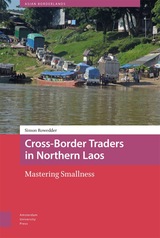 Cross-Border Traders in Northern Laos: Mastering Smallness
Simon Rowedder
Amsterdam University Press, 2022 Northern Laos has become a prominent spot in large-scale, top-down mappings and studies of neoliberal globalisation and infrastructural development linking Thailand and China, and markets further beyond. Yet in the common narrative, in which Laos appears as a weak victim helplessly exposed to its larger neighbours, attention is seldom paid to local voices. This book fills this gap. Building on long-term multi-sited fieldwork, it accompanies northern Lao cross-border traders closely in their transnational worlds of mobilities, social relations, economic experimentation and aspiration. Cross-Border Traders in Northern Laos: Mastering Smallness demonstrates that these traders’ indispensable but often invisible role in the everyday workings of the China-Laos-Thailand borderland economy relies on their rhetoric and practices of ‘smallness’—of framing their transnational trade activities in a self-deprecating manner and stressing their economic inferiority. Decoding their discursive surface of insignificance, this ethnography of ‘smallness’ foregrounds remarkable transnational social and economic skills that are mostly invisible in Sino-Southeast Asian borderland scholarship.
Cross-Cultural Design for Healthy Ageing
Edited by Lisa Scharoun, Danny Hills, Carlos Montana Hoyos, Fanke Peng, and Vivien Sung
Intellect Books, 2020 This book examines some of the challenges associated with ageing in multicultural societies. Worldwide, ageing presents a profound potential shift in design for society. The impact of the change in population balance challenges designers, planners, and health care professionals to develop solutions to better meet the needs of older citizens. Different disciplinary and cultural perspectives allow for new approaches to issues of housing, community interaction and cooperation, health and well-being, and the integration of new technologies.
Drawing from case studies, interviews with key practitioners in design and health, and practical pedagogical experience, the authors provide a framework for engaging designers, planners, and health professionals in the process of creating new design solutions for the growing global ageing population.
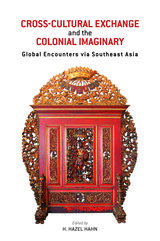 Cross-Cultural Exchange and the Colonial Imaginary: Global Encounters via Southeast Asia
Edited by H. Hazel Hahn
National University of Singapore Press, 2019 For years, the study of how culture operates in colonial contexts was dominated by the ideas of transmission and influence. Yet the more we learn, the less useful those concepts seem to be. This collection deliberately complicates the binary of colonizer and colonized in order to establish a more effective framework for understanding. The contributors address a wide range of questions, rooted in specific colonial experiences: How can a controversy about forms of deference in Java reveal tensions around colonial policies and the rise of nationalism? What was Vietnamese about the French colonial governor’s palace in Hanoi? What can the circulation of jazz in Asia tell us about its evolution, circuits of exchange, colonial culture, and its appropriation? Through such inquiries, the volume traces the multilinear trajectories of the flow of decorative objects, architectural styles, photographs, sartorial practices, music, deference rituals, and ethnographic knowledge, in a transimperial framework within and beyond Southeast Asia and Europe. Highlighting a wide range of actors along with their motivations and interactions, this volume treats cultural heritage as dynamic processes.
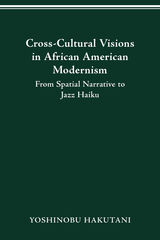 CROSS-CULTURAL VISIONS IN AFRICAN AMERICAN MODERNISM: FROM SPATIAL NARRATIVE TO JAZZ HAIKU
YOSHINOBU HAKUTANI
Ohio State University Press, 2006 Yoshinobu Hakutani traces the development of African American modernism, which initially gathered momentum with Richard Wright’s literary manifesto “Blueprint for Negro Writing” in 1937. Hakutani dissects and discusses the cross-cultural influences on the then-burgeoning discipline in three stages: American dialogues, European and African cultural visions, and Asian and African American cross-cultural visions.
In writing Black Boy, the centerpiece of the Chicago Renaissance, Wright was inspired by Theodore Dreiser. Because the European and African cultural visions that Wright, Ralph Ellison, Alice Walker, and Toni Morrison acquired were buttressed by the universal humanism that is common to all cultures, this ideology is shown to transcend the problems of society. Fascinated by Eastern thought and art, Wright, Walker, Sonia Sanchez, and James Emanuel wrote highly accomplished poetry and prose. Like Ezra Pound, Wright was drawn to classic haiku, as reflected in the 4,000 haiku he wrote at the end of his life. As W. B. Yeats’s symbolism was influenced by his cross-cultural visions of noh theatre and Irish folklore, so is James Emanuel’s jazz haiku energized by his cross-cultural rhythms of Japanese poetry and African American music.
The book demonstrates some of the most visible cultural exchanges in modern and postmodern African American literature. Such a study can be extended to other contemporary African American writers whose works also thrive on their cross-cultural visions, such as Amiri Baraka, Ishmael Reed, Charles Johnson, and haiku poet Lenard Moore.
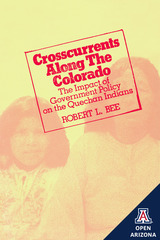 Crosscurrents Along the Colorado: The Impact of Government Policy on the Quechan Indians
Robert L. Bee
University of Arizona Press, 1981 When in 1893 the Quechan Indians of Fort Yuma, California, gave up tracts of fertile farmland in the Colorado River basin in return for Federal aid, they hardly could have anticipated the ensuing deterioration of their economic, political, and cultural self-determination. Their circumstances devolved as has often been the case with Federal Indian policy.
This intriguing book, original published in 1981, considers the Quechans as a case history of the frequent discrepancy between benevolently phrased national intention and exploitative local action. The story of their changing life is traced through the anti-poverty programs of the 1960s and '70s—showing how the implementation of these programs was affected by features of community life that had evolved over preceding decades—and culminates in the Quechans’ forging a self-sustaining though fragile economy despite their status as Federal wards.
This book is more than a product of archival research. Author Robert Bee attended Quechan public gatherings, canvassed the community, and conducted intensive interviews over a thirteen-year period to attain an intimate understanding of this people’s perseverance in the face of age-old frustration. In presenting their story, Bee focuses on the behavior and actions of individuals thrust into key decision-making roles to provide more than just abstract analysis. What emerges is not only a unique ethnohistorical approach to economic development, but a model history of a modern tribe.
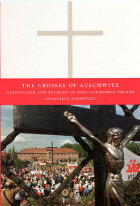 The Crosses of Auschwitz: Nationalism and Religion in Post-Communist Poland
Geneviève Zubrzycki
University of Chicago Press, 2006 In the summer and fall of 1998, ultranationalist Polish Catholics erected hundreds of crosses outside Auschwitz, setting off a fierce debate that pitted Catholics and Jews against one another. While this controversy had ramifications that extended well beyond Poland’s borders, Geneviève Zubrzycki sees it as a particularly crucial moment in the development of post-Communist Poland’s statehood and its changing relationship to Catholicism.
In The Crosses of Auschwitz, Zubrzycki skillfully demonstrates how this episode crystallized latent social conflicts regarding the significance of Catholicism in defining “Polishness” and the role of anti-Semitism in the construction of a new Polish identity. Since the fall of Communism, the binding that has held Polish identity and Catholicism together has begun to erode, creating unease among ultranationalists. Within their construction of Polish identity also exists pride in the Polish people’s long history of suffering. For the ultranationalists, then, the crosses at Auschwitz were not only symbols of their ethno-Catholic vision, but also an attempt to lay claim to what they perceived was a Jewish monopoly over martyrdom.
This gripping account of the emotional and aesthetic aspects of the scene of the crosses at Auschwitz offers profound insights into what Polishness is today and what it may become.
Crossing: A Memoir
Deirdre Nansen McCloskey
University of Chicago Press, 1999 We have read the stories of those who have "crossed" lines of race and class and culture. But few have written of crossing—completely and entirely—the gender line. Crossing is the story of Deirdre McCloskey (formerly Donald), once a golden boy of conservative economics and a child of 1950s and 1960s privilege, and her dramatic and poignant journey to becoming a woman. McCloskey's account of her painstaking efforts to learn to "be a woman" unearth fundamental questions about gender and identity, and hatreds and anxieties, revealing surprising answers.
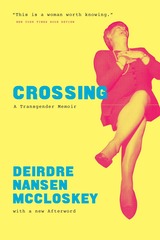 Crossing: A Transgender Memoir
Deirdre Nansen McCloskey
University of Chicago Press, 2019 A New York Times Book Review Notable Book of the Year
“I visited womanhood and stayed. It was not for the pleasures, though I discovered many I had not imagined, and many pains too. But calculating pleasures and pains was not the point. The point was who I am.”
Once a golden boy of conservative economics and a child of 1950s privilege, Deirdre McCloskey (formerly Donald) had wanted to change genders from the age of eleven. But it was a different time, one hostile to any sort of straying from the path—against gays, socialists, women with professions, men without hats, and so on—and certainly against gender transition. Finally, in 1995, at the age of fifty-three, it was time for McCloskey to cross the gender line.
Crossing is the story of McCloskey’s dramatic and poignant transformation from Donald to Dee to Deirdre. She chronicles the physical procedures and emotional evolution required and the legal and cultural roadblocks she faced in her journey to womanhood. By turns searing and humorous, this is the unflinching, unforgettable story of her transformation—what she lost, what she gained, and the women who lifted her up along the way.
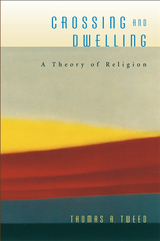 Crossing and Dwelling: A Theory of Religion
Thomas A. Tweed
Harvard University Press, 2008 Beginning with a Cuban Catholic ritual in Miami, this book takes readers on a momentous theoretical journey toward a new understanding of religion. At this historical moment, when movement across boundaries is of critical importance for all areas of human life—from media and entertainment to economy and politics—Thomas Tweed offers a powerful vision of religion in motion, dynamic, alive with crossings and flows.
A deeply researched, broadly gauged, and vividly written study of religion such as few American scholars have ever attempted, Crossing and Dwelling depicts religion in place and in movement, dwelling and crossing. Tweed considers how religion situates devotees in time and space, positioning them in the body, the home, the homeland, and the cosmos. He explores how the religious employ tropes, artifacts, rituals, and institutions to mark boundaries and to prescribe and proscribe different kinds of movements across those boundaries; and how religions enable and constrain terrestrial, corporeal, and cosmic crossings.
Drawing on insights from the natural and social sciences, Tweed’s work is grounded in the gritty particulars of distinctive religious practices, even as it moves toward ideas about cross-cultural patterns. At a time when scholars in many fields shy away from generalizations, this book offers a responsible way to think broadly about religion, a topic that is crucial for understanding the contemporary world. Lucid in explanations, engaging in presentation, rich in examples, Crossing and Dwelling has profound implications for the study and teaching of religion in our day.
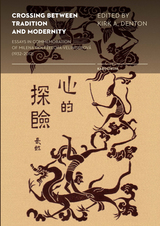 Crossing between Tradition and Modernity: Essays in Commemoriation of Milena Doležalová-Velingerová (1932–2012)
Edited by Kirk A. Denton
Karolinum Press, 2017 Crossing Between Tradition and Modernity presents thirteen essays written in honor of Milena Doleželová-Velingerová (1932–2012), a member of the Prague School of Sinology and an important scholar of Chinese literature who was at the forefront in introducing literary theory into sinology. Doleželová-Velingerová was that rare scholar who wrote with equal knowledge and skill about both modern and premodern Chinese literature. The essays emulate Doleželová-Velingerová’s scholarship in terms of treating a broad range of historical periods, literary genres, and topics—from Tang travel essays to cultural identity in postcolonial Hong Kong. Organized into two parts, “Language, Structure, and Genre,” and “Identities and Self-Representations,” the essays are motivated by an abiding concern with issues of language, narrative structure, and the complex nature of literary meaning that were at the heart of Doleželová-Velingerová’s work.
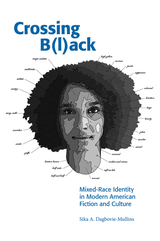 Crossing B(l)ack: Mixed-Race Identity in Modern American Fiction and Culture
Sika A. Dagbovie-Mullins
University of Tennessee Press, 2013 The past two decades have seen a growing influx of biracial discourse in fiction, memoir, and theory, and since the 2008 election of Barack Obama to the presidency, debates over whether America has entered a “post-racial” phase have set the media abuzz. In this penetrating and provocative study, Sika A. Dagbovie-Mullins adds a new dimension to this dialogue as she investigates the ways in which various mixed-race writers and public figures have redefined both “blackness” and “whiteness” by invoking multiple racial identities.
Focusing on several key novels—Nella Larsen’s Quicksand (1928), Lucinda Roy’s Lady Moses (1998), and Danzy Senna’s Caucasia (1998)—as well as memoirs by Obama, James McBride, and Rebecca Walker and the personae of singer Mariah Carey and actress Halle Berry, Dagbovie-Mullins challenges conventional claims about biracial identification with a concept she calls “black-sentient mixed-race identity.” Whereas some multiracial organizations can diminish blackness by, for example, championing the inclusion of multiple-race options on census forms and similar documents, a black-sentient consciousness stresses a perception rooted in blackness—“a connection to a black consciousness,” writes the author, “that does not overdetermine but still plays a large role in one’s racial identification.” By examining the nuances of this concept through close readings of fiction, memoir, and the public images of mixed-race celebrities, Dagbovie-Mullins demonstrates how a “black-sentient mixed-race identity reconciles the widening separation between black/white mixed race and blackness that has been encouraged by contemporary mixed-race politics and popular culture.”
A book that promises to spark new debate and thoughtful reconsiderations of an especially timely topic, Crossing B(l)ack recognizes and investigates assertions of a black-centered mixed-race identity that does not divorce a premodern racial identity from a postmodern racial fluidity.
Crossing Borderlands: Composition And Postcolonial Studies
Andrea Lunsford
University of Pittsburgh Press, 2004
On the surface, postcolonial studies and composition studies appear to have little in common. However, they share a strikingly similar goal: to provide power to the words and actions of those who have been marginalized or oppressed. Postcolonial studies accomplishes this goal by opening a space for the voices of “others” in traditional views of history and literature. Composition studies strives to empower students by providing equal access to higher education and validation for their writing.
For two fields that have so much in common, very little dialogue exists between them. Crossing Borderlands attempts to establish such an exchange in the hopes of creating a productive “borderland” where they can work together to realize common goals.
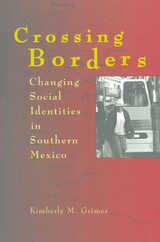 Crossing Borders: Changing Social Identities in Southern Mexico
Kimberly M. Grimes
University of Arizona Press, 1998 "Defining borders is a complex task, especially today as globalization accelerates at an unprecedented rate. We have entered a transnational age, one in which borders are more porous." So says Kimberly M. Grimes in Crossing Borders: Changing Social Identities in Southern Mexico, her investigation of migration to the United States from Putla de Guerrero, Oaxaca. Featuring testimonies of residents and migrants, Grimes allows local voices to describe the ways in which Putlecans find themselves negotiating among competing social values. The testaments of the Putlecans indicate that the changes occurring in their small town as a result of the circular migration to and from such immigrant enclaves as Atlantic City, New Jersey, are viewed with mixed emotions. Putlecans recognize the financial need to migrate north but they rue the increased consumerism, pollution, and trash that comes with the rising wealth. Men show off by driving their fancy cars with New Jersey tags around the tiny Mexican town, but influenced by Anglo culture, they also provide greater assistance in child care and housework. Women find the sexual and social freedoms of the United States liberating, but they still return home to baptize their babies. Grimes reminds us, however, that the Putlecans are not passive recipients of change but are actively embracing it, creating it, and mediating it. By reaching across the border to investigate migration, Grimes shows us that social and cultural change are not just the result of national and transnational influences, but are also locally negotiated phenomena.
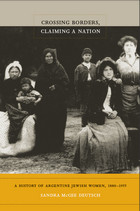 Crossing Borders, Claiming a Nation: A History of Argentine Jewish Women, 1880–1955
Sandra McGee Deutsch
Duke University Press, 2010 In Crossing Borders, Claiming a Nation, Sandra McGee Deutsch brings to light the powerful presence and influence of Jewish women in Argentina. The country has the largest Jewish community in Latin America and the third largest in the Western Hemisphere as a result of large-scale migration of Jewish people from European and Mediterranean countries from the 1880s through the Second World War. During this period, Argentina experienced multiple waves of political and cultural change, including liberalism, nacionalismo, and Peronism. Although Argentine liberalism stressed universal secular education, immigration, and individual mobility and freedom, women were denied basic citizenship rights, and sometimes Jews were cast as outsiders, especially during the era of right-wing nacionalismo. Deutsch’s research fills a gap by revealing the ways that Argentine Jewish women negotiated their own plural identities and in the process participated in and contributed to Argentina’s liberal project to create a more just society. Drawing on extensive archival research and original oral histories, Deutsch tells the stories of individual women, relating their sentiments and experiences as both insiders and outsiders to state formation, transnationalism, and cultural, political, ethnic, and gender borders in Argentine history. As agricultural pioneers and film stars, human rights activists and teachers, mothers and doctors, Argentine Jewish women led wide-ranging and multifaceted lives. Their community involvement—including building libraries and secular schools, and opposing global fascism in the 1930s and 1940s—directly contributed to the cultural and political lifeblood of a changing Argentina. Despite their marginalization as members of an ethnic minority and as women, Argentine Jewish women formed communal bonds, carved out their own place in society, and ultimately shaped Argentina’s changing pluralistic culture through their creativity and work.
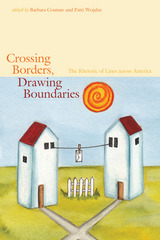 Crossing Borders, Drawing Boundaries: The Rhetoric of Lines across America
Barbara Couture
Utah State University Press, 2016 With growing anxiety about American identity fueling debates about the nation’s borders, ethnicities, and languages, Crossing Borders, Drawing Boundaries provides a timely and important rhetorical exploration of divisionary bounds that divide an Us from a Them. The concept of “border” calls for attention, and the authors in this collection respond by describing it, challenging it, confounding it, and, at times, erasing it. Motivating us to see anew the many lines that unite, divide, and define us, the essays in this volume highlight how discourse at borders and boundaries can create or thwart conditions for establishing identity and admitting difference. Each chapter analyzes how public discourse at the site of physical or metaphorical borders presents or confounds these conditions and, consequently, effective participation—a key criterion for a modern democracy. The settings are various, encompassing vast public spaces such as cities and areas within them; the rhetorical spaces of history books, museum displays, activist events, and media outlets; and the intimate settings of community and classroom conversations. Crossing Borders, Drawing Boundaries shows how rich communication can be when diverse cultures intersect and create new opportunities for human connection, even while different populations, cultures, age groups, and political parties adopt irreconcilable positions. It will be of interest to scholars in rhetoric and literacy studies and students in rhetorical analysis and public discourse.
Contributors include Andrea Alden, Cori Brewster, Robert Brooke, Randolph Cauthen, Jennifer Clifton, Barbara Couture, Vanessa Cozza, Anita C. Hernández, Roberta J. Herter, Judy Holiday, Elenore Long, José A. Montelongo, Karen P. Peirce, Jonathan P. Rossing, Susan A. Schiller, Christopher Schroeder, Tricia C. Serviss, Mónica Torres, Kathryn Valentine, Victor Villanueva, and Patti Wojahn.
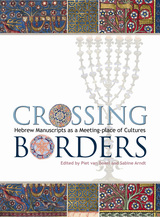 Crossing Borders: Hebrew Manuscripts as a Meeting-place of Cultures
Edited by Piet van Boxel and Sabine Arndt
Bodleian Library Publishing, 2010 Crossing Borders tells the intriguing but largely unfamiliar story of the exchange of culture and knowledge between Jews and non-Jews in the Muslim and Christian worlds during the late Middle Ages as part of the preparation of Hebrew manuscripts. The book is composed of ten narratives, each of which brings to light a different aspect of Jewish life in a non-Jewish medieval society—highlighting the practical cooperation, social interaction, and religious toleration that was surprisingly common between the groups involved in the early enterprise of book production.
Alongside the narratives, Crossing Borders is beautifully illustrated with images from the Hebrew holdings at the Bodleian Library—one of the largest and most important collections of Hebrew manuscripts worldwide. The art includes Christian codex fragments from the third century, a copy of Moses Maimonides’ Mishneh Torah signed by Maimonides himself, a thirteenth century German Jewish prayer book, and lavishly illuminated Spanish Bible manuscripts from the fifteenth century. This exquisitely illustrated book takes a fascinating look at the often-ignored role of Jews in the written transmission of culture and science throughout medieval Europe.
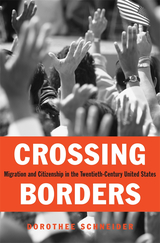 Crossing Borders: Migration and Citizenship in the Twentieth-Century United States
Dorothee Schneider
Harvard University Press, 2011 Aspiring immigrants to the United States make many separate border crossings in their quest to become Americans—in their home towns, ports of departure, U.S. border stations, and in American neighborhoods, courthouses, and schools. In a book of remarkable breadth, Dorothee Schneider covers both the immigrants’ experience of their passage from an old society to a new one and American policymakers’ debates over admission to the United States and citizenship. Bringing together the separate histories of Irish, English, German, Italian, Jewish, Chinese, Japanese, and Mexican immigrants, the book opens up a fresh view of immigrant aspirations and government responses.
Ingenuity and courage emerge repeatedly from these stories, as immigrants adapted their particular resources, especially social networks, to make migration and citizenship successful on their own terms. While officials argued over immigrants’ fitness for admission and citizenship, immigrant communities forced the government to alter the meaning of race, class, and gender as criteria for admission. Women in particular made a long transition from dependence on men to shapers of their own destinies.
Schneider aims to relate the immigrant experience as a totality across many borders. By including immigrant voices as well as U.S. policies and laws, she provides a truly transnational history that offers valuable perspectives on current debates over immigration.
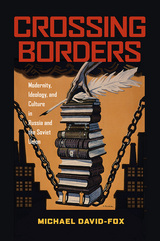 Crossing Borders: Modernity, Ideology, and Culture in Russia and the Soviet Union
Michael David-Fox
University of Pittsburgh Press, 2015 Crossing Borders deconstructs contemporary theories of Soviet history from the revolution through the Stalin period, and offers new interpretations based on a transnational perspective. To Michael David-Fox, Soviet history was shaped by interactions across its borders. By reexamining conceptions of modernity, ideology, and cultural transformation, he challenges the polarizing camps of Soviet exceptionalism and shared modernity and instead strives for a theoretical and empirical middle ground as the basis for a creative and richly textured analysis.
Discussions of Soviet modernity have tended to see the Soviet state either as an archaic holdover from the Russian past, or as merely another form of conventional modernity. David-Fox instead considers the Soviet Union in its own light—as a seismic shift from tsarist society that attracted influential visitors from the pacifist Left to the fascist Right. By reassembling Russian legacies, as he shows, the Soviet system evolved into a complex “intelligentsia-statist” form that introduced an array of novel agendas and practices, many embodied in the unique structures of the party-state. Crossing Borders demonstrates the need for a new interpretation of the Russian-Soviet historical trajectory—one that strikes a balance between the particular and the universal.
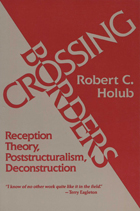 Crossing Borders: Reception Theory, Poststructuralism, Deconstruction
Robert C. Holub
University of Wisconsin Press, 1992 Robert C. Holub critically investigates the histories of reception theory, poststructuralism, and deconstruction in postwar Germany and the United States. He looks at how imported theories assume a place in the political discourse of a country, and how indigenous intellectual traditions and prejudices affect, modify, or even distort foreign theories.
Holub addresses many timely questions: Why did reception theory, so prominent in Germany in the 1960s and 1970s, fail to have an impact on American academics until the 1980s? Why did postructuralism, and specifically the writings of Michel Foucault, fail to find a home in German academia while becoming an important theoretical voice in the United States? How did deconstruction, originally considered by American scholars as merely a sophisticated tool for analysis, get taken up by leftists who argued for an affinity between the critique of language and the critique of capitalism? And finally, how have American intellectuals responded to revelations of fascism in the pasts of Paul de Man and Martin Heidegger?
Crossing Borders effectively demonstrates the extent to which theoretical work needs to be understood in cultural, intellectual, and institutional contexts. Holub argues that the praxis of theories is determined not only by their content and style, but also by the environment in which they must function. The success of a transplanted theory, he contends, is due less to its inherent merits than to the hospitability of the environment on to which it is grafted.
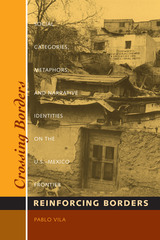 Crossing Borders, Reinforcing Borders: Social Categories, Metaphors, and Narrative Identities on the U.S.-Mexico Frontier
By Pablo Vila
University of Texas Press, 2000 Along the U.S.-Mexico frontier, where border crossings are a daily occurrence for many people, reinforcing borders is also a common activity. Not only does the U.S. Border Patrol strive to "hold the line" against illegal immigrants, but many residents on both sides of the border seek to define and bound themselves apart from groups they perceive as "others." This pathfinding ethnography charts the social categories, metaphors, and narratives that inhabitants of El Paso and Ciudad Juárez use to define their group identity and distinguish themselves from "others." Pablo Vila draws on over 200 group interviews with more than 900 area residents to describe how Mexican nationals, Mexican immigrants, Mexican Americans, African Americans, and Anglos make sense of themselves and perceive their differences from others. This research uncovers the regionalism by which many northern Mexicans construct their sense of identity, the nationalism that often divides Mexican Americans from Mexican nationals, and the role of ethnicity in setting boundaries among Anglos, Mexicans, and African Americans. Vila also looks at how gender, age, religion, and class intertwine with these factors. He concludes with fascinating excerpts from re-interviews with several informants, who modified their views of other groups when confronted by the author with the narrative character of their identities.
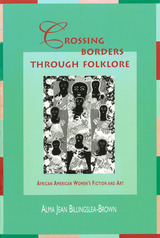 Crossing Borders through Folklore: African American Women's Fiction and Art
Alma Jean Billingslea-Brown
University of Missouri Press, 1999 Examining works by Toni Morrison, Paule Marshall, Faith Ringgold, and Betye Saar, this innovative book frames black women's aesthetic sensibilities across art forms. Investigating the relationship between vernacular folk culture and formal expression, this study establishes how each of the four artists engaged the identity issues of the 1960s and used folklore as a strategy for crossing borders in the works they created during the following two decades. As a dynamic, open-ended process, folklore historically has enabled African-descended people to establish differential identity, resist dominance, and affirm group solidarity. This book documents the use of expressive forms of folklore in the fiction of Morrison and Marshall and the use of material forms of folklore in the visual representations of Ringgold and Saar. Offering a conceptual paradigm of a folk aesthetic to designate the practices these women use to revise and reverse meanings—especially meanings imposed on images such as Aunt Jemima and Sambo—Crossing Borders through Folklore explains how these artists locate sites of intervention and reconnection. From these sites, in keeping with the descriptive and prescriptive formulations for art during the sixties, Morrison, Marshall, Ringgold, and Saar articulate new dimensions of consciousness and creatively theorize identity. Crossing Borders through Folklore is a significant and creative contribution to scholarship in both established and still- emerging fields. This volume also demonstrates how recent theorizing across scholarly disciplines has created elastic metaphors that can be used to clarify a number of issues. Because of its interdisciplinary approach, this study will appeal to students and scholars in many fields, including African American literature, art history, women's studies, diaspora studies, and cultural studies.
 Crossing Boundaries for Intergovernmental Management
Robert Agranoff
Georgetown University Press, 2017 Today, the work of government often involves coordination at the federal, state, and local levels as well as with contractors and citizens’ groups. This process of governance across levels of government, jurisdictions, and types of actors is called intergovernmental relations, and intergovernmental management (IGM) is the way work is administered in this increasingly complex system. Leading authority Robert Agranoff reintroduces intergovernmental management for twenty-first-century governance to a new generation of scholars, students, and practitioners. Agranoff examines IGM in the United States from four thematic perspectives: law and politics, jurisdictional interdependency, multisector partners, and networks and networking. Common wisdom holds that government has “hollowed out” despite this present era of contracting and networked governance, but he argues that effective intergovernmental management has never been more necessary or important. He concludes by offering six next steps for intergovernmental management.
Crossing Boundaries: Traditions and Transformations in Law and Society Research
Austin Sarat
Northwestern University Press, 1998 Perhaps no idea is more emblematic of the field of law and society than crossing boundaries. From the founding of the Law and Society Association in the early 1960s, participating scholars aspired to create a field that crossed boundaries in at least two senses: by undertaking research that questioned and often bridged traditional methodological and disciplinary divisions, and by using nontraditional approaches to explore the interconnections between law and its social context. These essays reflect both aspirations.
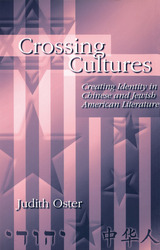 Crossing Cultures: Creating Identity in Chinese and Jewish American Literature
Judith Oster
University of Missouri Press, 2003
In this important new study, Judith Oster looks at the literature of Chinese Americans and Jewish Americans in relation to each other. Examining what is most at issue for both groups as they live between two cultures, languages, and environments, Oster focuses on the struggles of protagonists to form identities that are necessarily bicultural and always in process. Recognizing what poststructuralism has demonstrated regarding the instability of the subject and the impossibility of a unitary identity, Oster contends that the writers of these works are attempting to shore up the fragments, to construct, through their texts, some sort of wholeness and to answer at least partially the questions Who am I? and Where do I belong?
Oster also examines the relationship of the reader to these texts. When encountering texts written by and about “others,” readers enter a world different from their own, only to find that the book has become mirrorlike, reflecting aspects of themselves: they encounter identity struggles that are familiar but writ large, more dramatic, and set in alien environments.
Among the figures Oster considers are writers of autobiographical works like Maxine Hong Kingston and Eva Hoffman and writers of fiction: Amy Tan, Anzia Yezierska, Henry Roth, Philip Roth, Cynthia Ozick, Lan Samantha Chang, and Frank Chin. In explicating their work, Oster uses Lacan’s idea of the “mirror stage,” research in language acquisition and bilingualism, the reader-response theories of Iser and Wimmers, and the identity theories of Charles Taylor, Emile Benveniste, and others.
Oster provides detailed analyses of mirrors and doubling in bicultural texts; the relationships between language and identity and between language and culture; and code-switching and interlanguage (English expressed in a foreign syntax). She discusses food and hunger as metaphors that express the urgent need to hear and tell stories on the part of those forging a bicultural identity. She also shows how American schooling can undermine the home culture’s deepest values, exacerbating children’s conflicts within their families and within themselves. In a chapter on theories of autobiography, Oster looks at the act of writing and how the page becomes a home that bicultural writers create for themselves. Written in an engaging, readable style, this is a valuable contribution to the field of multicultural literary criticism.
Crossing Cultures: Essays in the Displacement of Western Civilization
Daniel Segal
University of Arizona Press, 1992 Through re-examination of colonial and post-colonial encounters, this collection of essays makes a strategic intervention into the current debate over the study of "Western Civilization." Together they question whether, at least since Columbus, "the West" has existed independent of its relations with those deemed Other.
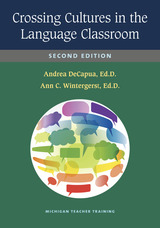 Crossing Cultures in the Language Classroom, Second Edition
Andrea DeCapua, Ed.D., and Ann C. Wintergerst, Ed.D.
University of Michigan Press, 2016 A MICHIGAN TEACHER TRAINING title Teachers are often in the forefront of today’s cross-cultural contact, whether in the language classroom or in the K–12 or university/college classroom, but they are not always prepared to handle the various issues that can arise in terms of cross-cultural communication. The intent of this book is to make education in cross-cultural awareness accessible to a broad range of teachers working in a variety of educational settings. Crossing Cultures in the Language Classroom attempts to balance theory and practice for pre-service and in-service teachers in general education programs or in ESL/EFL, bilingual, and foreign language teacher training programs, as well as cross-cultural awareness workshops. This book is unique in that it combines theory with a wide range of experiential activities and projects designed to actively engage users in the process of understanding different aspects of cross-cultural awareness. The goals of the book are to help readers: - expand cultural awareness of one’s own culture and that of others
- achieve a deeper understanding of what culture is and the relationship between culture and language
- acquire the ability to observe behaviors in order to draw conclusions based on observation rather than preconceptions
- understand and implement observations of cultural similarities and differences
- develop an attitude of tolerance toward cultural differences and move away from the “single story.”
The new edition has been thoroughly updated and includes a Suggested Projects section in each chapter. This section provides opportunities for users of the text to explore in greater depth an area and topic of interest. It also includes even more Critical Incidents--brief descriptions of events that depict some element or elements of cultural differences, miscommunication, or culture clash. Critical Incidents develop users’ ability to analyze and understand how multiple perspectives of the same situation are rooted in differing culturally influenced beliefs, behaviors, norms of interaction, and worldviews.
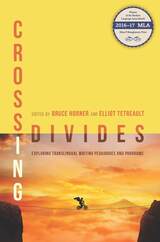 Crossing Divides: Exploring Translingual Writing Pedagogies and Programs
Bruce Horner
Utah State University Press, 2017 Translingualism perceives the boundaries between languages as unstable and permeable; this creates a complex challenge for writing pedagogy. Writers shift actively among rhetorical strategies from multiple languages, sometimes importing lexical or discoursal tropes from one language into another to introduce an effect, solve a problem, or construct an identity. How to accommodate this reality while answering the charge to teach the conventions of one language can be a vexing problem for teachers. Crossing Divides offers diverse perspectives from leading scholars on the design and implementation of translingual writing pedagogies and programs. The volume is divided into four parts. Part 1 outlines methods of theorizing translinguality in writing and teaching. Part 2 offers three accounts of translingual approaches to the teaching of writing in private and public colleges and universities in China, Korea, and the United States. In Part 3, contributors from four US institutions describe the challenges and strategies involved in designing and implementing a writing curriculum with a translingual approach. Finally, in Part 4, three scholars respond to the case studies and arguments of the preceding chapters and suggest ways in which writing teachers, scholars, and program administrators can develop translingual approaches within their own pedagogical settings. Illustrated with concrete examples of teachers’ and program directors’ efforts in a variety of settings, as well as nuanced responses to these initiatives from eminent scholars of language difference in writing, Crossing Divides offers groundbreaking insight into translingual writing theory, practice, and reflection. Contributors: Sara Alvarez, Patricia Bizzell, Suresh Canagarajah, Dylan Dryer, Chris Gallagher, Juan Guerra, Asao B. Inoue, William Lalicker, Thomas Lavelle, Eunjeong Lee, Jerry Lee, Katie Malcolm, Kate Mangelsdorf, Paige Mitchell, Matt Noonan, Shakil Rabbi, Ann Shivers-McNair, Christine M. Tardy
 Crossing Empires: Taking U.S. History into Transimperial Terrain
Kristin L. Hoganson and Jay Sexton, editors
Duke University Press, 2020 Weaving U.S. history into the larger fabric of world history, the contributors to Crossing Empires de-exceptionalize the American empire, placing it in a global transimperial context. They draw attention to the breadth of U.S. entanglements with other empires to illuminate the scope and nature of American global power as it reached from the Bering Sea to Australia and East Africa to the Caribbean. With case studies ranging from the 1830s to the late twentieth century, the contributors address topics including diplomacy, governance, anticolonialism, labor, immigration, medicine, religion, and race. Their transimperial approach—whether exemplified in examinations of U.S. steel corporations partnering with British imperialists to build the Ugandan railway or the U.S. reliance on other empires in its governance of the Philippines—transcends histories of interimperial rivalries and conflicts. In so doing, the contributors illuminate the power dynamics of seemingly transnational histories and the imperial origins of contemporary globality.
Contributors. Ikuko Asaka, Oliver Charbonneau, Genevieve Clutario, Anne L. Foster, Julian Go, Michel Gobat, Julie Greene, Kristin L. Hoganson, Margaret D. Jacobs, Moon-Ho Jung, Marc-William Palen, Nicole M. Phelps, Jay Sexton, John Soluri, Stephen Tuffnell
 Crossing Gender Boundaries: Fashion to Create, Disrupt and Transcend
Edited by Andrew Reilly and Ben Barry
Intellect Books, 2020 This volume presents a collection of the most recent knowledge on the relationship between gender and fashion in historical and contemporary contexts. Through fourteen essays divided into three segments—how dress creates, disrupts, and transcends gender—the essays investigate gender issues through the lens of fashion. Crossing Gender Boundaries first examines how clothing has been, and continues to be, used to create and maintain the binary gender division that has come to permeate Western and westernized cultures. Next, it explores how dress can be used to contest and subvert binary gender expectations, before a final section that considers the meaning of gender and how dress can transcend it, focusing on unisex and genderless clothing. The essays consider how fashion can both constrict and free gender expression, explore the ways dress and gender are products of one other, and illuminate the construction of gender through social norms. Readers will find that through analysis of the relationship between gender and fashion, they gain a better understanding of the world around them.
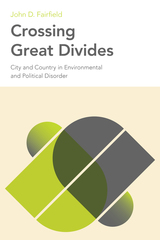 Crossing Great Divides: City and Country in Environmental and Political Disorder
John D. Fairfield
Temple University Press, 2024 Ranging across two centuries of American history, Crossing Great Divides argues that the habit of construing city and country as opposites is at the root of our current environmental and political disorder. This oversimplifying dualism has distorted how we planned cities, our patterns of production and consumption, how we deal with waste, and how urban and rural populations perceive each other.
Conventional urban environmental reform has made modern city life possible, but it has done little to limit the despoliation of distant places. Nevertheless, the successes of urban environmental reform remind us of what is possible.
John Fairfield concludes with a case study of Phoenix, Arizona to demonstrate this dysfunctional relationship between city and country while developing a sympathetic critique of the Green New Deal. He suggests how we might bridge the “great divide” as we face the daunting challenges the twenty-first century is pressing upon us.
Crossing Jerusalem: Journeys at the Centre of the World’s Trouble
Nicholas Woodsworth
Haus Publishing, 2010 Jerusalem is not an ordinary city and Crossing Jerusalem is not a standard telling of its story. At once a traditional travelogue, a questioning of spiritual values, and an examination of the beliefs that have sustains Jerusalem’s populations through centuries of conflict and division, this book offers an unusual yet penetrating perspective of the city and its inhabitancies.
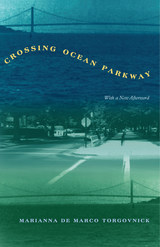 Crossing Ocean Parkway
Marianna De Marco Torgovnick
University of Chicago Press, 1994 Growing up an Italian-American in the Bensonhurst neighborhood of New York city, Marianna De Marco longed for college, culture, and upward mobility. Her daydreams circled around WASP (White Anglo Saxon Protestant) heroes on television—like Robin Hood and the Cartwright family—but in Brooklyn she never encountered any. So she associated moving up with Ocean Parkway, a street that divides the working-class Italian neighborhood where she was born from the middle-class Jewish neighborhood into which she married. This book is Torgovnick's unflinching account of crossing cultural boundaries in American life, of what it means to be an Italian American woman who became a scholar and literary critic.
Included are autobiographical moments interwoven with engrossing interpretations of American cultural icons from Dr. Dolittle to Lionel Trilling, The Godfather to Camille Paglia. Her experiences allow her to probe the cultural tensions in America caused by competing ideas of individuality and community, upward mobility and ethnic loyalty, acquisitiveness and spirituality.
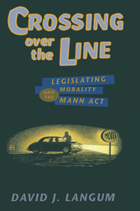 Crossing over the Line: Legislating Morality and the Mann Act
David J. Langum
University of Chicago Press, 1994 Crossing over the Line describes the folly of the Mann Act of 1910—a United States law which made travel from one state to another by a man and a woman with the intent of committing an immoral act a major crime. Spawned by a national wave of "white slave trade" hysteria, the Act was created by the Congress of the United States as a weapon against forced prostitution.
This book is the first history of the Mann Act's often bizarre career, from its passage to the amendment that finally laid it low. In David J. Langum's hands, the story of the Act becomes an entertaining cautionary tale about the folly of legislating private morality.
Langum recounts the colorful details of numerous court cases to show how enforcement of the Act mirrored changes in America's social attitudes. Federal prosecutors became masters in the selective use of the Act: against political opponents of the government, like Charlie Chaplin; against individuals who eluded other criminal charges, like the Capone mobster "Machine Gun" Jack McGurn; and against black men, like singer Chuck Berry and boxer Jack Johnson, who dared to consort with white women. The Act engendered a thriving blackmail industry and was used by women like Frank Lloyd Wright's wife to extort favorable divorce settlements.
"Crossing over the Line is a work of scholarship as wrought by a civil libertarian, and the text . . . sizzles with the passion of an ardent believer in real liberty under reasonable laws."—Jonathan Kirsch, Los Angeles Times
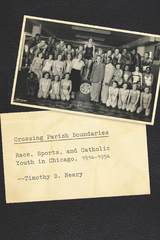 Crossing Parish Boundaries: Race, Sports, and Catholic Youth in Chicago, 1914-1954
Timothy B. Neary
University of Chicago Press, 2016 Controversy erupted in spring 2001 when Chicago’s mostly white Southside Catholic Conference youth sports league rejected the application of the predominantly black St. Sabina grade school. Fifty years after Brown v. Board of Education, interracialism seemed stubbornly unattainable, and the national spotlight once again turned to the history of racial conflict in Catholic parishes. It’s widely understood that midcentury, working class, white ethnic Catholics were among the most virulent racists, but, as Crossing Parish Boundaries shows, that’s not the whole story.
In this book, Timothy B. Neary reveals the history of Bishop Bernard Sheil’s Catholic Youth Organization (CYO), which brought together thousands of young people of all races and religions from Chicago’s racially segregated neighborhoods to take part in sports and educational programming. Tens of thousands of boys and girls participated in basketball, track and field, and the most popular sport of all, boxing, which regularly filled Chicago Stadium with roaring crowds. The history of Bishop Sheil and the CYO shows a cosmopolitan version of American Catholicism, one that is usually overshadowed by accounts of white ethnic Catholics aggressively resisting the racial integration of their working-class neighborhoods. By telling the story of Catholic-sponsored interracial cooperation within Chicago, Crossing Parish Boundaries complicates our understanding of northern urban race relations in the mid-twentieth century.
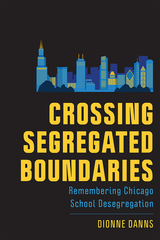 Crossing Segregated Boundaries: Remembering Chicago School Desegregation
Dionne Danns
Rutgers University Press, 2021 Scholars have long explored school desegregation through various lenses, examining policy, the role of the courts and federal government, resistance and backlash, and the fight to preserve Black schools. However, few studies have examined the group experiences of students within desegregated schools. Crossing Segregated Boundaries centers the experiences of over sixty graduates of the class of 1988 in three desegregated Chicago high schools. Chicago’s housing segregation and declining white enrollments severely curtailed the city’s school desegregation plan, and as a result desegregation options were academically stratified, providing limited opportunities for a chosen few while leaving the majority of students in segregated, underperforming schools. Nevertheless, desegregation did provide a transformative opportunity for those students involved. While desegregation was the external impetus that brought students together, the students themselves made integration possible, and many students found that the few years that they spent in these schools had a profound impact on broadening their understanding of different racial and ethnic groups. In very real ways, desegregated schools reduced racial isolation for those who took part.
Crossing the Aisle: How Bipartisanship Brought Tennessee to the Twenty-First Century and Could Save America
Keel Hunt
Vanderbilt University Press, 2018 The latter third of the twentieth century was a time of fundamental political transition across the South as increasing numbers of voters began to choose Republican candidates over Democrats. Yet in the 1980s and '90s, reform-focused policymaking—from better schools to improved highways and health care—flourished in Tennessee. This was the work of moderate leaders from both parties who had a capacity to work together "across the aisle." The Tennessee story, as the Pulitzer Prize–winning author Jon Meacham observes in his foreword to this book, offers striking examples of bipartisan cooperation on many policy fronts—and a mode of governing that provides lessons for America in this frustrating era of partisan stalemate. For more on Crossing the Aisle and author Keel Hunt, visit KeelHunt.com.
Crossing the Aisle: How Bipartisanship Brought Tennessee to the Twenty-First Century and Could Save America
Keel Hunt
Vanderbilt University Press, 2018 The latter third of the twentieth century was a time of fundamental political transition across the South as increasing numbers of voters began to choose Republican candidates over Democrats. Yet in the 1980s and '90s, reform-focused policymaking—from better schools to improved highways and health care—flourished in Tennessee. This was the work of moderate leaders from both parties who had a capacity to work together "across the aisle." The Tennessee story, as the Pulitzer Prize–winning author Jon Meacham observes in his foreword to this book, offers striking examples of bipartisan cooperation on many policy fronts—and a mode of governing that provides lessons for America in this frustrating era of partisan stalemate. For more on Crossing the Aisle and author Keel Hunt, visit KeelHunt.com.
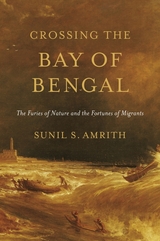 Crossing the Bay of Bengal: The Furies of Nature and the Fortunes of Migrants
Sunil S. Amrith
Harvard University Press, 2013 The Indian Ocean was global long before the Atlantic, and today the countries bordering the Bay of Bengal—India, Bangladesh, Burma, Sri Lanka, Thailand, and Malaysia—are home to one in four people on Earth. Crossing the Bay of Bengal places this region at the heart of world history for the first time. Integrating human and environmental history, and mining a wealth of sources, Sunil Amrith gives a revelatory and stirring new account of the Bay and those who have inhabited it.
For centuries the Bay of Bengal served as a maritime highway between India and China, and then as a battleground for European empires, all while being shaped by the monsoons and by human migration. Imperial powers in the nineteenth century, abetted by the force of capital and the power of steam, reconfigured the Bay in their quest for coffee, rice, and rubber. Millions of Indian migrants crossed the sea, bound by debt or spurred by drought, and filled with ambition. Booming port cities like Singapore and Penang became the most culturally diverse societies of their time. By the 1930s, however, economic, political, and environmental pressures began to erode the Bay’s centuries-old patterns of interconnection.
Today, rising waters leave the Bay of Bengal’s shores especially vulnerable to climate change, at the same time that its location makes it central to struggles over Asia’s future. Amrith’s evocative and compelling narrative of the region’s pasts offers insights critical to understanding and confronting the many challenges facing Asia in the decades ahead.
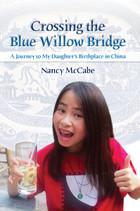 Crossing the Blue Willow Bridge: A Journey to My Daughter's Birthplace in China
Nancy McCabe
University of Missouri Press, 2011 Even before Nancy McCabe and her daughter, Sophie, left for China, it was clear that, as the mother of an adopted child from China, McCabe would be seeing the country as a tourist while her daughter, who was seeing the place for the first time in her memory, was “going home.” Part travelogue, part memoir, Crossing the Blue Willow Bridge immerses readers in an absorbing and intimate exploration of place and its influence on the meaning of family. A sequel to Meeting Sophie, which tells McCabe’s story of adopting Sophie as a single woman, Crossing the Blue Willow Bridge picks up a decade later with a much different Sophie—a ten-year-old with braces who wears black nail polish, sneaks eyeliner, wears clothing decorated with skulls, and has mixed feelings about being one of the few non-white children in the little Pennsylvania town where they live. Since she was young, Sophie had felt a closeness to the country of her birth and held it in an idealized light. At ten, she began referring to herself as Asian instead of Asian-American. It was McCabe’s hope that visiting China would “help her become comfortable with both sides of the hyphen, figure out how to be both Chinese and American, together.” As an adoptive parent of a foreign-born child, McCabe knows that homeland visits are an important rite of passage to help children make sense of the multiple strands of their heritage, create their own hybrid traditions, and find their particular place in the world. Yet McCabe, still reeling from her mother’s recent death, wonders how she can give any part of Sophie back to her homeland. She hopes that Sophie will find affirmation and connection in China, even as she sees firsthand some of the realities of China—overpopulation, pollution, and an oppressive government—but also worries about what that will mean for their relationship. Throughout their journey on a tour for adopted children, mother and daughter experience China very differently. New tensions and challenges emerge, illuminating how closely intertwined place is with sense of self. As the pair learn to understand each other, they lay the groundwork for visiting Sophie’s orphanage and birth village, life-changing experiences for them both.
|
|
